

UNITYWATER CEO ANNA JACKSON ON CREATING A SUSTAINABLE UTILITY
HORIZON POWER UNLOCKS CLEAN ENERGY POTENTIAL WITH DERMS

WEARABLE TECH AT THE FOREFRONT OF WORKER SAFETY
WATER SEWER ELECTRICITY GAS www.utilitymagazine.com.au Issue #36, November 2022


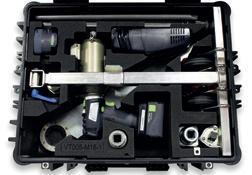

Easy transportation Simple implementation Operator and equipment safety 1300 FMT FMT (368 368) Melbourne 1/53-57 Rimfire Drive Hallam VIC 3803 Brisbane 2/5 Percy Drive Brendale QLD 4500 Perth 3/48 Hardey Road Belmont WA 6104 The water supply operator’s kit H2O WATER KIT


As you can see from this issue’s cover image, I interviewed Unitywater’s new CEO, Anna Jackson, on current challenges and innovations in the water sector, and her vision for the utility. While our chat covered a few different topics, there was one clear underlying theme to everything we talked about, and that was sustainability.
Whether we were discussing recent projects, digital transformation, or the next generation of utility workers, the clear message was that everything needs to be embedded with a sustainable lens if we’re going to be successful in meeting future demand. It was a great conversation, which you can find on page 24.
This theme is even more present in the energy sector as it continues to undergo its own transition to renewable energy. We have a lengthy feature on renewables, looking at everything from the impact of Horizon Power’s Distributed Energy Resources Management System (DERMS), to construction of the country’s largest approved grid-forming battery, and specifics on what future solar technologies will look like.
The impact of not focusing on climate change can also be seen in our disaster management feature where Tweed Council have outlined their ongoing flood response and recovery and the resilience measures in place to help prepare for future events.

Safety is also a critical topic across the utility sector and there are constantly new innovations and technologies that are helping keep our networks and workers safe. On the employee side of things, SA Water is trialling smart wearable devices to explore how technology can lead to greater health and wellbeing outcomes. While Endeavour Energy is focusing on training energy workers to meet new skills requirements in a changing electricity supply industry.
This edition of the magazine – the last for 2022 – also explores the important topics of pipeline integrity and leak detection and what water utilities can do when it comes to proactive management and maintenance; the latest in Horizontal Directional Drilling (HDD) and corrosion; as well as the role home energy management plays in energy efficiency and keeping bills low for customers.
As we near the end of the year, this is often a time for utilities and organisations to reflect and put in place plans for 2023. Utility Magazine has had a great year with in-person events returning, and our own virtual Digital Utilities Conference being held in June, as well as the fantastic support we continue to receive from utilities all around Australia. So thank you for your involvement and interest in the magazine, and we can’t wait to grow even more next year.
Jessica Dickers Editor
Managing Editor Jessica Dickers Assistant Editor Mikayla Bridge Journalists Lauren DeLorenzo Stephanie Nestor Holly Tancredi
Todesco
Thompson Design Manager Alejandro Molano Designers Ozlem Munur
Martin
Harris National Media and Events Executives Rima Munafo
Thompson
Circosta Marketing Manager Radhika Sud Marketing Associate Andie James Digital Marketing Assistants James Holgate Jackson Barnes Natalie Ta Publisher Chris Bland GM Growth and Strategy Laura Harvey Published by Cover image highlights our interview with Unitywater's new CEO Anna Jackson WATER SEWER ELECTRICITY GAS www.utilitymagazine.com.au UTILITY MAGAZINE NOVEMBER 2022 UNITYWATER CEO ANNA JACKSON ON CREATING A SUSTAINABLE UTILITY WEARABLE TECH AT THE FOREFRONT OF WORKER SAFETY HORIZON POWER UNLOCKS CLEAN ENERGY POTENTIAL WITH DERMS
Media Enterprises
The Commons
Gipps St, Collingwood VIC 3066
welcome November 2022 ISSUE 36 1 Drop me a line at jessica.dickers@monkeymedia.net.au or feel free to
me on
to let me know what you think. Don't forget to follow Utility Magazine on social media – find us on LinkedIn, Twitter and YouTube.
Rebecca
John
Luke
Danielle
Brett
Christine
Monkey
ABN: 36 426 734 954 C/-
36–38
P: (03) 9988 4950 monkeymedia.com.au info@monkeymedia.com.au utilitymagazine.com.au info@utilitymagazine.com.au ISSN: 2203-2797
call
03 9988 4950
FROM THE EDITOR
THIS DOCUMENT HAS BEEN PRODUCED TO INTERNATIONAL ENVIRONMENTAL MANAGEMENT STANDARD ISO14001 BY A CERTIFIED GREEN PRINTING COMPANY.

INDUSTRY INSIGHTS
In July this year, Anna Jackson joined South East Queensland water utility Unitywater as its new CEO. Previously SA Water’s General Manager Strategy, Engagement and Innovation, Ms Jackson is keenly aware of the challenges facing water utilities and recent developments in customer engagement. She sat down with Utility Magazine Editor Jessica Dickers to discuss the impacts of climate change and population
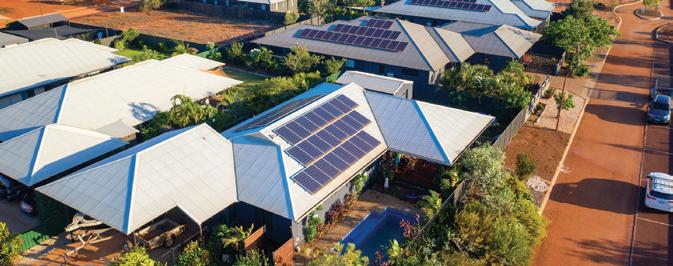
RENEWABLES
living in regional and remote Western Australia will soon be able to embrace clean energy technologies and reduce their energy bills, with Horizon Power rolling out industry leading technology
create smart, integrated, and cleaner energy systems across the state from early 2023.
In a recent announcement by Federal Energy Minister, Chris Bowen, ARENA will fund an extension of the Australian Centre for Advanced Photovoltaics (ACAP).
Final negotiations are in process on the research program and partnerships, with work expected to start in 2023. Here, ACAP outlines breakthroughs in solar technologies, what the next generation of photovoltaic technologies looks like, and the role this plays in grid overhaul.
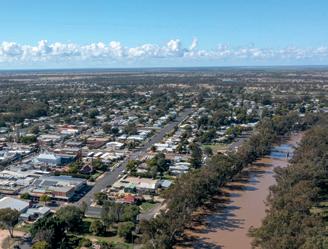

What are some of the new innovations increasing capabilities in the microtunnelling industry?
As new technologies and innovations emerge in the microtunnelling industry, contractors’ capabilities to meet some of the industry’s toughest challenges continue to grow. For example, very hard rock used to result in most contractors turning down projects or stopping a job part way through when they unexpectedly hit these conditions. This is because most microtunnelling tools struggle to drill through very hard rock and install a pipeline to specifications, but new cutting-edge trenchless equipment can now do so with high precision. This is only one example, there are a number of new technologies that are helping to pave the way for the future of microtunnelling.
2
RETAIL, BILLING & CRM Beating the energy crisis with home energy management 84 CORROSION Seeing through hidden corrosion in utilities 86 78 84 24 32 90 UTILITY • NOVEMBER 2 022 WWW.UTILITYMAGAZINE.COM.AU
CONTENTS
The next generation of solar technologies 44
Connecting renewable assets to the transmission grid 48 The largest approved grid-forming battery in Australia 50
Unitywater CEO Anna Jackson on creating a sustainable utility 24
growth, the uptake of digital meters, and the vision for her new role – all of which tie in with an overarching theme of a sustainable water future. Making waves: transforming the water industry 28 Genuine water collaboration through Reconciliation Action Plans 30
& SUBSTATIONS The building blocks of the MacIntyre Wind Farm 78 Working together from concept to completion 80 HORIZONTAL DIRECTIONAL DRILLING (HDD) New Horizontal Directional Drill ticking every box in Healesville 82
TRANSFORMERS
Industry leading tech unlocking clean energy potential 32
The future of energy depends on DERMS 36 Delivering geospatial intelligence for Horizon Power ....................... 38 Urgent action is needed to accelerate Australia’s energy transition......................... 40 Australia’s energy future is renewable and it’s here. Are you ready? 42
People
to
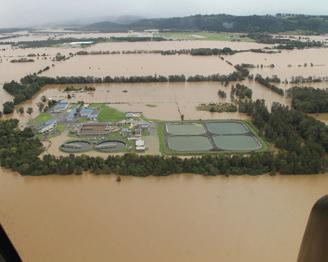

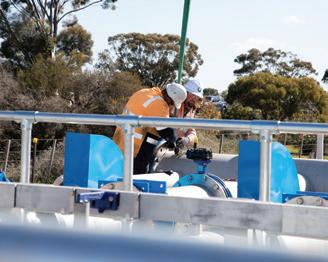
November 2022 ISSUE 36 3 In each issue Welcome from the Editor ������������������������������������������������������������������������������������������������������������� 1 A word from Energy Networks Australia ���������������������������������������������������������������������������������� 4 A word from WSAA ����������������������������������������������������������������������������������������������������������������������� 6 News briefs ������������������������������������������������������������������������������������������������������������������������������������ 8 Advertisers’ index ���������������������������������������������������������������������������������������������������������������������� 92 Editorial schedule ���������������������������������������������������������������������������������������������������������������������� 92 54 70 UTILITY • NOVEMBER 2022 WWW.UTILITYMAGAZINE.COM.AU 60
Tweed's response to flood showcases resilience ....................54 The Tweed Shire’s flood recovery continues to gather momentum as the full extent of the record flood of February-March 2022 becomes clearer. How safety is becoming one of the most critical smart city applications 58 To help identify and act on current and potential future public safety threats, smart city technology is a critical resource for leaders of city councils.
DISASTER MANAGEMENT
LEAK DETECTION Restoring Goulburn-Murray’s pipeline for water efficiency 70 In March 2021, Goulburn-Murray Water (GMW) began delivering the Water Efficiency Project across the GoulburnMurray Irrigation District. All construction works required as part of the $177.5 million project will be completed by the end of 2023 and are funded by the Federal Government to support the recovery of environmental water in the MurrayDarling Basin. Holistic water management: navigating the infrastructure cliff ....................... 74 An innovation leap for network leak detection 76
SA Water team wears safety innovation ......................... 60 An innovative safety initiative is breaking new
a
to
technology can
to
and wellbeing outcomes. Maximise safety with integrated motorised racking devices 64 Building essential skills for modern grid transformation 66 Helping water companies prevent wastewater spills ........... 68
PIPELINE INTEGRITY &
SAFETY
ground in the Australian water industry, with 15 of SA Water’s fieldbased staff donning
range of smart wearable devices
explore how new
lead
greater health
TRANSMISSION FRAMEWORK – MORE STRANDS THAN A BOWL OF SPAGHETTI
by Verity Watson, Head of Transmission, Energy Networks Australia
Transmission is a critical enabler to reach net zero by 2050, with a work program to deliver it way beyond that of recent decades. There is certainly plenty of noise about transmission with most states running to take on planning responsibilities for its delivery, but will the constant change in the transmission framework, national and state, help or hinder the delivery of the right projects?
There is recognition across the energy industry that transmission investment is critical to support the energy system transition at lowest cost to consumers, but it is difficult to keep track of the proliferating regulatory and investment processes projects must follow.
RELEVANCE OF THE NER FRAMEWORK
In the final report reviewing coordination of generation and transmission development in 2018, the Australian Energy Market Commission (AEMC) proposed a more streamlined planning and investment framework. Under the leadership of the Energy Security Board (ESB), with Energy Ministers and all three market bodies on board, a national actionable Integrated System Plan (ISP) framework was created in the national rules and commenced on 1 July 2020.
Later in 2020, the Australian Energy Regulator (AER) finalised the guidelines, and in 2021 issued a guidance note to articulate expectations for procurement strategy and engagement between the Regulatory Investment Test for Transmission (RIT-T) and Contingent Project Application (CPA) stage.
The proposed framework at the time had overwhelming support for the checks and balances it contained. This included appropriate segregation of duties between the planning and investment decision making. The 2022 ISP is the first ISP to be completed under the new framework.
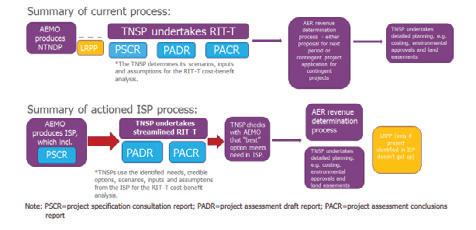
Some projects recognised in the 2018 and 2020 ISPs are already completed (e.g. synchronous condensers and minor interconnector upgrades) while the major greenfield projects are well underway in the case of Project Energy Connect. Current target dates for these projects and other Renewable Energy Zones are around the second half of this decade. The aging synchronous generation fleet is not getting any younger and new transmission and generation are needed urgently. This is a significant infrastructure delivery program, the scale of which we haven’t seen before.
TRANSMISSION PLANNING UNDER CONSTANT REVIEW
The original actionable ISP rules have had a few fix-up rule changes. Despite this, the AEMC has a number of stages in its current transmission planning review – incremental changes (Stage 2) and longer-term improvements (Stage 3) and whether there may be benefits in considering other models for planning and investment e.g. earlier contestability, see Fig 2. These review stages are in addition to the ESB’s transmission access reform and the review of the actionable ISP rules framework due to be completed by mid 2025. That’s some seven to eight reviews or rule changes in the space of five years. This creates a great deal of uncertainty for what is long lived infrastructure and its cost will be reflected in consumers’ electricity bills for decades.

UTILITY • NOVEMBER 2022 WWW.UTILITYMAGAZINE.COM.AU 4 A
WORD FROM ENERGY NETWORKS AUSTRALIA
FIG 1 – COMPARISON OF THE PRE-ISP TRANSMISSION PLANNING FRAMEWORK AND THE PROPOSED ACTIONABLE ISP FRAMEWORK. SOURCE: AEMC, FINAL REPORT COGATI, 21 DEC 2018.
FIG 2 – TRANSMISSION REVIEWS TO SUPPORT THE EFFICIENT USE OF TRANSMISSION INFRASTRUCTURE AND TIMELY AND EFFICIENT INVESTMENT. SOURCE: AEMC.
Regulatory processes that afford consumer protections are seen as too slow, the investment settings may be seen as not able to support the levels of investment involved and retirement of needed synchronous generation is moving more rapidly. To tackle this, some state governments have sought to bypass the rules and take matters into their own hands, a high-level view is shown in Fig 3.
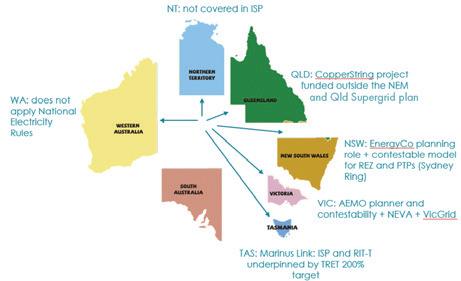 HOUSTON KEMP.
HOUSTON KEMP.
Improving state planning and environmental approvals and costs would be helpful. Creating a spaghetti bolognese of models and processes is not.
VicGrid and the Consumer Trustee (Victoria and NSW) are both developing state-based plans for state agendas in a power system that is interconnected. There are now bits of national and state processes with varying connection standards and processes that need to be navigated. Queensland have recently announced their Energy and Jobs Plan to reach 70 per cent renewable energy by 2032.
The transition is gaining pace and the complexity of operating a stable and secure power system is challenging without adding additional coordination and complexity.
The NSW model for the delivery of Renewable Energy Zones (REZs) remains under development two years after the model was first mooted and is yet to be tested in practice. This is time we just don’t have to deliver
commissioned generation and transmission infrastructure if reliability is to be maintained. Victoria is considering its framework but is still at a high level and there is a time imperative with the looming generation retirements.
Bypassing the transparency and robustness of the national planning and investment framework, enabling the planner to implement its own plan with consumers paying, is like a move back to the quasi-state electricity commission approach – but does it resolve the issues of the significant construction work program required?
The external factors currently impacting the cost and timeliness of major transmission projects, such as cost escalation, supply chain and labour bottlenecks, environmental approvals and landholder concerns around development, and challenges of establishing social licence – won’t be addressed by contestability or by changing the party responsible.
Increasing the complexity of navigating the state and national processes and the parties involved in delivering and commissioning infrastructure at a time when timeliness is key may not reduce total system costs to consumers. These splintered frameworks are looking like they will stay. It is not just the state-based planning bodies – there are a range of additional activities and ongoing coordination costs for existing networks and the market bodies.
AEMO’s 2022 Electricity Statement of Opportunities (ESOO) highlights the importance of VNI (minor), QNI (minor) and PEC to meet reliability in the near term. With the expected closure of Yallourn and Vales Point power station towards the end of the decade, there is a reliance on the anticipated transmission, generation and storage projects in the pipeline being delivered on time.
Timely transmission development is needed to improve the reliability forecast later this decade. Rather than further fragmentation of the framework, adding coordination complexity and risks, it is time to work together to improve the resilience of the NEM as the economy seeks to electrify. Supporting the current pipeline of projects to commissioning and keeping the pipeline of projects manageable is what is needed to ensure the smooth transition to net zero.
UTILITY • NOVEMBER 2 022 WWW.UTILITYMAGAZINE.COM.AU 5
FIG 3 – STATE GOVERNMENTS ARE PURSUING THEIR OWN APPROACHES, CAN THE NER REGAIN RELEVANCE?
SOURCE:
A WORD FROM WSAA
IMPROVING WATER SERVICES TO REMOTE FIRST NATIONS COMMUNITIES
Many stakeholders across Australia are leading important initiatives in ‘Closing the Gap’ for First Nations peoples, addressing health, social, economic and other aspects. Yet amid this work, stories regularly emerge about remote communities with limited and sometimes no access to safe drinking water, poor health outcomes associated with a lack of clean and reliable water supplies, and unclear accountabilities for providing water services.
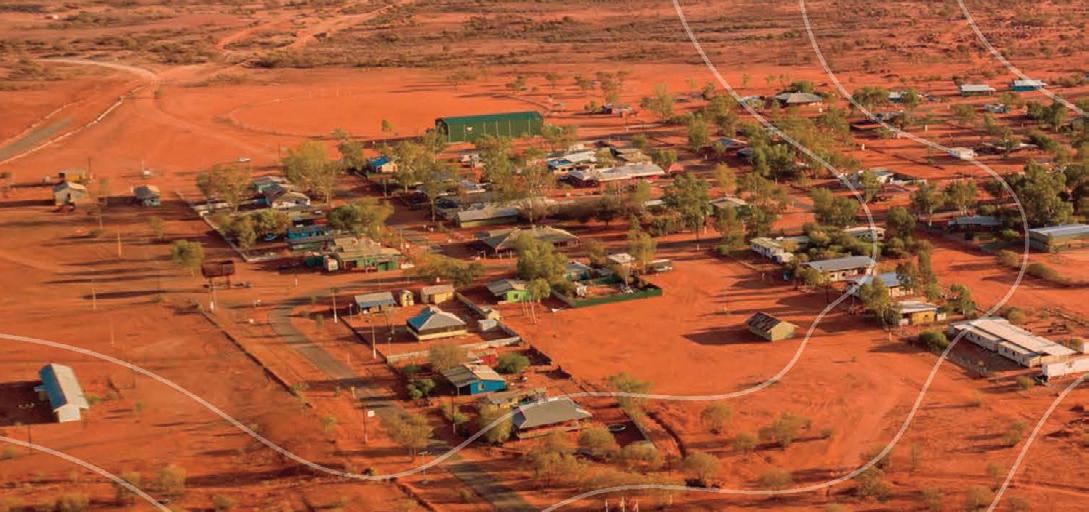
In August 2022 we were pleased to release a Preliminary Report into improving water services to remote First Nations communities. The report was commissioned in 2021 to:
• Review remote water services in Australia
• Elevate these issues in the national conversation
• Recommend ways to close the gap in the delivery of safe drinking water including water quality and water security
Water is core to life for First Nations people and has an important role in their connection to country. Protecting and managing water is seen as a custodial and intergenerational responsibility. The delivery of safe drinking water plays a critical role in the viability, self-determination, and sustainability of First Nations remote communities.
We know that for remote First Nations communities the delivery of safe drinking water is fundamental to closing the gap targets, particularly:
• Impact on public health
• Impact on remote living and integration with public housing
• Impact on wellbeing of people and communities
The Preliminary Report documents the arrangements for water servicing of remote communities across Australia. It outlines some preliminary findings and recommendations about how improving water can help close the gap – and where we can start.
In line with other studies, the Preliminary Report calls for a national drinking water database and national monitoring program for remote First Nations communities.
There is a need for a baseline study to document the delivery of safe drinking water to remote communities and, in particular, remote First Nations communities.
The full report is being finalised and we continue to work with governments and the urban water industry on how to progress these initiatives and embed them in a new National Water Initiative.
To view the Preliminary Report and the full report once it is released (expected in November 2022), please visit www.wsaa.asn.au.
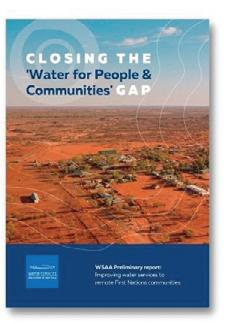
UTILITY • NOVEMBER 2022 WWW.UTILITYMAGAZINE.COM.AU 6
The


is flexible, scalable, and customisable – make life easier for you
your customers.
aptumo.com hello@aptumo.com Aptumo
and
by Echo Managed Services, the UK utility billing specialist.
next generation billing solution that puts you in control Powered
METER SEALS IN HIGH DEMAND
Being intuitively designed, robust, and secure enough to continue passing SCEC approval tests, it is time to put the spotlight on a classic meter seal that has truly stood the test of time.
From the meter seals range, the Tool Less Roto Seal continues to be Harcor’s most popular seal. Its ease of use and ability to be applied without special tools has resulted in high demand in both the commercial and government sectors.
Harcor has kept up the seal’s SCEC approval and resubmitted it for an up-to-date approval that was granted to ensure that use is not disrupted.
For those new to using the Tool Less Roto Seal, you essentially start by feeding the sealing wire through the

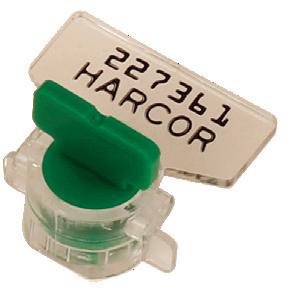
seal's orifices. Then you pull the free wire ends until there is the desired gap between the seal's body and what is being sealed. The tab on top of the seal is then twisted clockwise to secure the wire in place. Once secure, the tab is to be removed by bending it in either direction.
Harcor is a major supplier to the various energy providers based throughout Australia. Its range of meter security seals cover a diverse area within the utility industry supporting gas, water and electricity suppliers and contractors.
If you have any questions regarding the Tool Less Roto Seal, please visit harcor.com.au/collections/meter-seals-wire-presses or email sales@harcor.com.au.
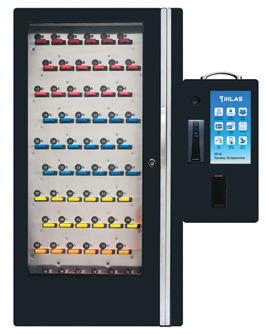



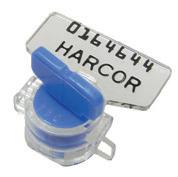
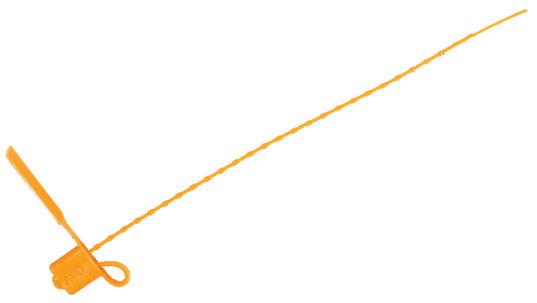
UTILITY • NOVEMBER 2022 WWW.UTILITYMAGAZINE.COM.AU 8 No. 407319937 Key management Meter security seals Contact us for more information about our comprehensive range of key cabinets. Trackable Serial Numbering Expose Unauthorised Access
NEWS | Sponsored editorial

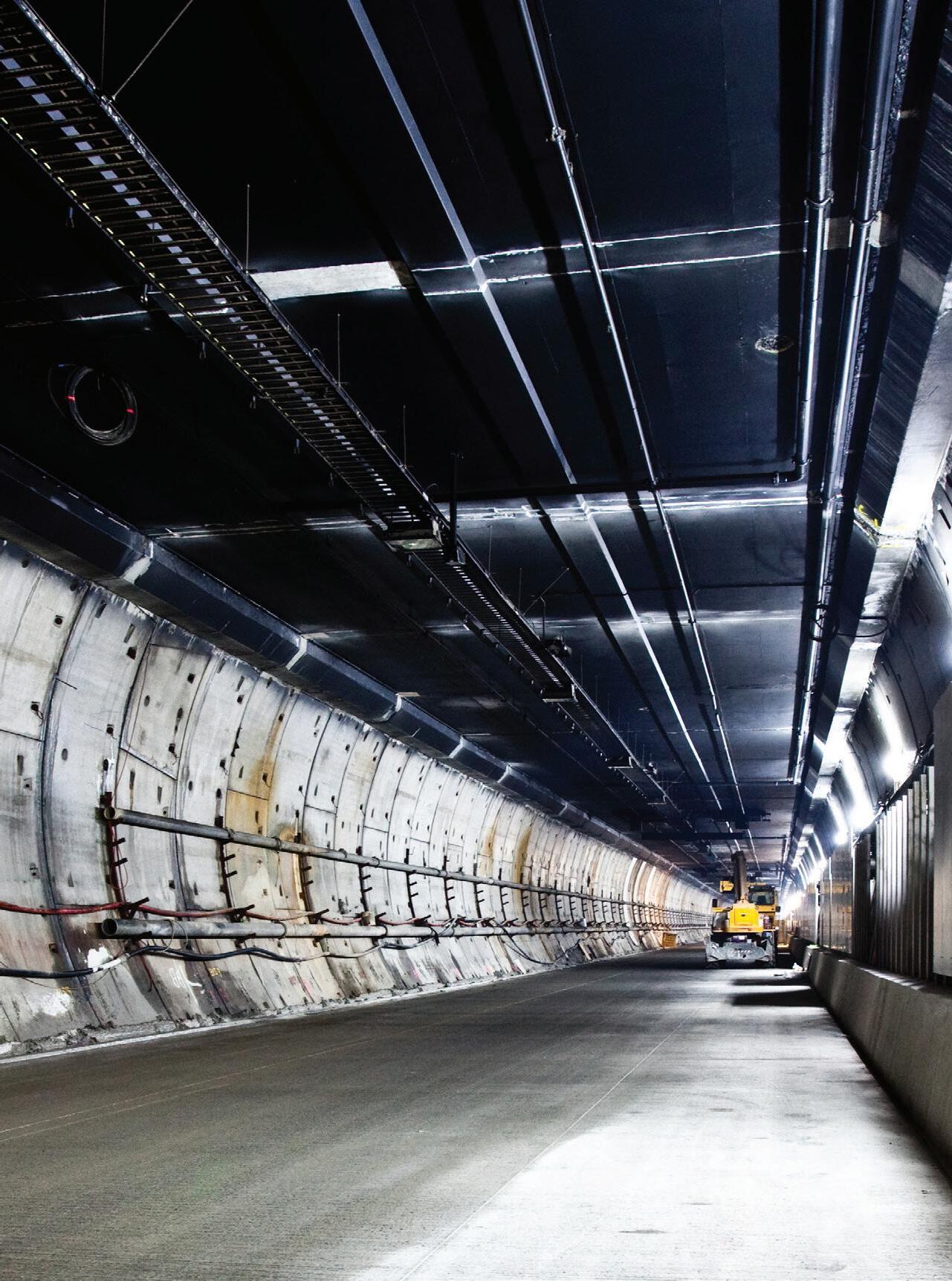
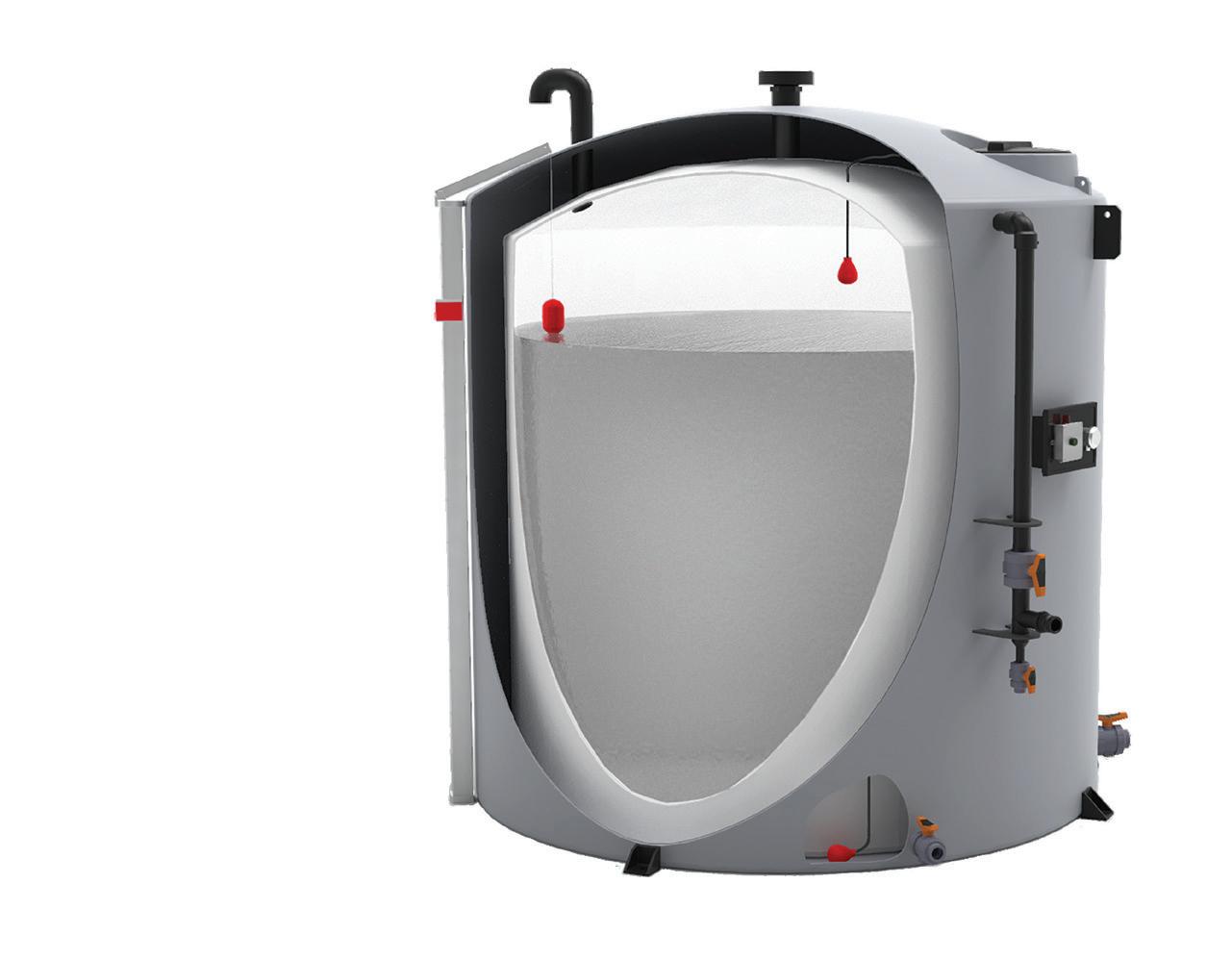
1300 062 064 | polymaster.com.au 25 YEAR DESIGN LIFE
our range
See
QLD’S NEW TEN-YEAR ENERGY PLAN
Anew $62 billion clean energy future has been announced for Queensland – including the largest pumped hydro scheme in the world, which will supply clean, reliable and affordable renewable energy for half of Queensland’s entire energy needs.
The Queensland Energy and Jobs Plan includes:
• 70 per cent of Queensland’s energy supply from renewables by 2032 (80 per cent by 2035)
• Two new pumped hydros at Pioneer/Burdekin and Borumba Dam by 2035
• A new Queensland supergrid connecting solar, wind, battery and hydrogen generators across the state
• Unlocking 22GW of new renewable capacity – eight times Queensland’s current level
• Publicly owned coal-fired power stations to convert to clean energy hubs to transition to, for example, hydrogen power, with job guarantees for workers
• Queensland’s publicly owned coal-fired power stations to stop reliance on burning coal by 2035
• 100,000 new jobs by 2040, most in regional Queensland
• 11.5GW of rooftop solar and 6GW of embedded batteries
• 95 per cent of investment in regional Queensland
• Building Queensland’s first hydrogen-ready gas turbine

The
a
Hydro, is expected to progress its PioneerBurdekin mega project, which could become the largest pumped hydro project in the world.
The project has the potential to deliver generation capacity up to 5GW for 24 hours, or 120GWh, thanks to the high quality wind and solar resources across North Queensland.
Queensland Hydro will conduct further studies and deliver a detailed assessment for the Pioneer-Burdekin project in 2024, including consultation with Traditional Owners and the community, hydrological modelling and assessment of environmental and social impacts, as well as commercial and financial modelling.

Innovative Water Solutions
WATER TECHNOLOGIES
Through its innovative solutions, Veolia Water Technologies enables industry, local authorities and citizens to optimize their use of resources for more efficient, environmentally-friendly and socially responsible outcomes.
We understand the importance of increasing the value of water and we do so by supplying high quality water, treating and reusing wastewater, producing and/or recovering energy, extracting raw materials and capitalizing on valuable byproducts.
www.veoliawatertechnologies.com.au
10 UTILITY • NOVEMBER 2022 WWW.UTILITYMAGAZINE.COM.AU NEWS
© Veolia Photo Library
plan details how
new publicly owned entity, Queensland
STATE APPROVES
50-YEAR WATER-SAVING
STRATEGY
The Victorian Government has approved Barwon Water’s Water for our Future (2022) 50-year urban water strategy, comprising 25 actions for better water management, including the sourcing of new water and the reuse and return of existing water.
The strategy was informed by the utility’s two-year-long Water for our Future community engagement program, which sourced more than 600 ideas from over 5,000 participating community members.
Barwon Water said the strategy seeks to manage water supplies in the face of a changing climate, while aiming to make the most of the challenges and opportunities presented by regional growth.
“Over the next 50 years, we will gradually transition to more climate-independent sources of supply, which aligns with actions set out in the Victorian Government’s recently announced Central and Gippsland Region Sustainable Water Strategy (SWS),” a Barwon Water spokesperson said.
Key highlights from the strategy include expanding the Melbourne-Geelong Pipeline (MGP) to service more customers and returning water to the Moorabool River.
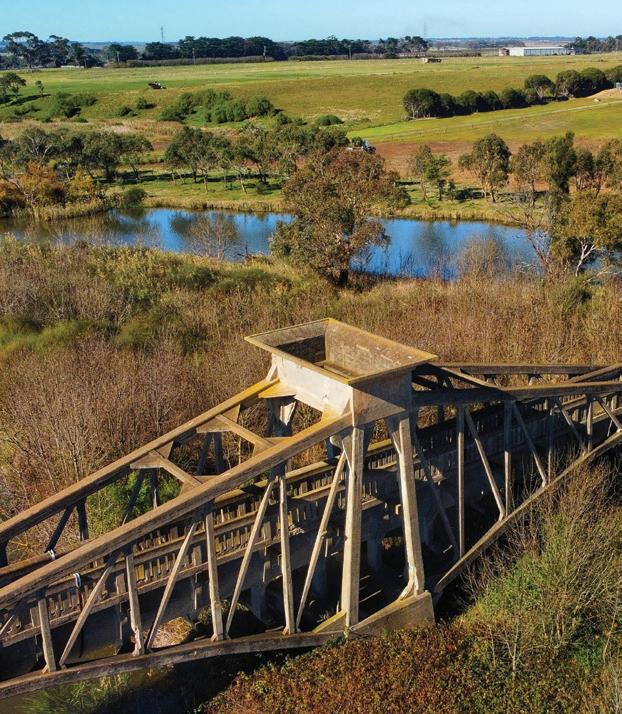


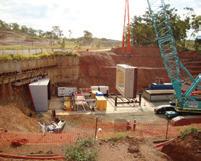
GUIDED BORING SPECIALISTS
ABOUT US
Edge Underground is a precision microtunnelling contractor that operates in Australia and the USA. With a focus on innovative technology and expertise, Edge Underground designs and enhances the performance of trenchless equipment.
OUR SERVICES
UTILITY • NOVEMBER 2022
Microtunnelling
Pipe Jacking
Thrust Boring
Laser Tunnel Boring
Box Culvert Jacking
Canopy Tubes
•
•
•
•
•
•
* quotes@edgeunderground.co 8 www.edgeunderground.co ( JACKED 1300 522533
Winners announced FOR ENERGY NETWORK INDUSTRY AWARDS
The winners of the 2022 Energy Networks Australia (ENA) Industry Awards were announced at the ENA Annual Dinner.
The Awards’ three major categories recognised exceptional contributions to the network sector, leadership in the development of new innovations and outstanding initiatives in consumer engagement.
INDUSTRY CONTRIBUTION AWARD
The 2022 Industry Contribution Award was won by Laurie Curro from Horizon Power in Western Australia. Mr Curro was recognised for his contribution and commitment to the energy industry, in particular, power transmission and distribution in Western Australia.
Mr Curro made an outstanding contribution to the development
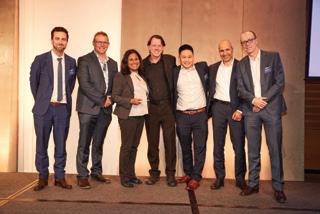
and operation of the Southwest Interconnected System (with Western Power) and regional networks (with Horizon Power), and was a member of ENA’s Asset Management Committee for many years.
INDUSTRY INNOVATION AWARD
The 2022 Industry Innovation Award winner was Endeavour Energy for its entry Using a Network Digital Twin for Digital Emergency Response and Resilience
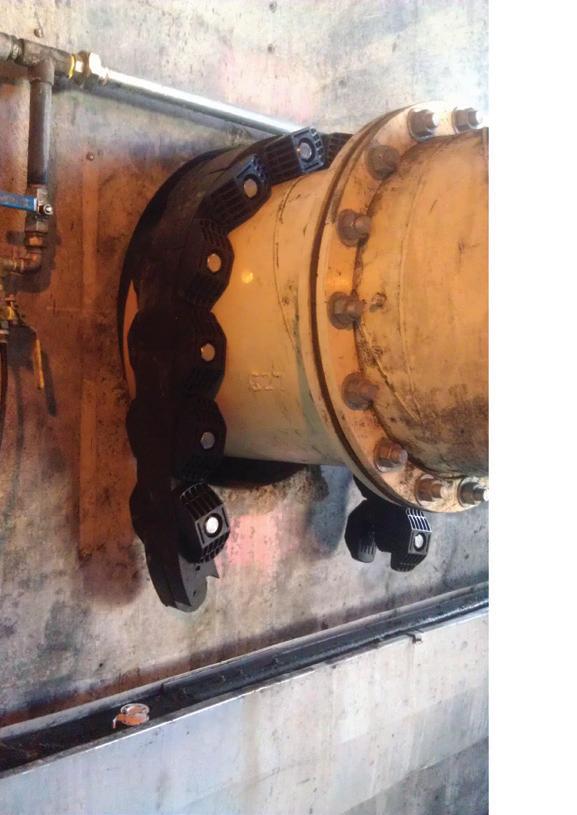

Endeavour’s digital twin provides a virtual flood overlay across the
modelled 3D network. This innovation has been leveraged to improve public safety and restoration response times to several floods in the Hawkesbury region over 2021-2022.
CONSUMER ENGAGEMENT AWARD
The 2022 Consumer Engagement Award winners are AGN, AusNet Services and MGN, for their joint nomination Three Businesses, One Engagement Program for Victorians AGN, AusNet and MGN came together to design and deliver a single, integrated, statewide consumer and stakeholder engagement program, designed to inform and shape the submission of final plans to the AER on 1 July 2022, engaging with Victorians on gas services and prices.
Link-Seals offer hundreds of solutions to seal pipe penetrations ranging in size from 10mm to 3.6 metres diameter.
Link-Seals are suitable for most types of pipes including PVC, HDPE, Copper and Steel.
Resistant to water, oil, gas, aggressive chemicals and fire.
Projex Group helps calculate the right Link-Seal size and model for your application.
Link-Seal


UTILITY • NOVEMBER 2022 WWW.UTILITYMAGAZINE.COM.AU 12 NEWS
mail@projex.com.au 1800 001 114
Link-Seal Pipe Penetration Seal Solutions
Technology solutions for connected utilities.
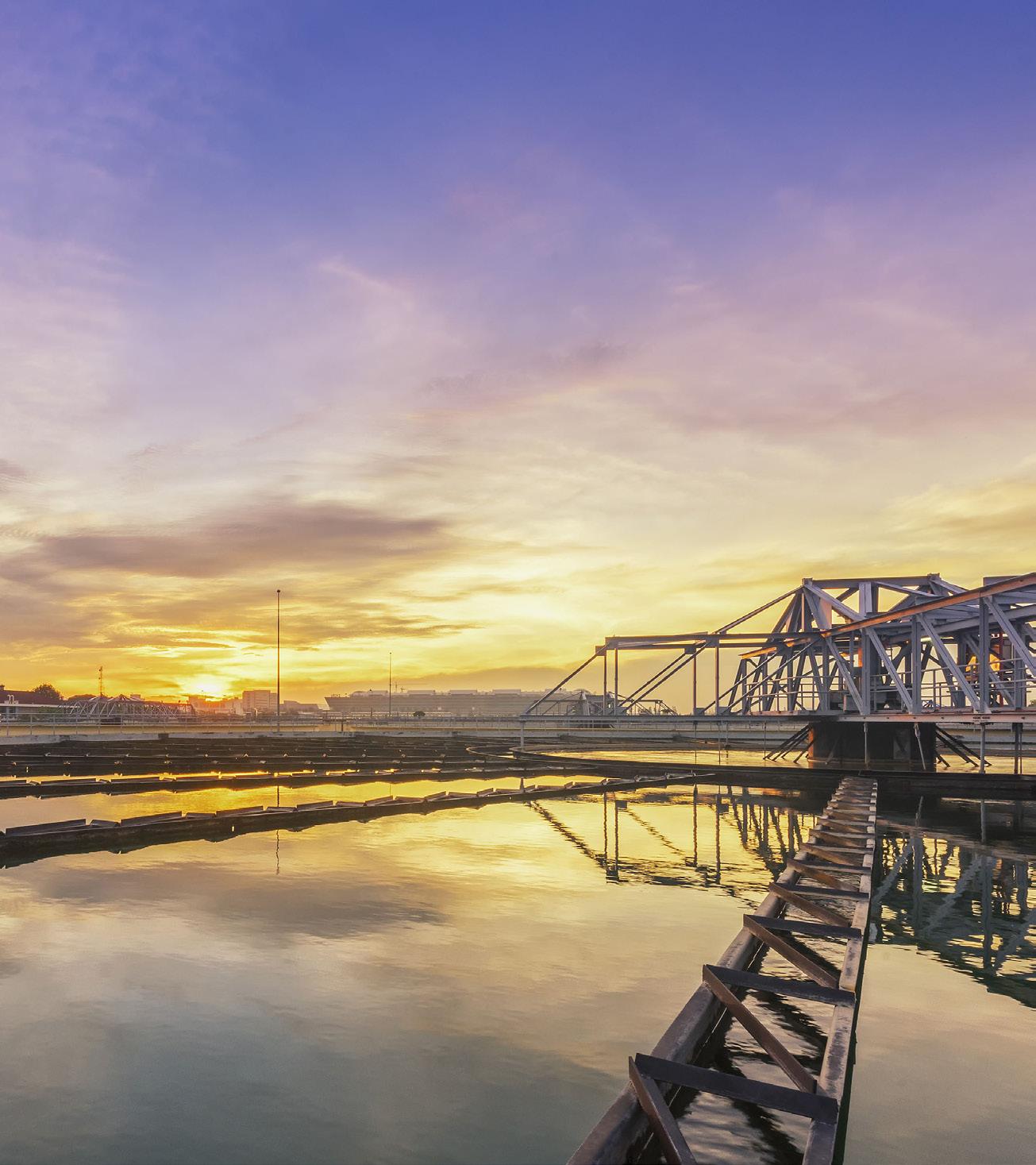
Sensors & Edge Devices .
o Image o Temperature
o Level
Connectivity.
o Wired
o Wireless
o Mission Critical
o LTE/Mobile
Digital transformation is creating efficient, reliable and sustainable Australian utilities.
Platforms & Applications .
o On Premise
o Location + more Cybersecurity.
o IoT
o Secure technology for IEC 62443 standards
o In-cloud
o Visualisations
o Analytics
Connect and protect people, assets and the environment
With a 30-year legacy of providing resilient industrial technology solutions, our experience connecting and protecting people, assets and the environment, combined with our industry leading technology portfolio, means we’re the preferred partner for solving IIoT, industrial networking, cybersecurity, asset management and asset visibility challenges. Book a solutions workshop with our specialist team and see how digital transformation can benefit your business.
Sales Enquiries 1800 72 79 79 www.madison.tech
FIVE PUMPED HYDRO PROJECTS AWARDED $45 million total funding
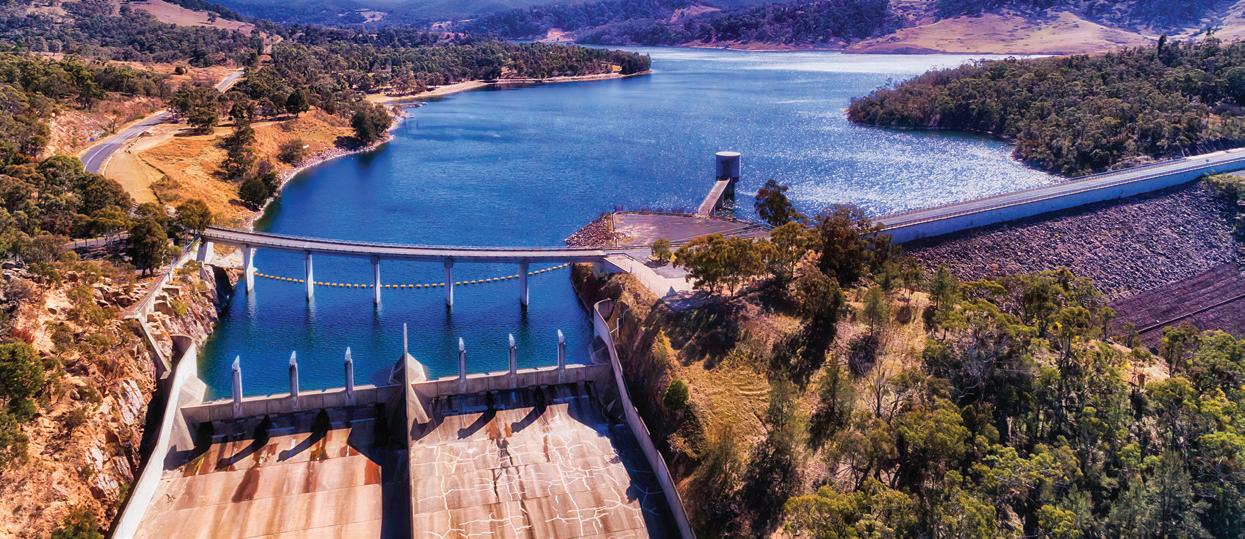
Five pumped hydro projects in New South Wales have been awarded a total of $44.8 million in funding under the New South Wales Pumped Hydro Recoverable Grants Program, in a bid to advance the state’s pumped hydro future.
The five projects have a combined capacity of almost 1.75GW. They include:
• $11 million for Lake Lyell Pumped Hydro Energy Storage (EnergyAustralia)
• $9.64 million for Oven Mountain Pumped Hydro Energy Storage (OvenMountain)
• $5.31 million for Shoalhaven Hydro Expansion (Origin Energy)
• $9.44 million for Central West Pumped Hydro (ATCO Australia)
• $9.45 million for Muswellbrook Pumped Hydro (AGL Energy and Idemitsu Australia)
According to New South Wales Treasurer and Minister for Energy, Matt Kean, the program provides recoverable grants to pumped hydro developers to help cover upfront costs and lower investment barriers for the private sector.
“Funding agreements are already in place with five applicants who have received a total of $44.8 million to support pre-investment activities, establish project feasibility and develop a strategic business case,” Mr Kean said.
“If these pumped hydro projects proceed to construction, they are expected to create more than 2,300 jobs and attract $4.4 billion of private investment, which will help grow the economy and support the regions.
“New South Wales has the most ambitious renewable energy policy in the nation, which is needed to replace
ageing coal fired power stations and build a clean energy future for New South Wales.”
Mr Kean said pumped hydro is a key component of the state’s renewable energy plans and will provide clean, reliable power and create infrastructure jobs right across regional New South Wales.
“This is a win for New South Wales as these grants will be repaid to the government if a project reaches financial close, meaning that these same funds could be used to support even more projects in future,” Mr Kean said.
Pumped hydro works by using surplus renewable energy to pump water up a hill when it is sunny and windy, and releasing the water back down the hill through giant turbines that create electricity when it is still and dark.
By doing this, pumped hydro acts like a giant battery for the electricity system.
New South Wales has a target to build at least 2GW of new long duration storage by 2030, and the State Government has committed $97.5 million to accelerate pumped hydro projects that could meet that target. This includes funding for private projects, as well as funding to undertake site investigations for pumped hydro potential on existing WaterNSW dams.
Among the recipients is EnergyAustralia’s pumped hydro project at Lake Lyell near Lithgow.
EnergyAustralia Trading, Transition and Reputation Executive, Ross Edwards, said the Lake Lyell project would continue Lithgow’s proud history of power generation into the future and repurpose existing infrastructure to support the energy transition.
UTILITY • NOVEMBER 2022 WWW.UTILITYMAGAZINE.COM.AU 14 NEWS
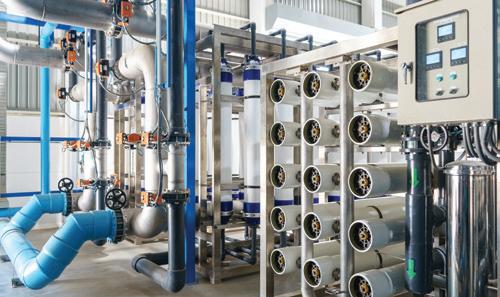
The Western Australian Government has invested $400,000 toward the construction of three community desalination units; built to test new desalination technologies for improved climate resilience and sustainability in community water supplies.
A brackish water desalination unit will be installed in Katanning during summer 2022-23, as part of a network of demonstration sites to examine how the technology can help overcome seasonal variability, reduce reliance on scheme water and support community development.
The Katanning unit will supply 30kL per day of fresh water to augment services for three local parks, as well as other town infrastructure.
This summer, a 100kL/day desalination unit will be installed at Merredin to service farm and town water needs, while a new 10kL/day salty groundwater system at Dumbleyung will service farm and town water supplies, as well as underpin repairs to the town’s swimming pool.
A further 30kL/day brackish water off grid reverse osmosis unit will be installed at the Wongutha Christian Aboriginal Parent-Directed School at Esperance, as part of a collaboration with the Federal Government’s National Water Grid Authority.
Western Australian Minister for Water, Dave Kelly, said long-term statistics indicated an urgent need for diversified water sources.
“The long-term statistics show that WA is experiencing reduced rainfall due to the impacts of climate change, with a record 12 Water Deficiency Declarations announced just two years ago in the Wheatbelt,” Mr Kelly said.
“This important work, supported by Water Corporation, will help to serve not only these first three communities but others in the future, as the technology is better understood and adopted throughout the state.”
The project received funding from the state’s WaterSmart Farms initiative, and is led by the Department of Primary Industries and Regional Development in partnership with Water Corporation.
Project stakeholders will also undertake case studies to examine the lifecycle costs and efficiency of these new systems.
The findings from the investigation will provide valuable information to assist regional communities and farmers to consider adopting the technology to build water resilience in a drying climate.
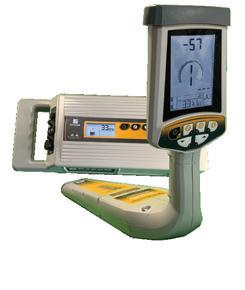


UTILITY • NOVEMBER 2022 WWW.UTILITYMAGAZINE.COM.AU 15 NEWS
DESALINATION PILOT $400k for WA
NEW CEO WELCOMED AT AURORA ENERGY
Aurora Energy has welcomed its new CEO, Nigel Clark, who took the reins from outgoing CEO Rebecca Kardos in October 2022.
With more than two decades of experience in the energy sector, including multiple senior financial, strategic, and operational roles, Mr Clark is best known for his tenure at Momentum Energy, where he served as Managing Director for four years until Hydro Tasmania’s 2007 takeover.
Before joining Aurora Energy, Mr Clark was Chief Operations Officer at New Zealand’s Genesis Energy, and previously served as Director for Boards including the Snowy Hydro Corporation and Energy Retailers Association of Australia.
Aurora Energy Chairperson, Mary O’Kane, welcomed Mr Clark, signalling confidence in his extensive experience.
“With his extensive experience in the retail energy sector and his understanding of the Tasmanian market thanks to his time with Momentum, Nigel is the right person to lead the Aurora Energy team into the future,” Dr O’Kane said.
“Tasmanians expect their state-owned energy retailer to keep its costs to a minimum, while ensuring the products, services and support meet customer expectations. We have full confidence that Nigel will continue Rebecca Kardos’ outstanding work on both fronts.”
Mr Clark said he was excited for the opportunity to join Aurora.
“I am excited to be returning to the Australian energy market and serving the customers of Aurora and the broader Tasmanian community. I look forward to leading the business in its next phase of development in what continues to be a challenging, dynamic and evolving energy market,” he said.





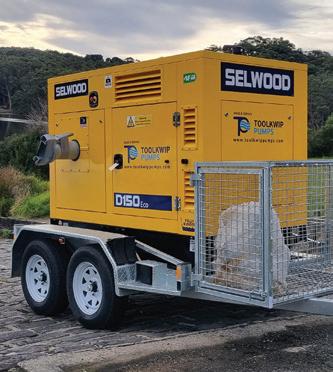
UTILITY • NOVEMBER 2022 WWW.UTILITYMAGAZINE.COM.AU 16 NEWS Visit us online for more info toolkwippumps.com.au P: +61 3 8805 0500 E: sales@toolkwippumps.com Available in: NSW • VIC • QLD • SA • TAS GET PUMPED! • Auto-prime Pumps • Electric & Hydraulic Submersible Pumps • Water Cart Trailers • Pontoons, Hoses & More... -DISTRIBUTORECO FRIENDLY PUMPING

Heads of Agreement secures FUTURE GAS SUPPLY FOR AUSTRALIA
The Australian Government has signed a new Heads of Agreement with East Coast LNG Exporters which is set to prevent a gas supply shortfall and secure competitively priced gas for the domestic market.
Australia’s east coast LNG exporters will ensure supply amid a forecast risk of energy system pressures next year as part of a package of measures – delivering secure, competitively-priced gas to domestic customers.
The new Heads of Agreement includes:
• LNG exporters to first offer uncontracted gas to the domestic market, on competitive terms, with reasonable notice, before exporting
• In respect of uncontracted gas, the principle that domestic gas customers will not pay more for the LNG exporters’ gas than international customers
• Commits LNG exporters to offering gas on terms consistent with a code of conduct
• Enhanced transparency and accountability, with quarterly compliance reporting to the Minister for Resources, with oversight by the competition regulator the ACCC
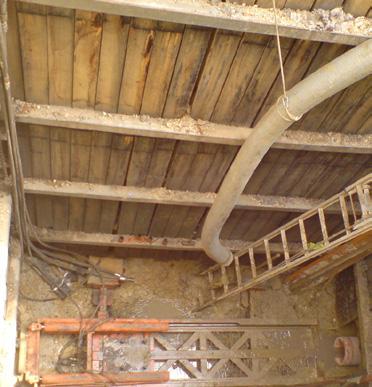
The negotiations ensure additional gas supply, improving security and affordability of domestic gas supplies in future years, while also introducing transparency measures to improve the information available to customers.
In July, the Australian Competition and Consumer Commission forecast a gas shortfall of 56 petajoules (PJ) for the domestic market in 2023.
The new commitments from LNG exporters will lead to an extra 157PJ for the domestic market in 2023, with the gas to be supplied in line with seasonal demand.
The new Heads of Agreement was signed by Federal Minister for Resources and Northern Australia, Madeleine King, and representatives from Australia Pacific LNG (APLNG), QGC Pty Ltd (operator of QCLNG), and Gladstone LNG (GLNG).
Minister King said the agreement will ensure Australians continue to have access to secure and reliable gas.
“The new supply commitments, and Heads of Agreement, will deliver gas to the domestic market when needed, and ensures future uncontracted gas will be offered to the domestic market first, on competitive and reasonable terms, before it is offered for export,” Ms King said.
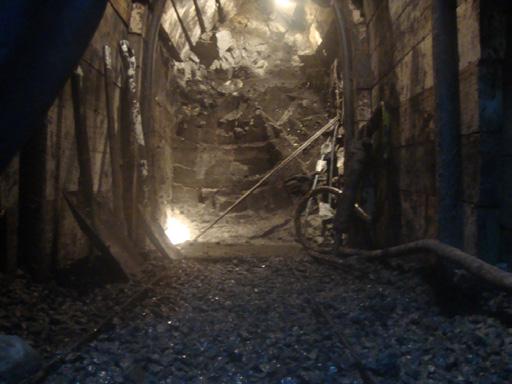





UTILITY • NOVEMBER 2022 WWW.UTILITYMAGAZINE.COM.AU 17 NEWS
tenders@lancogroup.com.au | www.lancogroup.com.au | 1300 1 LANCO (1300 152 626) Civil and Infrastructure Engineering | Project Management
GUARANTEEING MEASUREMENT ACCURACY
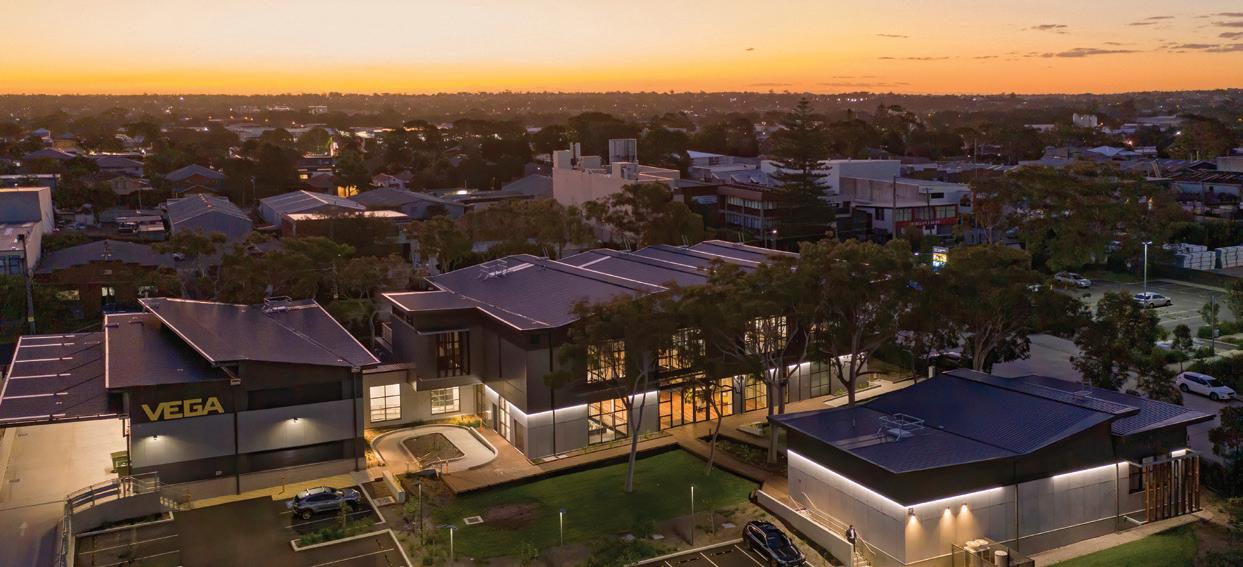
“What gets measured, gets improved” goes the saying imprecisely attributed to legendary management consultant Peter Drucker. Increasingly, though, good calibration requires more than whipping out the scales or a tape measure.
In a more and more exacting scientific world, extreme precision is required to deliver the best results to customers at a practical, industrial level.
Modern society is driven by data, which is created every time someone interacts with a connected device or software. When used wisely and properly, this data is enormously powerful but to be able to measure assets and functions with a high degree of reliability is key.
Over the last two and a half years, the COVID-19 pandemic has further highlighted the power and importance of accurate measurement. The well-documented logistics and supply chain problems mean that manufacturers need an advanced understanding of their inventory levels and – crucially – the availability of raw materials to keep the wheels of industry turning.
John Leadbetter, Managing Director of level and pressure-measuring equipment supplier, VEGA Australia, said customers are always looking at ways to improve, not only their own processes, but also to minimise downtime and delays.
“Remote access to information is becoming a very important issue with industry, and VEGA is at the forefront of this development,” Mr Leadbetter said.
An arm of the German-based giant VEGA Grieshaber AG, VEGA Australia has serviced the local market for almost four decades. Its customers include some of the biggest blue chip companies and span 12 key sectors including mining, oil and gas, food manufacturing and water management.
“It may be about measuring the pressure of slurry, air or water in a pipe, or the amount of material held within or above a mine or pipe or dam,” Mr Leadbetter said.
“The methods can be contact or non-contact, such as a radar transmitter, or a probe in a tank that picks up changes in conductivity or density.”
TRANSLATING DATA INTO MEASUREMENT
The underlying science aside, VEGA’s mission is to tackle customers’ practical day-to-day measurement challenges.
Mr Leadbetter said consumers tend to take information for granted, without any due thought to how this data translates to measurement.
“For example, 99.9 per cent of people turn their tap on in the morning and expect water to come out,” Mr Leadbetter said.
“But this happens because of accurate measurement, whether it’s the level of a dam, sewage flow rates or the reliability of tides and shipping.”
He said the internet-of-things revolution – the adoption of remote sensors – further highlights the imperatives of reliability and accuracy.
“Before they invest in logistics and resources, they need to know the information is going to be exactly what they are after,” Mr Leadbetter said.
Mr Leadbetter noted that the pace of technology advancements quickens each year – especially so in the case of process instrumentation. So with production processes becoming ever more complex, it’s crucial that the measurement technology used to control and monitor the processes is understandable and intuitive.
“VEGA has set itself the goal of developing innovative measurement technology that is easy to install and operate and offers maximum safety and reliability.”
For more information, please visit www.vega.com
UTILITY • NOVEMBER 2022 WWW.UTILITYMAGAZINE.COM.AU 18
NEWS | Sponsored editorial


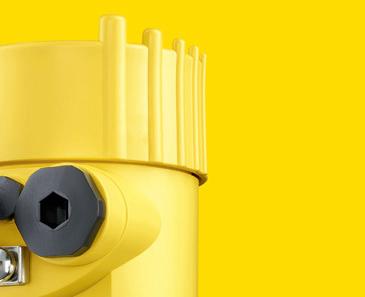
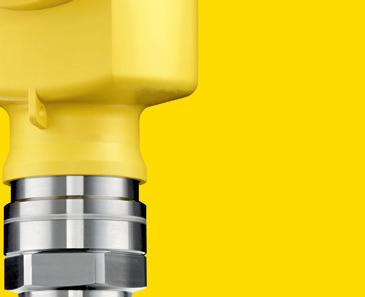


IT DOESN’T JUST MEASURE VALUES. IT HAS VALUES. THE 6X ®. AVAILABLE NOW!
The VEGAPULS 6X: A radar level sensor that is not only technically perfect, it also takes the user into account. It’s easy to set up and at home in virtually any process or industrial environment. Made by a company that bases its decisions on values that are good for everybody.
VEGA. HOME OF VALUES.
www.vega.com/radar

ENHANCING ASSET MANAGEMENT WITH STATE-OF-THE-ART CONFLATION
The asset management capabilities of GIS rely on data integrated from a variety of sources. Discrepancies can often occur between different datasets, or between older and updated spatial data. For critical utility infrastructure applications, a simplistic fix to reconcile these differences will not pass muster. Achieving the most accurate dataset requires a strategic and rigorous approach to conflation by utilising advanced realignment techniques, excellent project management and extensive industry expertise.
As the GIS plays increasingly crucial roles in managing complex modern utility infrastructure networks, the need for quality and integrity of asset location data becomes ever more vital for efficient, cost-effective, and safe asset management. Accurate location data can also be key to unlocking the full capabilities of a digital twin and smart technologies to optimise performance.
However, as additional sources of data are integrated into a GIS and old data is updated, duplication and discrepancies between datasets can occur. Overlapping or adjacent sections of different maps may not match perfectly. Meanwhile, utilising newer, more precise location data frequently requires existing GIS data to be spatially adjusted to align with updated asset locations. To position assets accurately, preserve data integrity and merge overlapping datasets without conflicts, a composite combining the best elements of each map must be created. The process of combining and layering geographical information is known as conflation.
Digital cadastre modernisation is underway across much of Australia to better delineate land parcel boundaries. Superseding older map data with more precise location data enables boundaries to better align with GPS, high-resolution imagery, LiDAR, and other high-precision data collection methods. As utility assets are recorded in relation to land boundaries, any change to cadastre mapping requires a corresponding adjustment to infrastructure locations.
THE IMPORTANCE OF ACCURATE SPATIAL DATA
Successful conflation is essential to ensure a utility’s GIS uses the most precise, up-to-date location data for more effective asset management, outage management, field services management, project planning, performance analysis, emergency response and other uses. The quality and integrity of utility infrastructure location data is critical for an array of reasons, and its importance continues to increase as old assets reach end of life and require replacement, and networks are expanded and upgraded, resulting in smarter and more complex networks required to meet changing consumer needs.
Damage to underground utility infrastructure due to inaccurate positional data is an ongoing concern for the industry. Utility strikes result in significant financial costs and service interruptions and pose serious and potentially life-threatening safety hazards to workers and members of the public.
Higher-precision location data vastly expands the potential applications of GIS in the utility sector. As digital transformation gains momentum, the ability to accurately
visualise infrastructure locations underpins a growing range of smart technologies to make utilities’ networks, operations and services safer and more efficient, and to unlock additional capabilities and value streams.
Some of the additional benefits of higher-precision location data include:
• The ability to integrate with aerial imagery and newgeneration mapping systems
• Reduced costs associated with checking and accessing locations when maintaining, upgrading or replacing network assets
• Improved billing accuracy
• More accurate reporting leading to improved regulatory compliance
SUCCESSFUL CONFLATION FOR HIGHERPRECISION MAPPING
To achieve a suitable level of data accuracy in the GIS, conflation must be undertaken using mathematically rigorous best-practice methods and optimised workflows. A simplistic ‘rubber-sheeting’ solution, shifting all vertices from one dataset to another, will not suffice.
A successful conflation project calls for expertise and a strategic, scalable approach using advanced and robust mathematical models to realign and reconcile conflicting datasets, supported by a high-performance adjustment engine. The conflation procedures need to allow for the application of business rules and constraints to preserve network topology and connectivity, as well as maintain straight lines, angles, and other important attributes. Quality assurance processes should ensure outliers are excluded and any other issues that could reduce accuracy are rectified before the updated dataset is applied to a GIS. Data security and the ability to rollback changes are essential. Most importantly, a utility’s business must not be interrupted, allowing work to continue while conflation is underway.
EXPERT CONFLATION FOR UTILITY ASSETS
we-do-IT has extensive experience delivering utility industry conflation projects on time and on budget. Utilising proprietary quality-assurance and project-management processes, robust technology and advanced mathematical modelling, we-do-IT helps utilities achieve the highest levels of GIS location accuracy, all without interrupting business as usual.
To find out more contact we-do-IT on (03) 9098 8617 or email info@we-do-it.com to speak with a conflation expert.
UTILITY • NOVEMBER 2022 WWW.UTILITYMAGAZINE.COM.AU 20 NEWS | Sponsored editorial


WE DO SPATIAL I.T. SOLUTIONS. WE DO CONFLATION SOLUTIONS.

CELEBRATING OVER 25 YEARS IN THE GIS SECTOR


we-do-IT are a leading technology partner in spatial systems and data enablement. We help utilities harness the power of location intelligence.
MELBOURNE • BRISBANE • AUCKLAND • DENVER • LONDON • HAMBURG • HYDERABAD • SINGAPORE CONTACT US NOW TO DISCUSS YOUR NEXT GIS PROJECT. +61 3 9098 8617 INFO@WE-DO-IT.COM WE DO GIS CONSULTING. WE DO GIS DATA ENGINEERING.

FUTURE TECHNOLOGY OPPORTUNITIES FOR UTILITIES
During a recent series of technology road shows, Madison Technologies has talked at length with customers in the power and water utilities sectors, learning about the industrial technology challenges and opportunities they are currently facing.
Anumber of topics and technologies have formed the basis of these conversations, including edge computing, connectivity, IIoT technologies, and the one word that is front of mind for everyone –cybersecurity.
CUSTOMERS ARE TALKING ABOUT CYBERSECURITY
Cybersecurity is an increasingly important conversation amongst Madison Technologies customers, especially as the industry sees the continued convergence of IT and OT infrastructures. The merging of these two systems is creating more surface for attackers to enter through, and in several recent high-profile attacks, perpetrators gained access through vulnerabilities created by IT/OT convergence.
Confidentiality, Integrity and Availability, also known as the CIA triad, is a model designed to guide cybersecurity policies and practices, but Madison Tech is also talking to its customers about Visibility
Visibility, including visibility of what is connected to your network, the traffic on your network, how networks are segmented, what needs to be patched, and what needs to be modernised, is an important element of a company’s cybersecurity practices.
Madison Tech is demonstrating to customers that intrusion prevention can be achieved with smart networking technologies, helping secure network infrastructure with visibility capabilities. This makes it easy for users to identify all devices on the network and their communication patterns, and helps ensure the continuity, resilience, and safety of industrial operations.
CUSTOMERS ARE TALKING ABOUT INCREASING EFFICIENCIES
In the face of rising demand, customers want to know how digitisation can help them increase operational efficiency. With the advancement of edge computing, machine learning and AI, it is now possible to analyse multivariate data to predict and avoid operational failures and downtime, as decisions can be derived where the asset operation is occurring.
By building a model using data collected during normal operations, a process beginning to drift or change can be identified, predicting a failure before it occurs. This prediction allows preventative maintenance to be undertaken, and a complete shutdown or unplanned downtime can be avoided. Moving from reactive to proactive to predictive maintenance can enable utility providers across
Australia to increase their overall operational performance.
CUSTOMERS ARE TALKING ABOUT DIGITISING DATA MEASUREMENT
Dispersed and remote assets have a unique set of logistical challenges. The measuring and reading of meters is, in many cases, still a manual process. Conversations to improve the efficiency and accuracy of this process continue to revolve around implementing Industrial Internet of Things (IIoT) devices. Digitising this data capture process with a data logger, such as Captis IIoT data loggers, allows this data reading to be collected automatically, efficiently, and accurately.
Another example of a specific challenge water utilities are facing is service interruptions from blockages. IIoT devices containing sensors are enabling wastewater utilities to monitor sewage systems and avoid overflows by alerting them to blockages before they become problems.
Madison Technologies has recently provided a solution for a large Australian water authority and the proactive nature of this digitised data capture is reducing service interruptions, as well as reducing the risk to the public and the environment from spillages.
To learn more about these topics, or to book a solutions workshop with Madison Technologies’ technical team, visit www.madison.tech or phone 1800 72 79 79

22 NEWS | Sponsored editorial

UNITYWATER CEO Anna Jack son on creating a SUSTAINABLE UTILITY
by Jessica Dickers, Managing Editor, Utility Magazine

In July this year, Anna Jackson joined South East Queensland water utility Unitywater as its new CEO. Previously SA Water’s General Manager Strategy, Engagement and Innovation, Ms Jackson is keenly aware of the challenges facing water utilities and recent developments in customer engagement. She sat down with Utility Magazine Editor, Jessica Dickers, to discuss the impacts of climate change and population growth, the uptake of digital meters, and the vision for her new role –all of which tie in with an overarching theme of a sustainable water future.
UTILITY • NOVEMBER 2022 WWW.UTILITYMAGAZINE.COM.AU 24 INDUSTRY INSIGHTS
While most water utilities around Australia are facing similar challenges, Unitywater’s location means it’s been hit with extreme weather events as well as predicted rapid population growth, which Ms Jackson said are the most pressing issues she’s encountering in her new position.
Unitywater supplies water and sewage treatment services to Moreton Bay, Sunshine Coast and Noosa in SouthEast Queensland.
“It’s those two issues in combination with each other,” Ms Jackson said. “If you take into account our entire service area from just north of Brisbane through to Noosa, there's about 800,000 people and that's expected to grow to more like a million in the lead up to the 2032 Brisbane Olympics.

“There's a lot of consideration for what that means for both our infrastructure and our services. For instance as a progressive utility, I’m seeking out value-adding elements such as liveability and improved waterway health which we can build in as outcomes along the way to delivering on our net zero, sustainable infrastructure, climate readiness and reconciliation goals.”
Before joining SA Water in 2017 as one of six General Managers, Ms Jackson worked at large multinational Coffey in international development, and aerospace and defence technology company Raytheon. At SA Water she was responsible for business strategy, water security and quality, innovation, customer engagement and environmental and social governance, and spent time as the General Manager of Customer and Commercial. This experience has helped shape some clear priorities for her leadership at Unitywater.
“For me, part of any future-proofing of our infrastructure and services is to increase our reuse from our sewage treatment plants so over time they become water and resource recovery centres.”
Ms Jackson said other priorities include increasing
Unitywater’s non-regulated business activities and continuing to foster an engaged culture at the utility.
“We need to balance our investment required for these initiatives with customer prices, so we are looking at broader business investments and activities.
“Then a really important priority is to work with the Unitywater team – 700 people – plus our contractors, to build on a culture of proactive delivery and ideas generation.”
WORKING TOWARDS NET ZERO
Ms Jackson said that, like many other Australian utilities, Unitywater has goals to meet net zero emissions targets by 2050, with the utility's operations and management geared towards mitigating the impacts of climate change and creating more sustainable services. Water utilities are at the forefront of these impacts with water scarcity and quality becoming major issues.
“We are going to achieve net zero carbon, nitrogen and phosphorus. We are heading for that 2050 target and that's going to involve considerable collaboration across the region, not just with other water industry participants, partner councils, traditional owners, state and federal government.
“For me, reuse is incredibly important. We have a lot of sewage treatment plants and I will consider how we push them for reuse as much as possible. We have the Wamuran Irrigation Scheme under construction at the moment, which is a great example of reliable and high quality recycled water for irrigation for turf and berry growers”
Ms Jackson is a member of the Australian Water Partnership Advisory Committee as well as Water Services Association of Australia’s Liveable Communities Committee. She believes that when it comes to creating liveable sustainable communities, the water utilities are uniquely positioned to learn from each other. For example, looking at the innovations Victorian water utilities have already started, with state-based targets of 2035.
“We are open to learning from their experiences and see it as a starting

point for us to consider those initiatives in our context.”
THE BLUE HEART AND CUSTOMER ENGAGEMENT
Besides increased water and by-product reuse, how else can we see sustainable operations in action at Unitywater? Ms Jackson said one particularly exciting project is the Blue Heart – a partnership with Sunshine Coast Council and the Queensland Department of Environment and Science which covers around 5,000 hectares and includes Unitywater’s Yandina Creek Wetland.
“The project area is in the Maroochy River floodplain,” Ms Jackson said. “So it's both a blue carbon sink and floodplain management, which is fantastic from an environmental management and climate change point of view.
“Our wetland is a nutrient offset project. It is removing nutrients and sediments from Maroochy River, improving water quality and overall river health. We'll be working with our partners on amenities like recreational walks, viewing locations, and making it more of an attraction. It just ticks a lot of boxes in terms of environmental management and community amenity.”
The other project underway at Unitywater that Ms Jackson is taking a keen interest in is called Water Matters, which aims to increase customer engagement, an area that she has a lot
UTILITY • NOVEMBER 2022 WWW.UTILITYMAGAZINE.COM.AU 25 INDUSTRY INSIGHTS
of experience with due to her previous role at SA Water.
Working with Sunshine Coast Council, Noosa Council, and Seqwater, the project takes into account the integrated water cycle with customers' views of what they would like and how they would want to see things moving forward.
“We're right on the cusp of doing more of that customer engagement work, which is just going to be so interesting to hear firsthand from our customers what their priorities are when it comes to sustainable water use and making sure we are making
the most of that integrated water management cycle,” Ms Jackson said.
THE NEXT GENERATION OF WATER PROFESSIONALS
While it’s critical for executives and senior leaders to have sustainability front and centre in their work every day, Ms Jackson said it’s also important for people coming into the water sector to have similar views and priorities, regardless of their roles.
“We need people in the industry who are prepared to put a climate and sustainability lens across projects and initiatives. It’s almost routine now
that if you're looking at something in the sector, you're also thinking, ‘how would this work in terms of an extreme weather event? How would this work in terms of drought? How would this work if sea levels are rising? How would this work in terms of remnant vegetation and habitats? How would it work in terms of nutrients and cleaner waterways? And most importantly, what are some ideas that I can bring to the table to solve these issues, how can I tackle this with research, development and collaboration?
“My view is that wherever you work in the industry, whichever role you
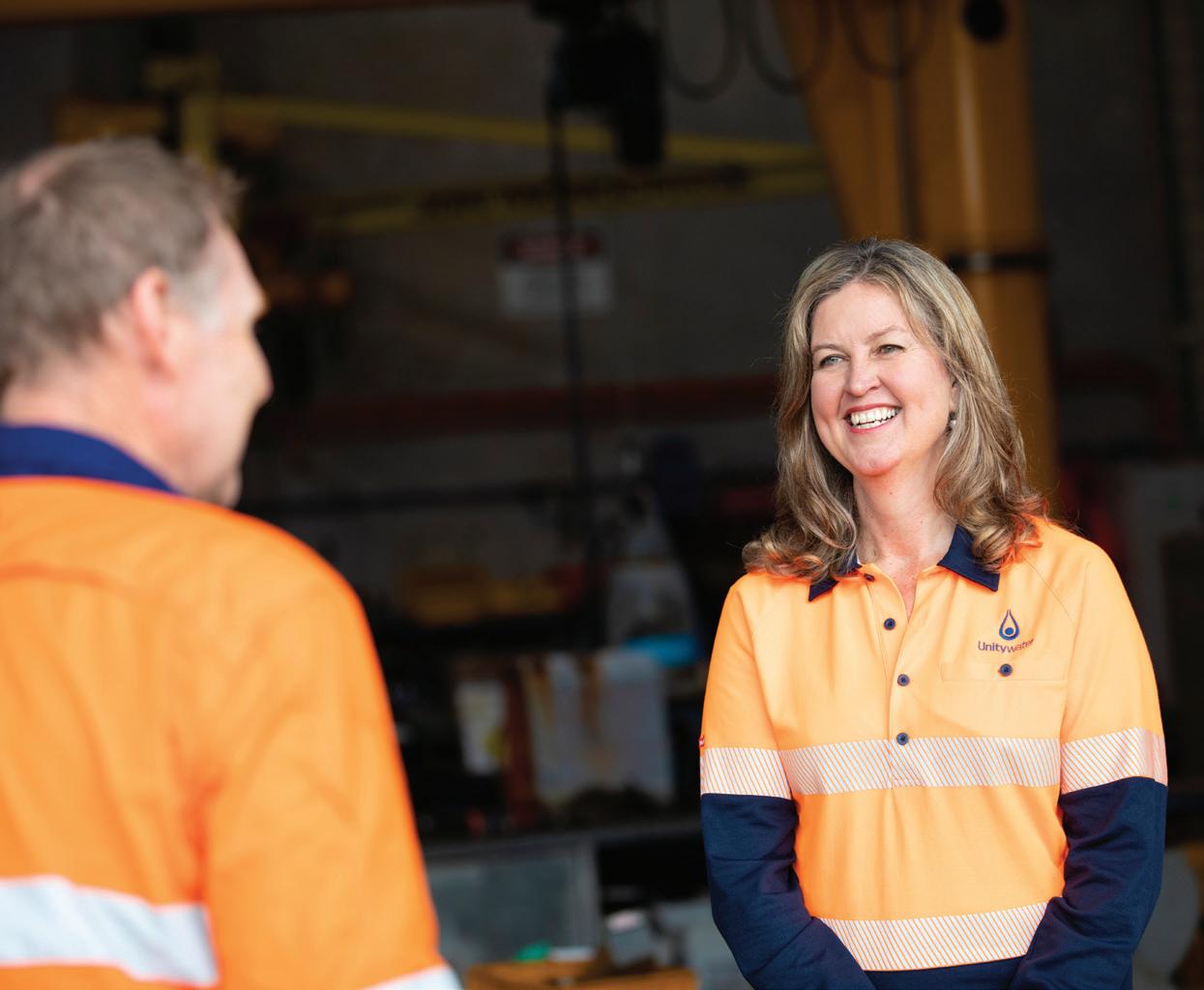
UTILITY • NOVEMBER 2022 WWW.UTILITYMAGAZINE.COM.AU 26
INDUSTRY INSIGHTS

have and whatever your background is, bringing that mindset is really important,” Ms Jackson said.
She also said that the industry needs people who are curious and willing to learn and try new things, with one way to achieve this being accepting short rotations into other areas of the organisation to round out their skills and build a holistic view of how everything works.
DIGITISING AUSTRALIAN WATER UTILITIES
Every day Unitywater operates and maintains more than $3.4 billion of infrastructure. Most utilities have already realised the significant impact new technologies can have on operations and are at some stage of digital transformation. For Ms Jackson, there is one particular technology that she believes is really the future of the sector.
“The technologies for me that have the potential to have a significant and positive impact for customers are still being rolled out, which are digital meters and sensors; acoustic sensors, and other sensors in our distribution networks, whether it's sewer or water.
“They are really powerful tools in terms of benefits realisation from both an operations and maintenance, and from a customer perspective.”
Ms Jackson said Unitywater has sensors throughout its distribution networks, and has rolled out a trial of smart meters at the customer end as well. Sensors give utilities a heads up on potential issues before they become costly and damaging.
“We are starting to see as an industry it becoming the norm to roll out sensors through our networks, especially on roads where we know it would have a really significant impact if you had a main break. If you can be ahead of that disruption and avoid all of those things that come with a large main break in the future, that would be excellent, and you could operate your networks in a consistently proactive and intelligent way.”
LESSONS FOR OTHER UTILITIES AND EXECUTIVES
As Ms Jackson moves forward and executes her vision for Unitywater as its new CEO, she plans to utilise what she describes as a “very collaborative
sector” and recommends this for other utilities.
“One of the biggest lessons I’ve learnt is don't try and do everything on your own. Partnerships are key and you can do so much more if you partner with the right organisations, and it's incredibly rewarding as well.
“The second thing is respecting your stakeholders and your customers and listening to them if they say to you, ‘this is what we think and this is what we want’. This is our priority. I think the most important thing you can do is make it clear that you have heard and you believe them, and you're going to act on that.
“In terms of collaboration, I'm learning from other chief executives and managing directors in the water industry all the time, and they are a generous and helpful group. I'm pleased to be able to phone them and ask for their experience in dealing with different issues, and that's one of the real benefits of being part of this industry. I think that that's one of the real benefits of being in this industry, that you could even do that, it's wonderful.”
UTILITY • NOVEMBER 2022 WWW.UTILITYMAGAZINE.COM.AU 27 INDUSTRY INSIGHTS
Making waves:TRANSFORMING THE WATER INDUSTRY
While climate change is putting immense pressure on the global supply of water, digitalisation can improve sustainability – it’s one of the top three benefits of digital transformation. Here, Gentrack selected a panel of global experts to share their views on industry challenges and explore the key to digitising.
Water is a natural resource many of us take for granted, but recently it has been the subject of global concern. While devastating floods are wreaking havoc across Australia, the Northern Hemisphere is battling record breaking water shortages, including the worst European drought for 500 years.
Outside of our industry, we seldom appreciate the millennia of engineering advancements that have led to a system of safe, clean drinking water delivered directly into our homes and the removal of unwanted waste – or the immense pressure that system is under today.
Aside from the overwhelming effects of climate change, the global water industry is battling urbanisation and population growth, regulatory and political pressure, all while contending with aging infrastructure. And it’s not just the physical assets that are aging – 75 per cent of global utility customers are managed on legacy IT systems1. As a transformation powerhouse, we wanted to get to the bottom of this digital delay in the water sector.
While sustainability is a significant positive outcome of digitalisation, it was customer experience that stood out as the top benefit. This is unsurprising considering that many water firms don’t utilise data to inform intelligent customer solutions and propositions.
GIVEN THAT THE BENEFITS OF DIGITAL TRANSFORMATION ARE CLEAR, WHY ARE MANY WATER FIRMS RELYING ON MANUAL PROCESSES?

Our panel (83 per cent) claimed that during a transformation, operational and culture change present the biggest challenges, but poor change management capabilities are the biggest blocker to starting a transformation.
This is despite reports from Global Water Intelligence that global digitisation of the sector could lead to savings of approximately USD$176 billion on total expenditure over five years for drinking water treatment, distribution, customer services, metering and billing.
HOW DO WE GET PAST THESE CHALLENGES?
If culture is one of the key blockers, then the simple reality is this – it’s time to change the culture and introduce innovative thinkers into the business. Some of our panel even noted that going digital drives recruitment of leading tech talent.
What’s more, our panel agreed that engaging a proven technology partner is key to overcoming poor change management. When 70 per cent of transformation projects fail, it’s understandable that the water sector is resistant to change. But being a digital laggard isn’t the answer. The global challenges facing the water sector will become unmanageable for those relying on manual processes.

Working with a delivery partner with a ten per cent transformation success rate, water businesses can mitigate the migration risks and focus on the benefits of delivering world-class customer and operational excellence, slashing their cost to serve and driving continuous innovation.
UTILITY • NOVEMBER 2022 WWW.UTILITYMAGAZINE.COM.AU 28 INDUSTRY INSIGHTS | Sponsored editorial
1 Based on data from Gartner “Market Guide for Utility Customer Systems” Published 10 November 2021
For more information, please visit www.gentrack.com

Made with experience
As one of Australia’s largest broadband networks, our dedicated and experienced nbn® New Developments team has delivered nbn network access to more than 1.2 million new development premises nationwide.
We can do more for your build

Make nbn part of the plan
Visit nbn.com.au/newdevelopments
GENUINE WATER COLLABORATION through Reconciliation Action Plans
Barwon Water’s award-winning Aboriginal Employment and Retention Strategy is just one part of its approach to working with Traditional Owners.
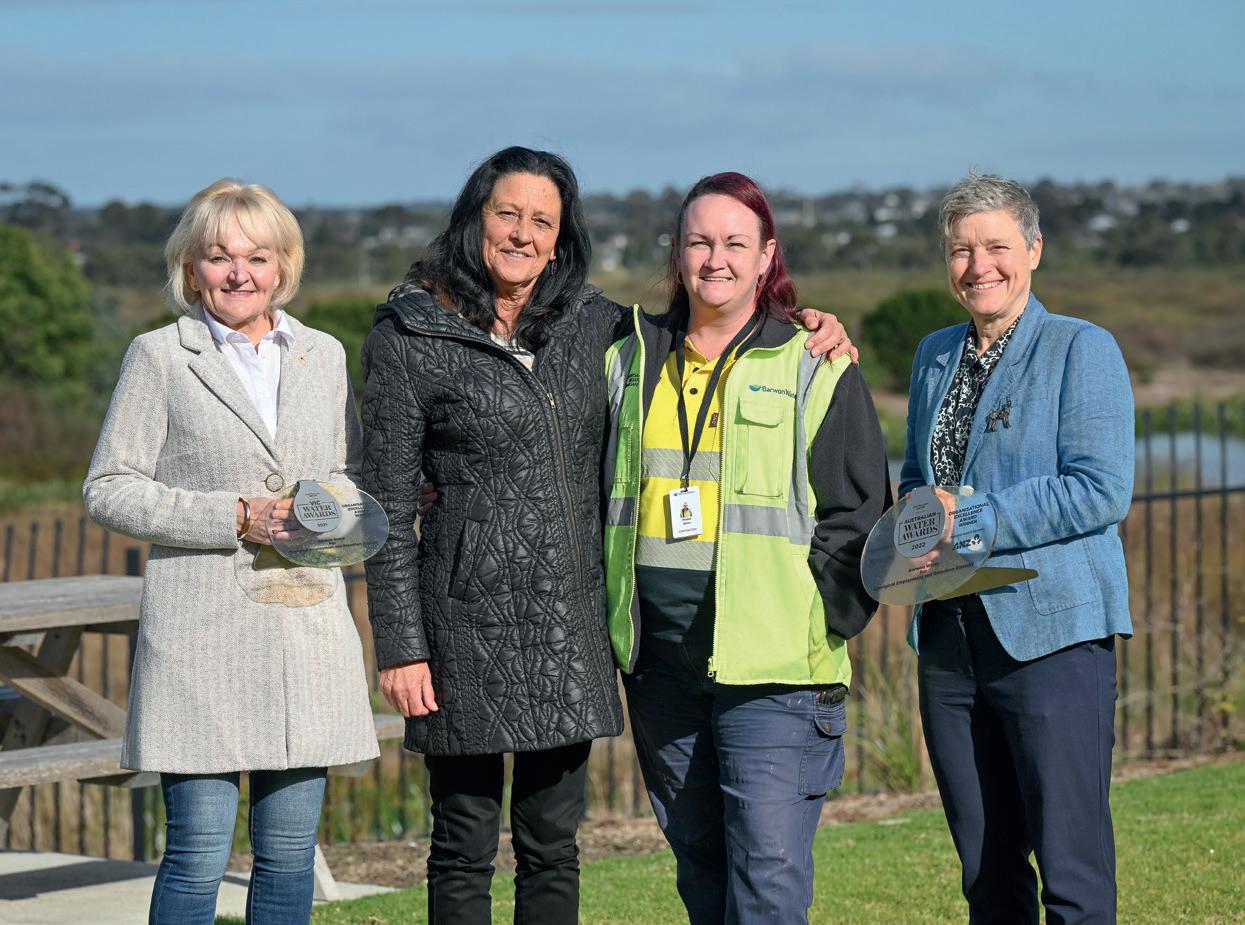
Barwon Water’s nationally-recognised Aboriginal Employment and Retention Strategy highlights the work the water corporation is doing to continue improving the cultural safety of its workplace as it seeks to increase the employment of First Nations people in all levels of the organisation.
Barwon Water Managing Director, Tracey Slatter, said that from board level down, the water corporation had tried to drive a whole-of-organisation approach to boosting Traditional Owner involvement in water management.
“At every board meeting, as well as an Acknowledgement of Country, we have a monthly reflection on First Nations achievements and issues for the month,” Ms Slatter said.
Ms Slatter said that by doing so, Barwon Water was striving to become a culturally safe and inclusive place for First Nations people to participate as employees, and thrive, grow and influence the organisation.
“Our Aboriginal Employment and Retention Strategy, which won the state and national Australian Water Association Award for Organisational Excellence, is a good example of how we are trying to achieve what we want in this space,” she said.
Creating the strategy was a strong commitment in Barwon Water’s Innovate Reconciliation Action Plan (RAP).
At the heart of the strategy is understanding and embedding First Nations cultural values and the holistic wellbeing of First Nations Peoples.
UTILITY • NOVEMBER 2022 WWW.UTILITYMAGAZINE.COM.AU 30
INDUSTRY INSIGHTS
BARWON WATER DEPUTY CHAIR ELAINE CARBINES, MEMBER FOR GEELONG AND PARLIAMENTARY SECRETARY FOR FIRST PEOPLES CHRISTINE COUZENS, TOOGEE WOMAN AND BARWON ASSET SOLUTIONS’ EMPLOYEE HAYLEY JONES, AND BARWON WATER MANAGING DIRECTOR TRACEY SLATTER WITH THE STATE AND NATIONAL AWA AWARDS WON BY BARWON WATER’S ABORIGINAL EMPLOYMENT AND RETENTION STRATEGY.
It provides the foundations for creating and delivering culturally appropriate, respectful and meaningful outcomes for First Nations employees.
The strategy holds Barwon Water accountable for developing meaningful connections and employment opportunities with First Nations peoples in its service region, to enable their knowledge, understanding and water values to form an integral part of the organisation’s water management and planning programs.
UNDERSTANDING AND SUPPORTING CULTURES AND HISTORIES
Two successful initiatives coming from the strategy include the twelve-month traineeship program, developed in partnership with Wan-Yaari Aboriginal Consultancy Services and Gforce Employment Solutions, as well as an in-depth Connection to Country program for all employees, which includes cultural heritage education and visits to culturally significant sites in the region.
“Partnering with Wan-Yaari Aboriginal Consultancy Services, we put a lot of work into the strategy and our Innovate RAP,” Ms Slatter said.
“It’s also been part of our journey in furthering our understanding and importance of First Nations Cultural Values while creating a culturally safe work environment as we strive to attract increasing numbers of First Nations employees into career pathways that are diverse and inclusive.”
Ms Slatter said in addition to the strategy, building strong relationships with Traditional Owner groups was crucial to Barwon Water’s work.
“We would like to give a special thanks to Wadawurrung and Eastern Maar Traditional Owners for helping guide us to see the land, water and environment around us through the eyes of a Traditional Owner.
“Their willingness to share knowledge and stories assists us to understand and support their cultures and histories, in turn helping us to Connect with Country.”
Ms Slatter said there had been some milestone moments in Barwon Water’s reconciliation journey since the Innovate RAP was implemented in 2018.
These included the decision to transfer land near Ballan Reservoir to the Wadawurrung, the partnership with the Wadawurrung on the Porronggitj Karrong project on the land around the Aqueduct in Geelong, and Caring for Country tours with Traditional Owners across Barwon Water’s service area, where staff and Traditional Owners shared stories and knowledge.
Ms Slatter said many staff had commented on how much they valued the experiences, which has changed their understanding and mindset.
“Every time we have the benefit of learning more, we realise how much better our organisation and region will be when we – in true reconciliation – create a new future that melds our knowledge for common purpose.”
Ms Slatter said she and other Barwon Water staff had spent valuable time with Traditional Owners learning from
them about how to think differently about the lands and water that the water corporation manages.
“I am very grateful for the generosity Traditional Owners have shown in sharing their deep knowledge.”
OPENING BARWON WATER LAND
Ms Slatter said that while Barwon Water had made huge strides in its reconciliation journey, she was looking forward to the organisation going further and embedding reconciliation in everything it did as part of its Stretch RAP, which was now with Reconciliation Australia for review.
“The Stretch RAP outlines the steps we will take to ensure that Reconciliation becomes part of everything we do at Barwon Water. It shows we will continue to invest in relationships with Traditional Owner and First Nations organisations and advance reconciliation within our organisation and our sphere of influence in the region and the broader water industry.”
Ms Slatter said that locally, the Barwon River was increasingly becoming a focal point for First Nations participation in water, including through the Porronggitj Karrong project, where Barwon Water is partnering with Wadawurrung Traditional Owners to explore opportunities to open Barwon Water land, which is no longer required for operational purposes, to the community.
The 66-hectare parcel of land, which features a heritagelisted aqueduct, is significant for the Wadawurrung Traditional Owners who have a connection with the river and surrounds dating back thousands of years.
“In partnership with Wadawurrung and other stakeholders, we are engaging broadly to develop a plan that, when implemented, will enable the area to be accessed and enjoyed by the whole community for its high ecological, heritage, cultural and recreational values,” Ms Slatter said.
Referred to as the Porronggitj Karrong (Place of the Brolga) project, the cultural and community precinct proposed for the area is intended to be a place people can visit to walk, paddle, and reflect.
It will also be a place where traditional land and water management practices are trialled to rehabilitate and to learn about the local environment. Plans are being developed in partnership with Wadawurrung Traditional Owners and in consultation with the broader Geelong community.
“The Wadawurrung are having significant input into this project and we’re learning a lot as we go,” Ms Slatter said.
Meanwhile, Barwon Water also has a three-year partnership agreement in place with Wadawurrung Traditional Owners Aboriginal Corporation, which Ms Slatter said had been an important step in ensuring genuine collaboration with Traditional Owners on various projects.
“The actions and projects we have implemented are contributing to positive change both within our business, as well as the broader community.
“We look forward to continuing to work in partnership with the traditional owners of the land on which we work.
“We know there is a lot of work still to be done in this area, but we think we are on the right path,” Ms Slatter said.
UTILITY • NOVEMBER 2022 WWW.UTILITYMAGAZINE.COM.AU 31
INDUSTRY INSIGHTS
INDUSTRY LEADING TECH

UNLOCKING CLEAN ENERGY POTENTIAL
People living in regional and remote Western Australia will soon be able to embrace clean energy technologies and reduce their energy bills, with Horizon Power rolling out industry leading technology to create smart, integrated, and cleaner energy systems across the state from early 2023.
The state government owned power provider is deploying a technology system that enables safe, stable, and large-scale integration of customer and utility energy resources, making it easier to connect to solar and energy storage and providing a pathway to decarbonised energy systems.
The energy management technology, called a Distributed Energy Resources Management System or DERMS, enables utility owned energy resources, such as power stations, solar farms, and batteries, to be safely integrated with distributed customer owned energy resources,
such as rooftop solar, batteries, and electric vehicles.
The DERMS can monitor generation from both customers and the utility in real-time and use predictive analytics, including weather pattern analysis, to forecast changes in generation and demand and make constant adjustments so the energy system remains stable.
Horizon Power General Manager
Technology & Digital Transformation, Ray Achemedei, likens the technology to the conductor of an orchestra, because the system coordinates generation from the different power sources of gas, large-scale solar and rooftop solar.
“DERMS is the conductor and the orchestrator of the flow of energy throughout the network, both utility and customer energy generation sources,” Mr Achemedei said.
“With approximately 60 per cent of Horizon Power’s energy systems currently dealing with limits on rooftop solar, deploying a distributed energy resources management system will increase solar access for our customers, lower their energy bills, and help reduce emissions.
“This deployment is ground-breaking as it enables rooftop solar, customer batteries, electric vehicles, centralised solar and batteries, and the traditional centralised power station to all work
UTILITY • NOVEMBER 2022 WWW.UTILITYMAGAZINE.COM.AU 32
RENEWABLES
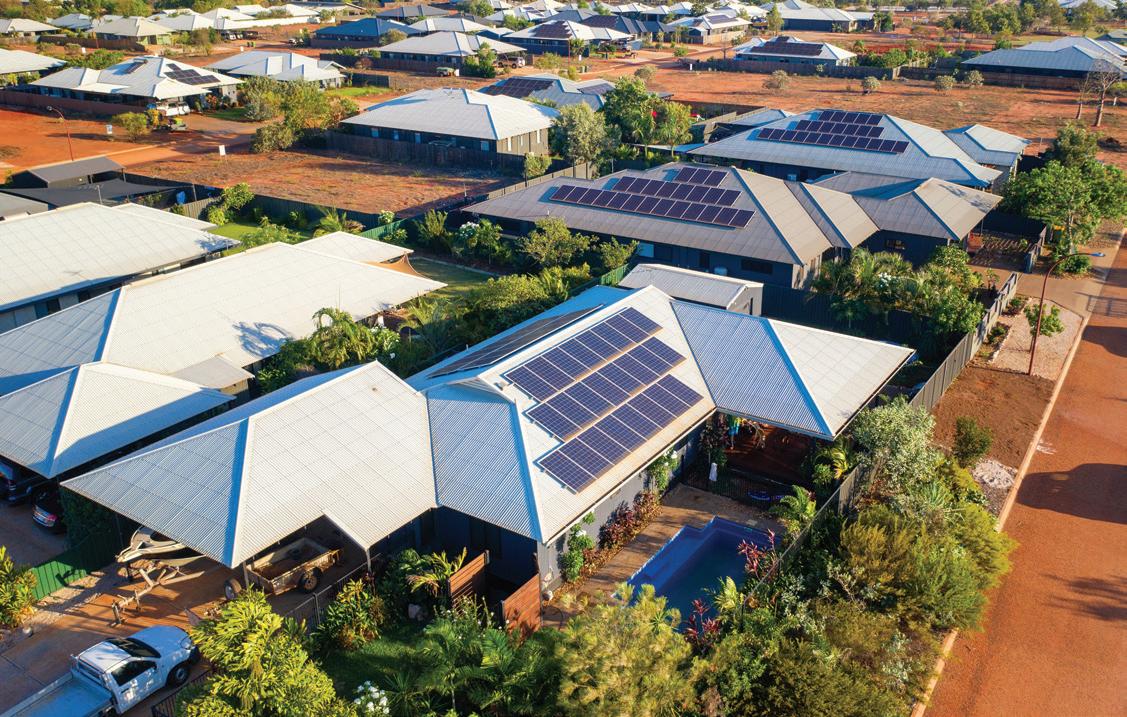
together in a coordinated way to maximise renewable energy supply, without adversely impacting power quality and reliability.
“It is the technology that will underpin the transition to 100 percent renewable towns.”
SOLVING ISSUES AROUND SURPLUS CUSTOMER SOLAR
The technology will be deployed in Broome in the Kimberley region of Western Australia in early 2023 and rolled out progressively across Horizon Power’s other regional microgrids by mid-2024.
Kimberley MLA, Divina D'Anna, said it was an exciting opportunity for the Broome community, as it would allow more households to access rooftop solar and embrace other clean energy technologies, including battery energy storage and electric vehicles.
"The Kimberley is one of the sunniest regions in Western Australia, so this is a great opportunity for the community to be leaders in the transition to net zero emissions by 2050," Ms D'Anna said.
The rollout follows a ground-breaking, Australian-first demonstration which saw the regional Western Australian town of Onslow powered with 100 per cent renewable energy.
The Onslow microgrid is one of 34 microgrids that Horizon Power operates servicing homes, businesses, and communities across regional and remote Western Australia, and was the trial site for DERMS.
The result is that the microgrid accommodates three and a half times the amount of solar than previously possible, because the risk of outages has been mitigated.
“That's an enormous benefit because it means customers can
leverage their solar, as much as the sun allows, and DERMS manages the system to allow that to happen,” Mr Achemedei said.
“Historically, we have been massively constrained across the majority of our microgrids in our ability to allow customers to install solar, with approximately 60 per cent of Horizon Power’s energy systems currently dealing with limits on rooftop solar.
“DERMS solves a big problem that a lot of organisations in the energy industry are facing at the moment, which is, surplus customer solar is creating problems for the grid's stability and security.
“The reason being is these systems were designed based on a model that's over a 100 years’ old when there was a unidirectional flow of energy, whereas now with rooftop solar, it's bidirectional.”
UTILITY • NOVEMBER 2022 WWW.UTILITYMAGAZINE.COM.AU 33 RENEWABLES

TACKLING THE CHALLENGES OF THE ENERGY TRANSITION
Most power grids were designed to push power in one direction, from the utility scale generator to the individual users, but rooftop solar generators push power in the other direction, from the home or business back into the grid.
By its nature, solar power fluctuates day to day, and even minute to minute, and excess solar generation can overload the network and potentially cause outages. Alternatively, rapid drops in the amount of solar power going back into the network – such as when a cloud passes overhead and reduces generation – can cause it to shut down if not enough power is moving through it.
“Spring days are typically the worst days. Moderate temperature, clear blue
skies, massive amounts of solar energy production but then demand is typically low because it's pleasant and you don't need your aircon powering away to cool your house,” Mr Achemedei said.
“We are now transforming energy systems across regional and remote Western Australia to accommodate new fuels, new generation, new technologies, and the new ways in which energy is used.
“We’re tackling the challenges of the energy transition head on – from centralised to decentralised; one-way to bi-directional, multi-directional flows of electricity; fossil-fuels to a decarbonised system; utility-led to customer and community driven.
“It’s great news for customers who are getting the benefit of reduced power bills because they can feed their excess solar back into the network.”
Kenn Donohoe, Chief Executive Officer of Ashburton Shire, where the Onslow demonstration project is located, said his community has embraced the change, with a lot of residents taking up solar generation now that they have the option.
“During the prime summertime season during that build-up to the wet season, it's not unusual for temperatures to be well into the 40 degrees celsius range. So, we're a high consumer of electricity, particularly for air-conditioning,” Mr Donohoe said.
“The community has really embraced this. This project has been such a change to liveability for young families in reducing power costs.
“Here's this little town within Australia really showing what Australia can do as a community and showing the world.”
UTILITY • NOVEMBER 2022 WWW.UTILITYMAGAZINE.COM.AU 34 RENEWABLES
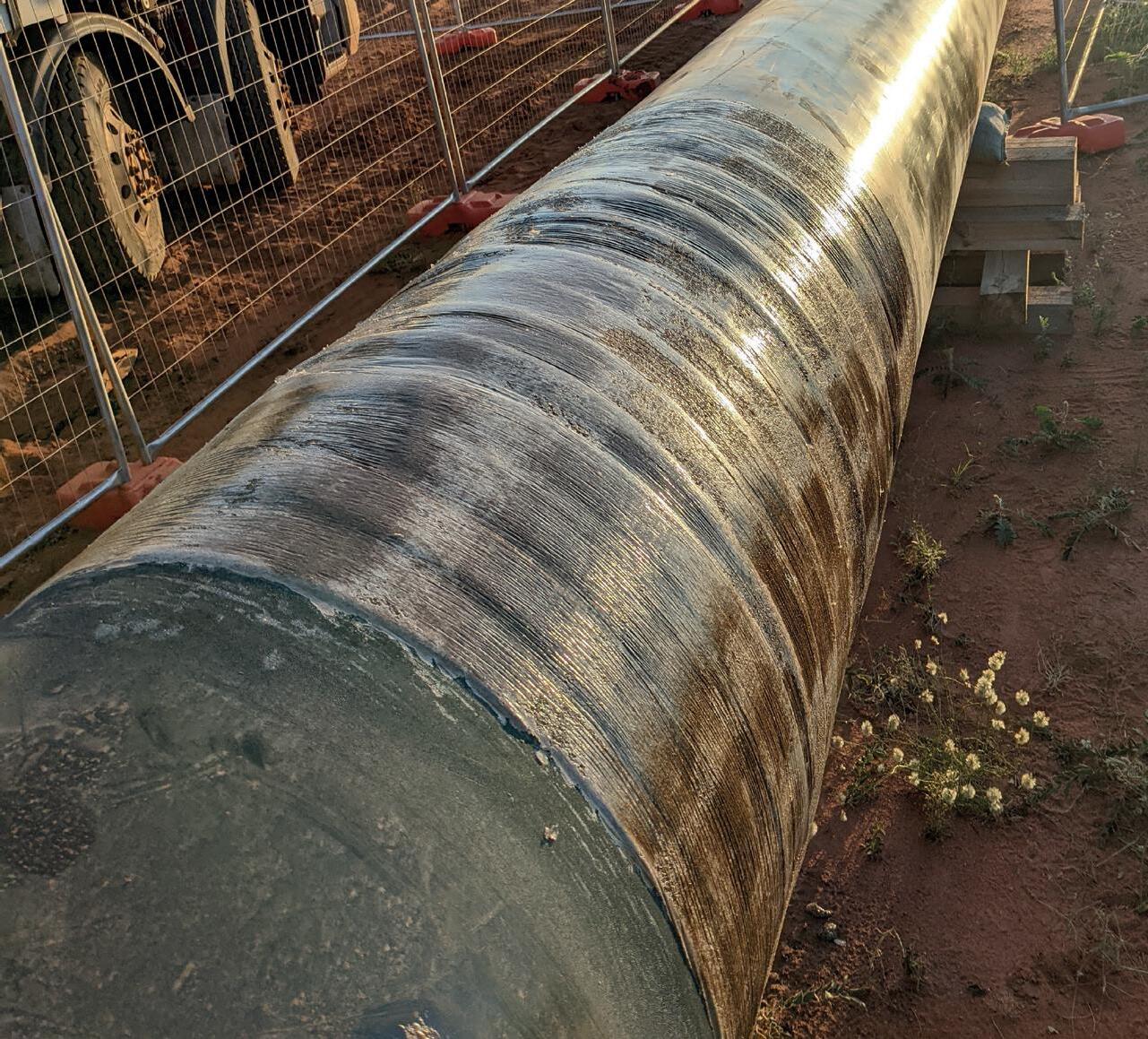
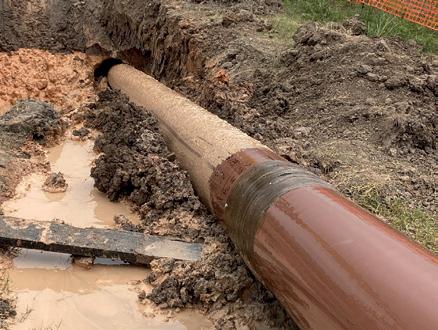

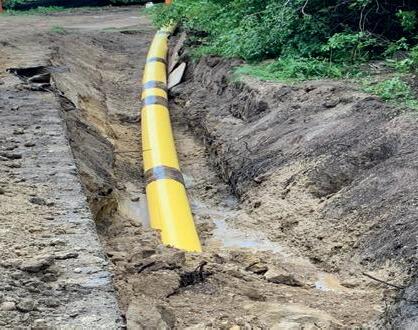
LEADERS IN CORROSION PREVENTION AND SEALING TECHNOLOGY DENSO BORE-WRAP ™ FIELD-APPLIED ABRASION RESISTANT OUTERWRAP (ARO) Scan this QR Code or visit www.densoaustralia.com.au/products/denso-bore-wrap/ to LEARN MORE SUITABLE FOR: Trenchless Installation, Horizontal Directional Drilling and Boring as well as the protection of Mainline and Field Joint Coatings FOR CORROSION PREVENTION
A MEMBER OF WINN & COALES INTERNATIONAL
DENSO® are leaders in corrosion prevention and sealing technology. With over 135 years’ service to industry, our mainline field joint coating solutions offer reliable and cost effective protection for buried pipelines worldwide. Australia & New Zealand United Kingdom, UAE & India USA & Canada Republic of South Africa www.densoaustralia.com.au www.denso.net www.densona.com www.denso.co.za

Distributed Energy Resources (DERs) like residential solar panels are a great way for homeowners to reduce their carbon footprint and the energy they draw from the grid. Consumer DERs can also benefit utilities, as owners of PV panels can augment the utility’s power supply by putting excess power into the grid. However, DER assets are only advantageous to both parties if utilities can manage their contribution to the grid safely and consistently.
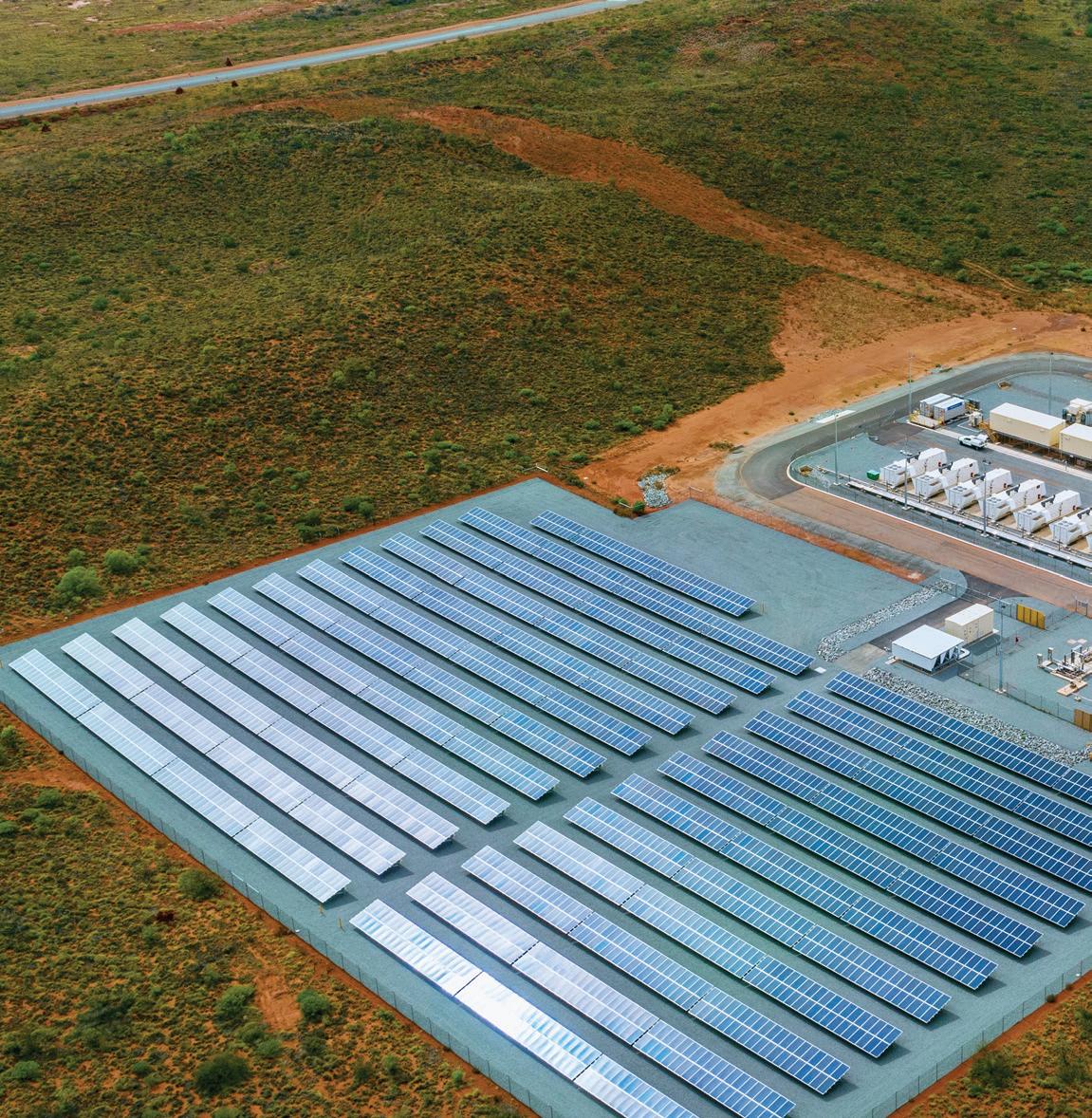
Solar PV and EV chargers can disrupt grid stability if utilities can’t accommodate spikes in power generation or consumption. To effectively manage DERs, utilities need to employ innovative clean energy technology that can seamlessly manage and integrate various resources from DERs to traditional power plants.
Managing these resources while minimising grid disruption and controlling for intermittent power supply is a huge challenge, and a grid that cannot effectively support DERs is essentially wasting clean energy. Utilities may think accommodating these renewable assets and making full use of their clean energy requires major infrastructure upgrades.
However, cost-efficient software solutions exist now that utilities can easily integrate with legacy grids to balance both renewable assets and legacy fossil fuel power plants.
DERMS – a Distributed Energy Resource Management System – is the key to unlocking the renewable energy potential of communities’ residential DERs. Without requiring major infrastructure upgrades, utilities can install a tool today that manages the rapid addition of renewable assets. A DERMS gives grid operators a comprehensive view of everything that’s happening on the grid, and can balance power between intermittent assets, energy storage, and legacy power plants.
UTILITY • NOVEMBER 2022 WWW.UTILITYMAGAZINE.COM.AU 36
RENEWABLES | Sponsored editorial

MONITORING THE GRID IN REAL TIME
PXiSE Energy Solutions has partnered with several utilities around the world to help manage their energy assets with a DERMS solution. One such project is in the remote town of Onslow, Australia, where utility Horizon Power needed a way to integrate a broad array of customer DERs into a grid that includes fossil fuel generators. This isolated community lacks a connection to a larger power grid, which makes power management with a high number of intermittent renewables more challenging.
Horizon Power paired a state-of-the-art DERMS alongside a microgrid controller from PXiSE that uses two-way,

sensor-based technology to monitor the grid in real time, mitigating disturbances and balancing variable solar generation, energy storage, and customer demand.
With 260 customer solar PV resources providing 2.1MW generating capacity (and capacity for an additional 200kW), the project provided Horizon Power with the tools needed to manage Onslow’s diverse energy assets.
The project also demonstrated that the combination of a microgrid controller and DERMS can help a community run entirely on fossil-free DERs. Earlier this year, in the world’s first known instance of solar-plusbatteries supplying 100 per cent of a community’s power, Onslow was powered without the use of any fossil fuel or hydropower-based systems for 80 minutes.
The landmark event in Onslow proves that a DERMS can manage DERs with a degree of precision that eliminates grid stability concerns and moves communities closer to being able to operate entirely on renewable energy assets.
As communities seek to meet their climate action goals, DERs will continue to increase. DERMS technology available today can help utilities ensure their grids are not only prepared but also optimised for the benefits of the clean energy revolution.
For more information, please email au.enquiries@yokogawa.com.
UTILITY • NOVEMBER 2022 WWW.UTILITYMAGAZINE.COM.AU 37 Sponsored editorial | RENEWABLES
IMAGE CREDIT: HORIZON POWER
IMAGE CREDIT: HORIZON POWER
DELIVERING GEOSPATIAL INTELLIGENCE FOR HORIZON POWER
Leveraging remote sensing, imagery, and advanced analytic technologies, Horizon Power’s Geospatial Intelligence Program aims to deliver a geospatial intelligence solution that transforms the utility’s ability to quickly understand the state of the network.
With a network spanned across thousands of kilometres, the program will optimise asset performance, and keep the network safe and reliable. Horizon Power has selected geospatial specialist Altavec to deliver the program.
In Western Australia, Horizon Power is leading the energy transition with a clear strategy to deliver cleaner and sustainable renewable energy solutions for regional and remote areas. The Geospatial Intelligence Program will create a common operational view of the network and assets that stakeholders can easily explore, analyse, and visualise to make informed decisions.
When imagery and operational data is available in one system and integrated with analytics, it will become much easier for stakeholders to understand the state of the network – HV and LV distributions assets, clearances, and vegetation. This solution will enhance Horizon Power's ability to resolve core data issues with network alignment, and implement predictive maintenance strategies aimed at reducing network failures and damages.
The centralisation of knowledge, more accurate data, and enhanced management visibility will significantly reduce risks and improve network reliability while lowering costs. The innovative use of imagery and other remote sensing technologies will lead Horizon Power away from the run-tofailure model and towards a predictive data-driven model.
ACTIONABLE INSIGHTS
Altavec delivers a world-class, cloud-based geospatial intelligence platform. The Altavec AIMS 3D platform is designed to process LiDAR (for network realignment, vegetation analysis and network clearance analysis) and images (for asset condition monitoring) in a highly automated fashion.
The result being the full network rendered in 2D and 3D, matched to Horizon Power’s assets, and tagged with defects or vegetation encroachments. With the addition of Artificial Intelligence (AI) and Machine Learning (ML) techniques, Altavec scans thousands of images collected across the network in minutes, and guides Horizon Power to areas of concern.
Streamlined analytics enable the delivery of actionable insights to decision makers who can get the right team
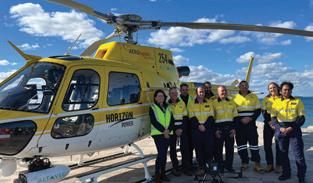
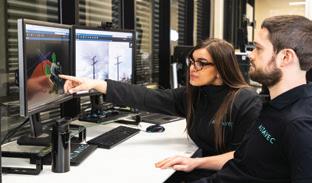
to the right place at the right time. Altavec is investing heavily to continually improve the accuracy and breadth of the automation.
Business benefits delivered to Horizon Power include:
• Virtual inspections will provide the ability to plan beyond near run to failure model and gain visibility into the health of asset and equipment that cannot be seen from the ground
• Accurate identification and quantification of noncompliant asset conditions, prioritisation of asset maintenance/repairs and targeted preventive maintenance will increase the life of assets and reliability across the network
• Situational awareness of the network will improve preparedness during emergency events and natural disasters
• Access to geospatial information will assist in planning and prioritising before crews begin field work, reduce site assessment visits and field travel time. The information will also improve permitting workflows, resulting in better data and time savings for both office and field crews
• Reactive maintenance costs will be reduced with improved system reliability and fault response efficiency
Altavec (previously known as Geomatic.ai) is a Tech Mahindra company, specialising in geospatial and network intelligence services to deliver digital asset insights. Designed to empower infrastructure businesses to make truly informed decisions about their assets, the team at Altavec convert LiDAR and imagery into digital network models for compliance, analysis, planning and design purposes.
Having completed over 300,000kms of network survey and analysis work across Australia, Altavec have been trusted partners to Australian utilities for more than 20 years.
Ongoing advancements in automated analytics along with developing machine learning and artificial intelligence algorithms ensure Altavec delivers the future of network intelligence, now.
For more information, please visit altavec.com or www.horizonpower.com.au.
38 UTILITY • NOVEMBER 2022 WWW.UTILITYMAGAZINE.COM.AU
RENEWABLES | Sponsored editorial


URGENT ACTION IS NEEDED to accelerate Australia’s energy transition
by Brett Redman, CEO, Transgrid
We must act now to accelerate the timeline for when renewables can deliver cheaper, cleaner and more reliable energy to homes and businesses.
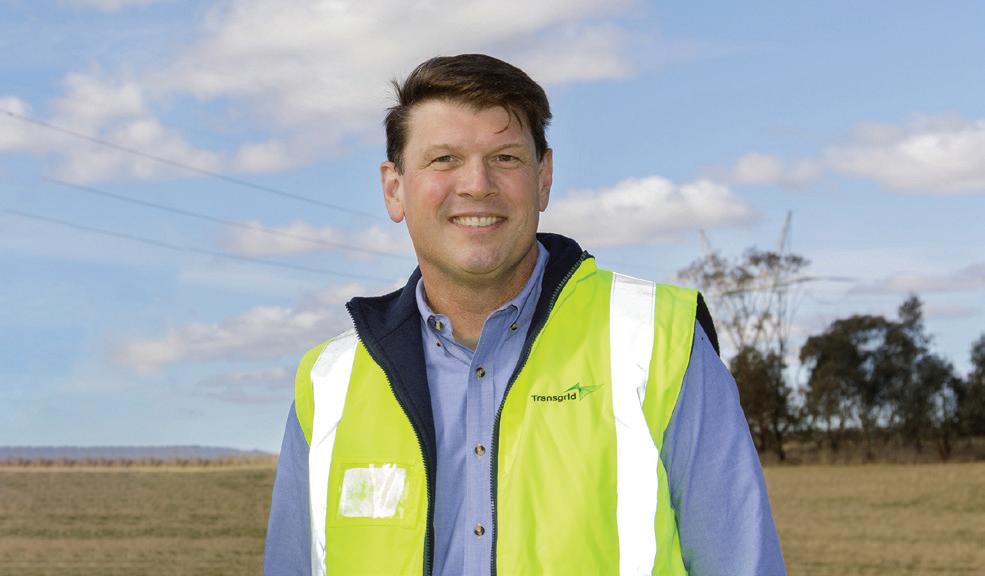
There will be no transition without transmission and that is why Transgrid is building the future grid, made up of major transmission projects which will enable the sharing of clean energy across the eastern seaboard.
Transgrid recently published its Transmission Annual Planning Report 2022 which supports calls for major transmission projects to be delivered faster and cheaper for consumers.
This key report aligns with the Australian Energy Market Operator’s 2022 Integrated System Plan, which states investment in new transmission needs to begin "as urgently as possible".
A June 2022 report by Endgame Economics found prompt investment
in transmission upgrades reduce the average wholesale price of electricity, however prices become higher and more volatile with extended delays to transmission upgrades.
It also found that the increase in average wholesale cost added to consumer bills, with a delay, greatly outweighs the small reduction in transmission cost due to deferred transmission capital expenditure.
For example, in New South Wales, the predicted residential consumer bill increase due to transmission delays are $283 (1.4 per cent) for a one-year delay to the ISP base case, $575 (2.8 per cent) for a two-year delay, and up to $1,428 for a four-year delay (6.9 per cent) (calculated over the FY26-2040 period, in real $2,022).
It means consumers will likely have larger electricity bills with greater transmission delay.
Equally important is the reality that the National Electricity Market is facing serious risk of energy shortages as we transition from coal to renewables at a rapid rate – even faster than expected. This is the critical decade for energy. The expansion of our grid is essential to underwrite energy security and mitigate the risk of significant black outs. We are building the infrastructure to enable the integration of existing and future wind, solar and hydro power. Our transmission projects EnergyConnect, HumeLink and VNI West will get this energy to market, filling the gap left as coal-fired generators become unreliable and retire.
UTILITY • NOVEMBER 2022 WWW.UTILITYMAGAZINE.COM.AU 40
RENEWABLES
The recent energy market crisis demonstrated the current system’s lack of resilience and the high consumer cost of disruption. These risks will continue until we have a strong, flexible electricity network capable of safely delivering high volumes of renewable energy.
Transgrid is responding to this reality.
chance of meeting the nation’s clean energy targets, while helping to drive down the cost of wholesale electricity. These tangible benefits represent valuable outcomes for everyone in the NEM.
These priority transmission projects will form the country’s energy superhighway. They must be progressed as urgently as possible. We will achieve this by bundling the projects together, to ensure we are able to attract and retain the people and materials to deliver them.
Transgrid is investigating the integration of these projects into a
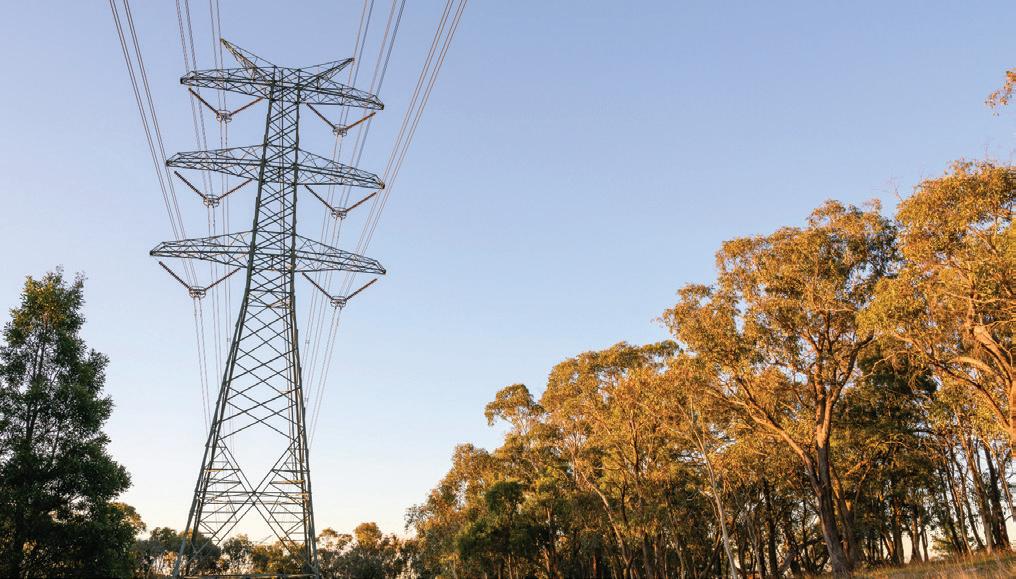
BUILDING AUSTRALIA’S ENERGY SUPERHIGHWAY
It is imperative Transgrid builds new transmission now, to avoid paying much more for this critical infrastructure later.
We recently delivered the $236 million upgrade of the QueenslandNSW Interconnector enabling more energy to flow between the states. Transgrid is also on track to deliver its Victoria-NSW Interconnector (VNI) upgrade later this year.
Construction is well underway on Australia’s largest electricity grid project, the $1.8 billion EnergyConnect interconnector, which will enable the sharing of energy between New South Wales, South Australia and Victoria for the first time. This critical project will allow integration of renewables in the state’s south-west and provide the best
Transgrid is also planning the VNI West project which will enable more energy sharing between New South Wales and Victoria. This will converge in Wagga Wagga with EnergyConnect and another actionable ISP project HumeLink.
HumeLink is a key component in a robust, future grid. It will enable a successful and rapid integration of new, clean energy from renewable energy zones and unlock the full capacity of Snowy 2.0. This energy, from wind, hydro and solar farms, will be shared across New South Wales, the ACT and the NEM.
The Australian Energy Regulator recently provided a vote of confidence in Transgrid’s HumeLink project by approving a $322 million funding agreement for Stage 1 early works. The delivery of HumeLink, alongside EnergyConnect and VNI West will reshape the NEM – providing a strong and stable platform for Australia’s economic growth.
single simultaneous program to deliver them earlier and cheaper, which will help put further downward pressure on customer bills.
Any delays to these projects will likely have a significant ripple effect on all dependent on our network.
For example, any delays to HumeLink would threaten the timely connection of new renewable generation and new interstate connections to the grid.
We must get ready faster for the retirement of the aging coal generation fleet. Building now to facilitate the connection of new renewable generation and storage is the only acceptable path forward for Australia’s energy consumers, who will reap the rewards of a rapid acceleration for generations to come.
UTILITY • NOVEMBER 2022 WWW.UTILITYMAGAZINE.COM.AU 41
RENEWABLES
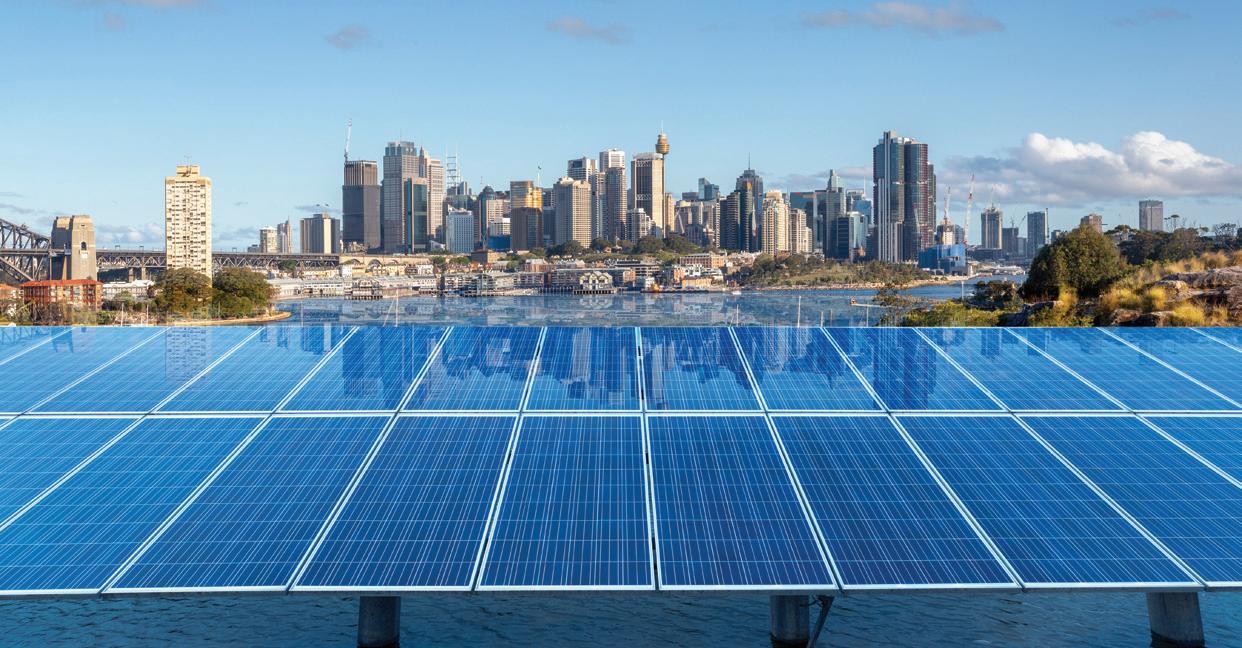
Year on year, the percentage of renewable energy entering the Australian electricity market is growing, and these figures are only set to increase as states and territories embrace increasingly optimistic net-zero goals. With these enhanced net-zero goals will come a flurry of project activity to deliver on our targets, and it is increasingly important that developers work with partners equipped to deal with the challenge of rapid renewable energy project deployment.
In the Australian Energy Market Operator’s (AEMO) most recent Quarterly Energy Dynamics report, it advised that coal-fired generation decreased by an average 117MW (12 per cent) compared to Q2 2021; and gas, solar and wind generation increased at all times of day, with distributed PV continuing to grow, increasing by 46MW (28 per cent) on average compared to Q2 2021.
By 2050, it is estimated renewable energy will supply the majority of the National Energy Market’s (NEM) electricity needs, with significant reductions continuing for coal and fossil fuel plants. Several coal plants are planned to shut down early, including the recently announced Loy Yang A Power Station – with the new closure date almost ten years earlier than previously announced.
The Federal Government’s Australian Energy Statistics (AES) report into 2020-2021 energy generation and use showed that in 2021, renewables represented a record high of 29 per cent of the total energy generation in the country, while fossil fuel generation continued to decline.
Diversifying energy streams creates a more interconnected grid, which means the grid needs to flex with the changing contributions of different energy sources – as well as the changing demands of Australian consumers.
The Australian Clean Energy Regulator (CER) also knows the importance of getting more renewable energy into the grid.
“As the rapid pace of renewable investment continues, planning for the integration of a much higher penetration of renewables into the national electricity grid is the next key phase in Australia’s transition to a clean energy future,” the CER said.
It’s important then, with multiple new renewable energy projects underway and being connected to the National Electricity Market, that developers look to trusted experience and stability in their renewable partners, to ensure that projects are constructed with the best equipment on the market.
Since 1916, MM Electrical Merchandising has been supporting the energy industry as Australia’s largest distributor of electrical, communications, solar and electrical component products. Greentech sits within the MM Electrical Merchandising Group and is Australia’s largest wholesaler network of solar and renewable energy specialists.
Since its inception, Greentech has been focused on supporting the stabilisation of the energy transition in Australia, and with over 3,000 staff across Australia, Greentech has the maturity and experience to support their customers as they begin or expand their transition to renewables.
Greentech supplies the world’s leading brands across products including photovoltaic panels, mounting systems, inverters, batteries and electric vehicle chargers. With national coverage, credit facilities, and the best brands, Greentech offers a complete solution. Greentech has the necessary equipment and instalment options, with a huge Australian inventory across its warehouses to support the growing renewable demand.
Adaptive, and understanding of the changing needs of the energy industry, Greentech haven’t lost their personal touch, and are proud to bring the same traditional service values they began the company with.
Greentech’s experience has consistently supported Australia’s businesses and contractors in the renewable energy sector. A leading supplier, Greentech’s online system allows for 24/7 web access and click and collect, so you can shop the needs of your business, in your preferred way.
We know Australia’s renewable energy future is here. Greentech is ready. Are you?
UTILITY • NOVEMBER 2022 WWW.UTILITYMAGAZINE.COM.AU 42
RENEWABLES | Sponsored editorial For more information on the products and services Greentech can provide for your business, head to https://greentech.mmem.com.au Are you ready?
FUTURE IS RENEWABLE AND IT’S HERE.
AUSTRALIA’S ENERGY









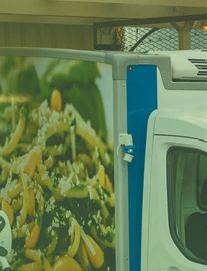






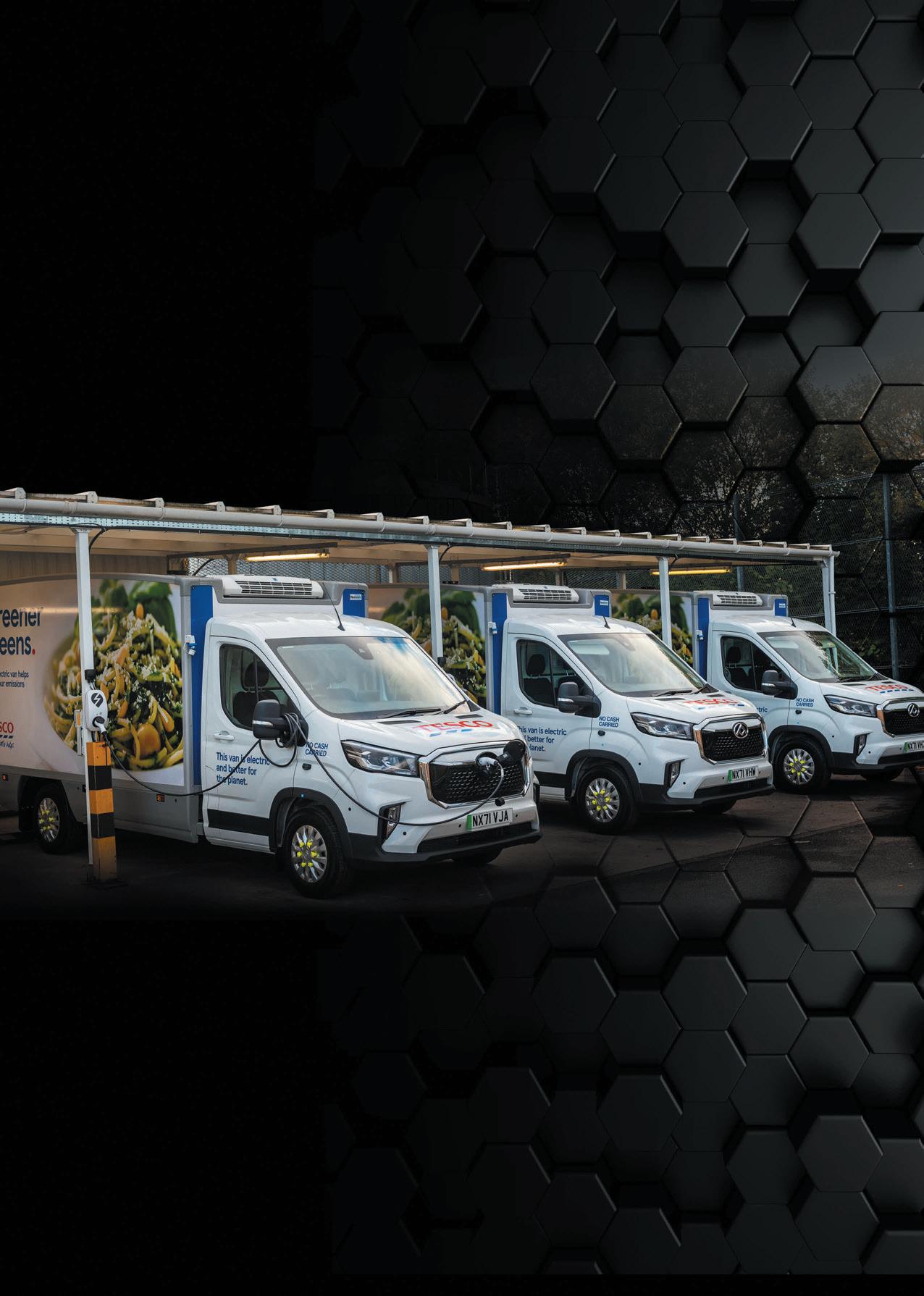






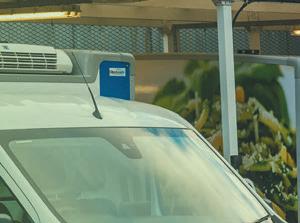



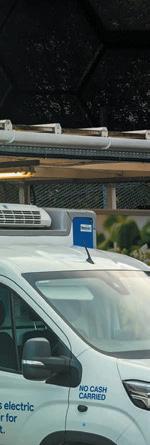


















The next generation OF SOLAR TECHNOLOGIES
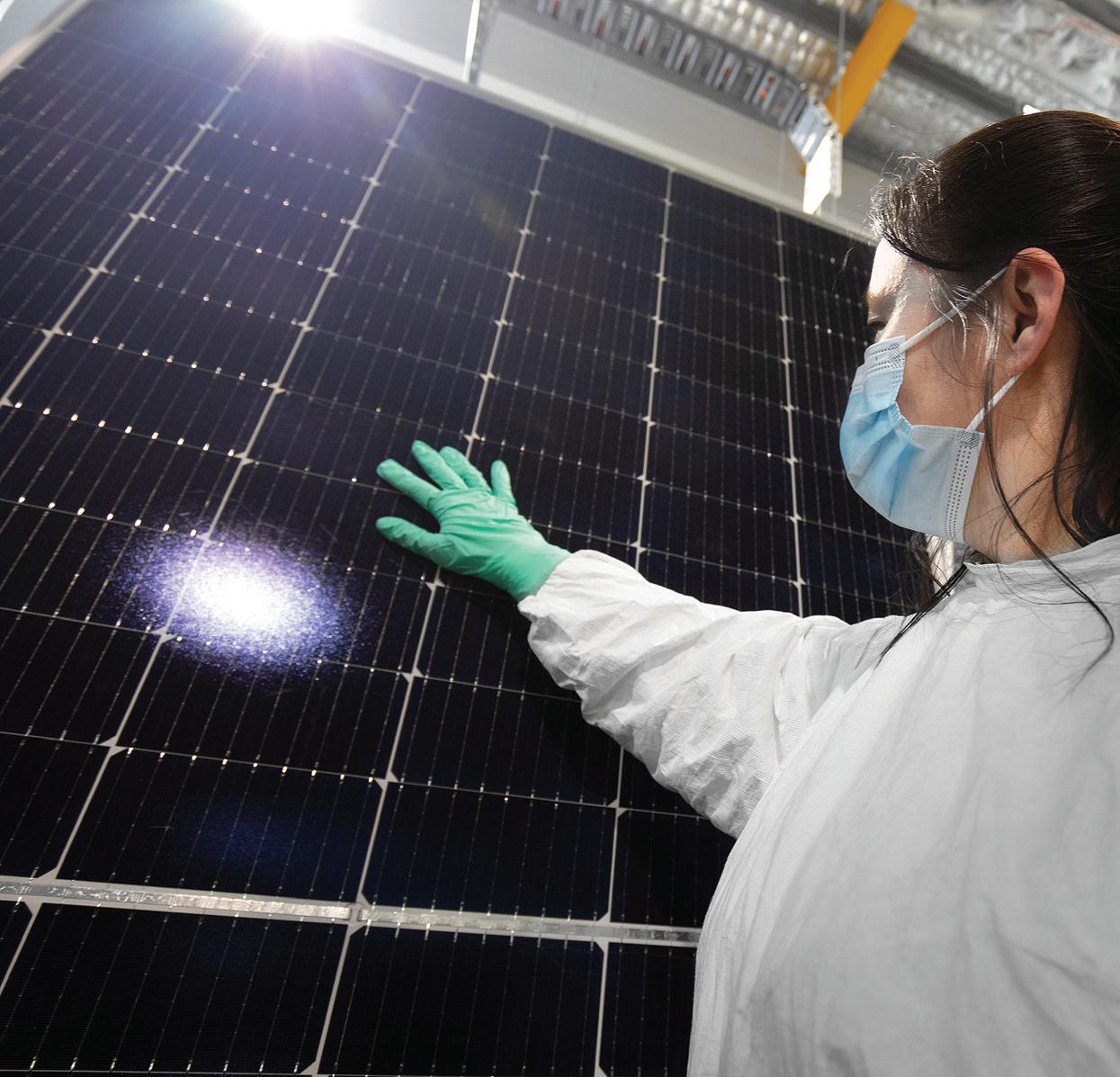
44
by Professor Renate Egan, Incoming Director, Australian Centre for Advanced Photovoltaics (ACAP)
RENEWABLES
IMAGES COURTESY OF THE AUSTRALIAN RENEWABLE ENERGY AGENCY.
THE SOLAR INDUSTRIAL RESEARCH FACILITY AT UNSW, SYDNEY.
In a recent announcement by Federal Energy Minister, Chris Bowen, ARENA will fund an extension of the Australian Centre for Advanced Photovoltaics (ACAP). Final negotiations are in process on the research program and partnerships, with work expected to start in 2023. Here, ACAP outlines breakthroughs in solar technologies, what the next generation of photovoltaic technologies looks like, and the role this plays in grid overhaul.

The program of work for the ACAP extension is framed around ARENA’s 30-30-30 targets, for 30 per cent module efficiencies, 30c/Wp systems costs by 2030. Together, these targets contribute to the economic stretch target of a low cost of energy of $15/ MWhr for energy from solar. This will enable green manufacturing and support a hydrogen export market.
ACAP will be focussing on achieving these 30 per cent efficiencies with new and emerging solar cell technologies. ACAP will also be addressing issues of manufacturability, including local content and sustainability, including design for recycling and recycling technologies. An important output, historically and in the new program of work, will be trained engineers and innovators to work with industry to deliver on the energy transition.
ACAP is the Australian Centre for Advanced Photovoltaics (PV), a national centre for solar PV research led by UNSW, in partnership with ANU, CSIRO, the University of Melbourne, University of Queensland and Monash University. ACAP started with this group in 2013, in partnerships with industry and international research institutions to work together on the next generation of photovoltaic technologies to be deployed in Australia and globally.
ARENA provides significant funding for the work of ACAP, and in 2022, renewed its support for another eight years. With the extension comes new partnerships with the University of Sydney and the addition of CSIROEnergy to complement the activities of CSIRO-Manufacturing.
Cell technologies have historically been the great research strength of ACAP, and we’re excited to be continuing our world-leading work in the field. The cells currently in panels that you see now have efficiencies of somewhere between 21 and 25 per cent. The aim is to drive those cell efficiencies up and keep the price pressure on the technologies to make solar even more affordable than it already is.
To achieve these higher cell efficiencies, we have ongoing research into new kinds of materials for solar cells, as well as the design of cells and panels themselves. These two elements, new materials and cell and panel design, are at the forefront of where new performance breakthroughs in solar cell technologies are happening.
Tandem cells, which capture more of the light spectrum, and new materials like perovskites and adamantine that absorb light in parts of the spectrum that complement silicon, are big areas of interest to us. We’re confident that continued work on these technologies will bring us to 30 per cent efficient cells by 2030, if we really back ourselves.
MANUFACTURING IN AUSTRALIA
In regards to manufacturing, what we have seen historically is that the technologies are developed in Australia, and the manufacturing is done elsewhere. The PERC cell, which was invented at UNSW and is now in 90 per cent of all solar panels on earth, has been taken to scale in manufacturing successfully internationally, most successfully in China.
45 WWW.UTILITYMAGAZINE.COM.AU
(ACAP)
RENEWABLES
However, as the world moves to focus on a reality where up to 50 per cent of the world's energy is going to come from solar photovoltaics, we will need to coordinate investment to diversify supply, while keeping the price pressures down. We are looking at where Australia can contribute in the international solar supply chain, and we are working with industry partners who are ready to engage in securing solar for their long-term strategies, helping them make technology-informed investment decisions.
These are very big opportunities for Australian technology development in support of local manufacturing. Early indicators are that Australia has a role to play in the early-stage silicon refining part of the solar panel manufacturing chain, particularly as we increase the renewable energy content of the manufacturing, to make green-silicon. We continue to lead in cell-innovation, including with our partners, Australian company SunDrive, who are setting world records for manufacturing compatible processes.
And in the last stage of manufacturing, the module assembly phase, we are working with partners Tindo and the Australian Photovoltaic Institute (and others, yet to be confirmed) on opportunities to develop local manufacturing of input materials in support of module assembly.
Australia could produce the glass, the aluminium and the polymer encapsulants of solar panels. There is a significant opportunity for Australia to contribute to local and international supply chains for solar panel manufacturing. We’re working with our partners to support technical and financial modelling of these opportunities.

DEPLOYMENT AND INNOVATION OPPORTUNITIES
Beyond the cell technology and cell and panel manufacturing opportunities, we also look to innovation in
performance with our partners at RayGen, in new applications with BlueScope Steel, in deployment with our partners 5B and the significant opportunity in Sun Cable’s plan to deliver the world’s largest solar farm, generating energy in Australia, to then export it into Southeast Asia.
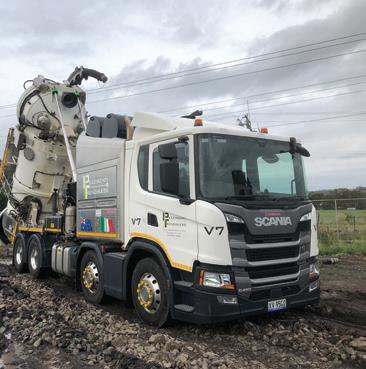
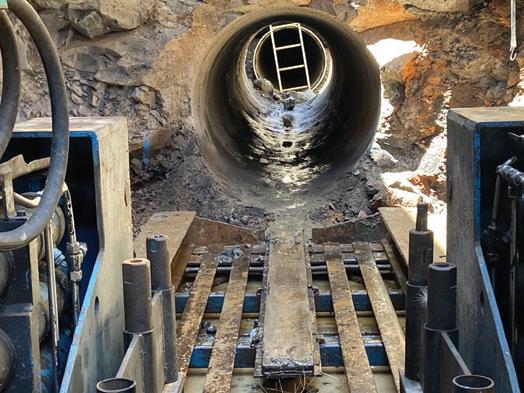

UTILITY • NOVEMBER 2022 WWW.UTILITYMAGAZINE.COM.AU 46
RENEWABLES
Unit 2 / 85 Heatherdale Road, Ringwood Vic 3134 PO Box 2500, North Ringwood Vic 3134 P: (03) 9872 4596 | F: (03) 9872 3293 | E: info@pezztrenchless.com.au Still the market leaders in laser guided microtunnelling Bore diameters from 325mm up to 2800mm Used for gravity sewers, water mains, storm water, gas and electrical conduits. Specialists in “free bore”, sleeve boring and pipe jacking in all sizes The Next Generation in Trenchless Technology
We also take the same deep knowledge around cell technology and convert it across the supply chain in quality control, performance assessment and monitoring to yield innovation, technology development and commercialisation opportunities, with partners BTimaging, PV Lighthouse, OpenInstruments and SolarVision, adding value locally and internationally in manufacturing and in large scale field deployments.
We ensure performance, to lower technology and project risk and to ensure return on investment.
THINKING SUSTAINABILITY FOR THE FUTURE
Importantly, we focus on sustainability and in the recycling of panels once they reach the end of the 25-30 year lifecycle. We’re very conscious of looking forward and planning for a robust increase in the amount of solar panels needed in order to shift energy generation to meet international zero emissions targets.
With long lifetimes for solar panels, we don’t yet have a pressing issue
with recycling, but we’re working on solutions for when the volumes are large enough to build a recoveryindustry around recycling. We don't want to repeat the off-shoring of recycling that has been seen in other sectors. We need to build an industry locally. Solutions being considered include solving the challenges of recovery logistics, and technologies for recycling.
On material sustainability, we have a worldwide 200GW a year market for solar now, and we are going to need to get that to more than double, and double again, to reach a terawatt for solar to deliver 50 per cent of current global energy needs.
Sustainability is important. At 200GW, solar panel manufacture uses around ten per cent of the world’s silver in its cells. So, if we're going to go fivefold, we have to do something different in the way we make the technology. With a long history in cell
development, we are working with partners, including SunDrive, to look at how best to replace silver with more abundant materials, while maintaining performance and long lifetimes, and downward pressure on price.
The team at ACAP sees solar PV as disruptive – and really only just beginning. We expect tenfold growth in deployment over ten years. That will demand the innovation, expertise and the resources that ACAP can deliver. Delivering on the 30-30-30 targets will support the economic stretch target of a low cost of energy of $15/ MWhr for energy from solar that will in turn create opportunities for Australia in manufacturing, in the hydrogen economy and in minerals processing.
This is a truly exciting time for the solar innovation sector in Australia, and we thank our supporters and partners in making it a reality that will carry us all into a clean and sustainable energy future.
For more information on projects and partnerships, please contact Professor Renate Egan at r.egan@unsw.edu.au

UTILITY • NOVEMBER 2022 WWW.UTILITYMAGAZINE.COM.AU 47 RENEWABLES
TRANSFORMING THE WAY THE WORLD BUILDS Capital Projects Management Software Learn more at InEight.com/Solving-Problems
The Evolution of SOLVING PROBLEMS
CONNECTING RENEWABLE ASSETS TO THE TRANSMISSION GRID
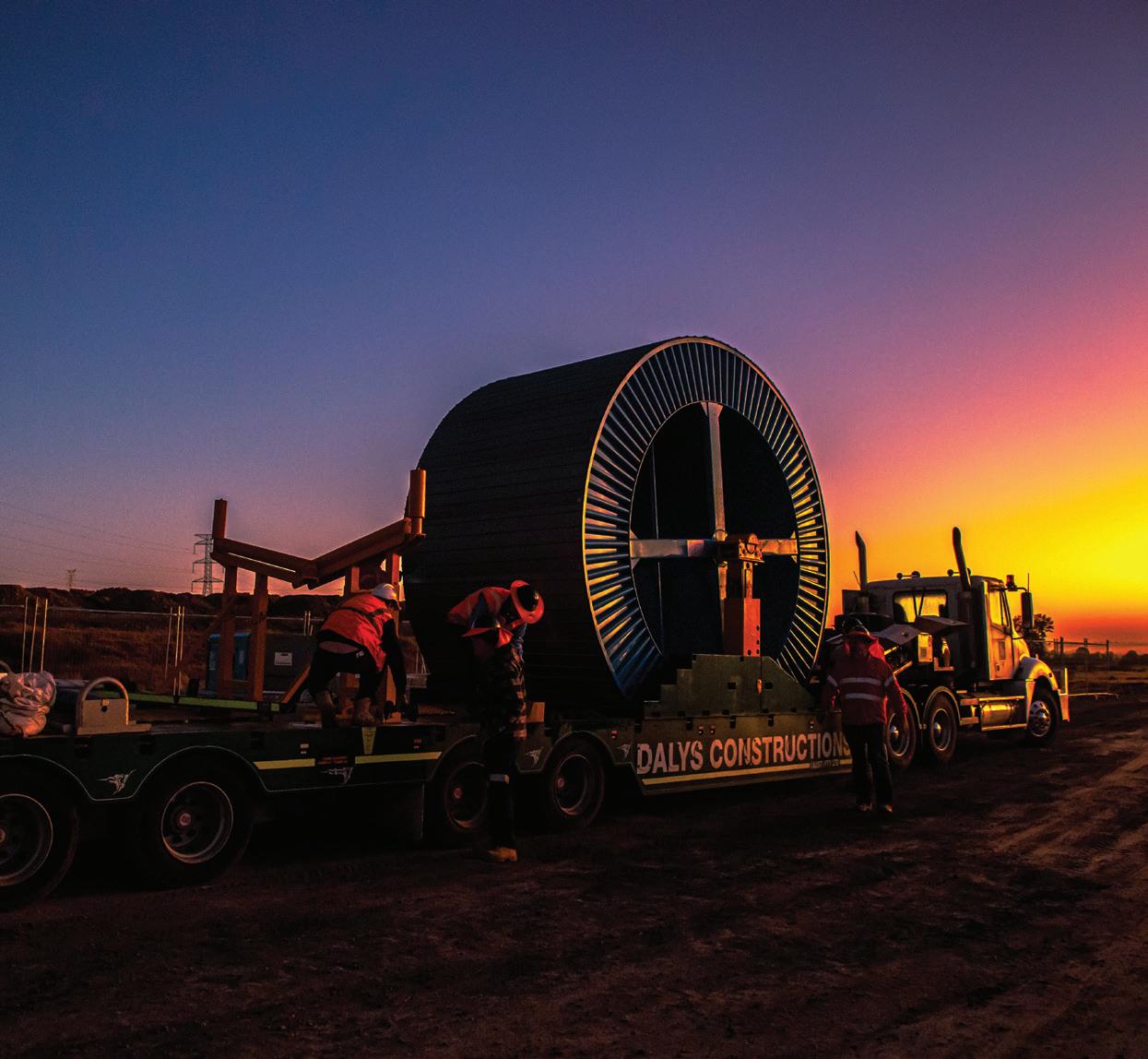
The Federal Government recently passed its Climate Change Bills in the Senate, cementing a 43 per cent emissions reduction target and commitment to net zero by 2050. This has highlighted the critical importance of renewable energy projects like the Wandoan South Solar Farm and 275kV underground cable connection project – which will be one of Australia’s largest solar projects once completed.
UTILITY • NOVEMBER 2022 WWW.UTILITYMAGAZINE.COM.AU 48
RENEWABLES | Sponsored editorial
The Wandoan South Solar Farm Project is located near Wandoan, 400km north-west of Brisbane in the Western Darling Downs region. When completed, the project will consist of solar photovoltaic (PV) panels on nearly 2,000ha with a proposed generation capacity of 650 megawatts (MW), and will generate electricity equivalent to the annual needs of up to 330,000 homes.
Vena Energy has engaged Powerlink Queensland to connect the solar farm to Powerlink’s Wandoan South Substation from the new Juandah Substation via a 1km 275kV underground cable system.
Powerlink awarded Daly’s Constructions a turnkey Engineering, Procurement and Construction (EPC) contract for the project, which includes:
• Final route verification
• Approvals from all stakeholders
• Design report, inclusive of civil, electrical, earthing and structural designs
• Underground cable system design to transmit 650MW of electrical power
• Procurement of all materials including 275kV power cable, cable joints and terminations, DTS system (Distributed Temperature Sensing), accessories and all civil construction materials
• Construction, supply and installation of 12km of power conduits
• Cable hauling
• Cable jointing and terminating
• Pre-commissioning tests and handover
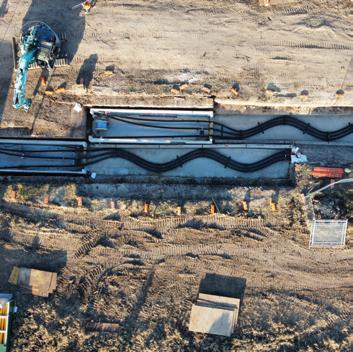
Daly’s partnered with Taihan Electric Australia to deliver the project.
OVERCOMING WEATHER AND LOGISTIC CHALLENGES
Daly’s Constructions’ first large cable project for Powerlink Queensland required detailed planning and coordination, especially involving the mobilisation of resources, plant and equipment, as well as establishing suitable subcontractor and supplier arrangements in the Darling Downs.
There were a few key challenges experienced, including the design of 275kV cable sealing end structures for the dual phased cable system, and design, coordination and approval to transverse the QGC transmission gas pipeline.
Daly’s also had to manage the delivery of cable and accessories from overseas during COVID-19 which saw many supply chain issues during that period.
It also needed to source 4,300 tonnes of thermal backfill material during one of the wettest seasons on record, and manage a variety of access issues caused by extreme weather conditions, from floods to sub-zero temperatures.
Other challenges related to the design and manufacture of two precast concrete joint bays, each weighing 20 tonnes; the excavation and remediation of three separate creek crossings; cable snaking adjacent to the joint bays for thermo-mechanical force mitigation; and the transportation of oversized cable drums to site.
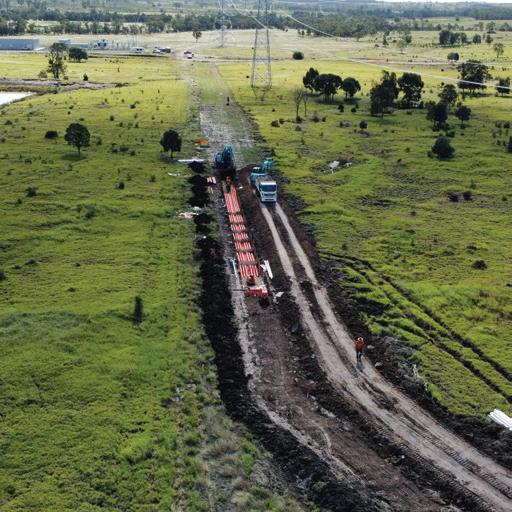
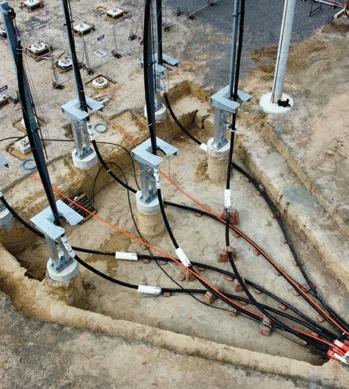
HELPING AUSTRALIA REACH ITS CLIMATE GOALS
The cooperative and benefit-driven approach between Powerlink’s project team and Daly’s has facilitated the successful delivery of the project so far.
The safety performance has been outstanding, with no recordable incidents during the construction phase. The team also successfully worked in an environment adjacent to some of Australia’s iconic and diverse fauna, including kangaroos, wedge tail eagles, echidnas and wild pigs.
Daly’s Projects Manager, Paul Taylor, said, “The success of the project delivery is due to the collaborative approach with Powerlink’s project team, local suppliers, effective planning and Daly’s highly committed and skilled workforce.”
Daly’s successful implementation on this project has allowed for modifications and enhancements to Powerlink’s transmission specification, and highlighted the position it has in the market when it comes to expertise in connecting renewable assets to the transmission grid.
The Wandoan South Solar Farm is now set to significantly contribute to Australia’s climate goals by producing clean energy with zero greenhouse gas emissions.
For more information, please contact Daly’s Constructions at cable@daly.net.au or visit www.daly.net.au
UTILITY • NOVEMBER 2022 WWW.UTILITYMAGAZINE.COM.AU 49
Sponsored editorial | RENEWABLES
THE LARGEST APPROVED GRID-FORMING BATTERY in Australia
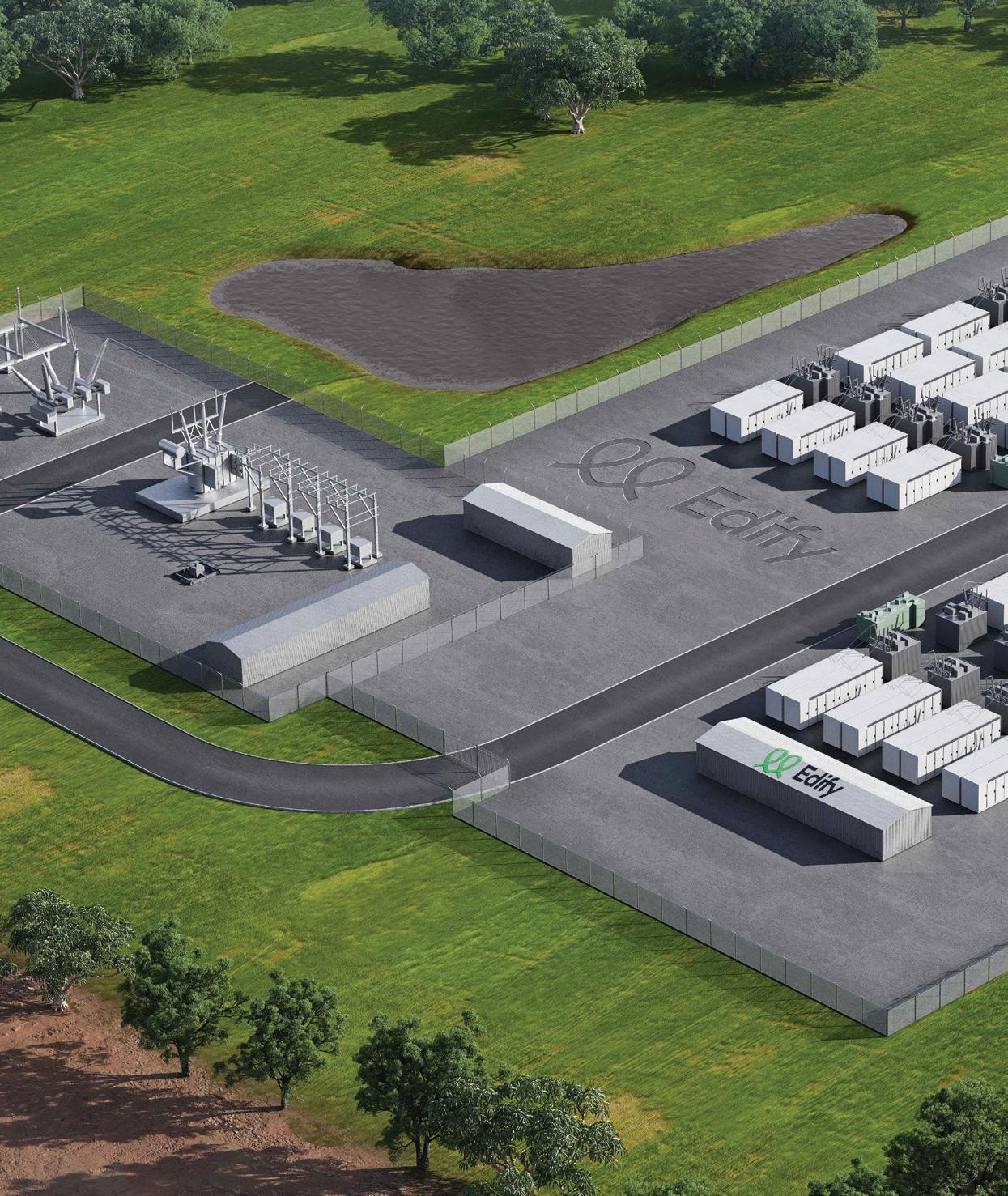 by Rebecca Todesco, Journalist, Utility Magazine
by Rebecca Todesco, Journalist, Utility Magazine
Australian renewable energy development and storage investment company, Edify, is building a new lithium-ion battery which is the first battery project in the market to be financed with commercial banks and will be the largest approved grid-forming battery in Australia once completed.
UTILITY • NOVEMBER 2022 WWW.UTILITYMAGAZINE.COM.AU 50
RENEWABLES
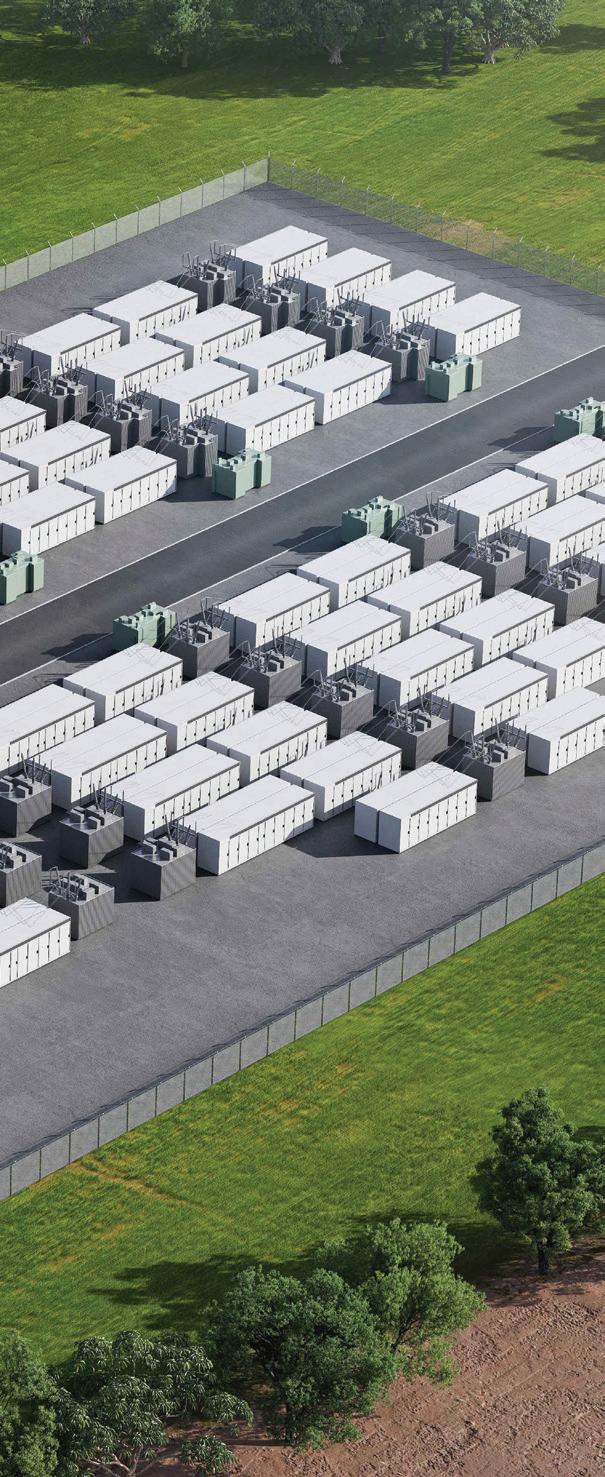
The battery project will add more flexible dispatchable capacity to the New South Wales energy market, boosting and complementing the significant presence of renewable generation already in the Riverina region.
Construction on the project kicked off in early June 2022, with Tesla Motors Australia under contract to deliver the facility to completion.
The battery project – known as The Riverina and Darlington Point Energy Storage Systems – is being built in the Murrumbidgee Shire, South West New South Wales, and will have a combined installed capacity of 150MW/300MWh.
The storage systems consist of three independent but co-located projects:
• 60MW/120MWh Riverina Energy Storage System
1 (RESS 1)
• 65MW/130MW Riverina Energy Storage System
2 (RESS 2)
• 25MW/50MWh Darlington Point Energy Storage System (DPESS)
Construction is underway and progressing well, with energisation and commercial operations anticipated in the first half of 2023, carried out in a staged manner for each of the three projects.
The project is experiencing similar challenges to companies world-wide – with current global supply chain issues – however, these issues have not resulted in project delays.
Edify Chief Executive, John Cole, said Edify is excited to be delivering another ‘first in market’ facility.
“We have long been believers of harnessing the full capability of power electronics and preparing for a 100 per cent renewables-based grid,” Mr Cole said.
“In this instance, we’re using the combination of the dispatchable properties of batteries with a new vintage of grid forming inverter control systems to create a generator that can provide power system support services, which have traditionally been provided by thermal synchronous generators.”
A PIONEERING BATTERY FINANCE DEAL
Edify announced the completion of project financing in June and scored a first-time battery asset transaction in the Australian market with Federation Asset Management as majority owner.
Along with Federation Asset Management, Edify Australia managed to acquire partnerships with EnergyAustralia, Shell Energy and a syndicated debt facility with Commonwealth Bank of Australia (CBA), Westpac and DNB.
This is the first battery project in Australian history to be financed with commercial banks – a move that paves the way for future battery project funding opportunities. These partnerships were enabled by the strong long-term offtake position that the projects had, with Edify negotiating said agreements with both Shell Energy and EnergyAustralia.
Mr Cole said Edify is looking forward to working with AEMO, TransGrid, Federation Australia, Shell Energy, EnergyAustralia, Tesla Motors Australia and all project stakeholders to bring the project into commercial operation.
UTILITY • NOVEMBER 2022 WWW.UTILITYMAGAZINE.COM.AU 51 RENEWABLES


● Manufacturing Pillars in Australia for over 40 years
● Quality Assured to ISO 9001:2015
● Pillars comply with AS/NZS 61439
● Manufactured from proven, durable materials for Australian conditions
● Residential and Commercial applications.
● Minimal installation area required for Pillars
● Supplied Australia Wide
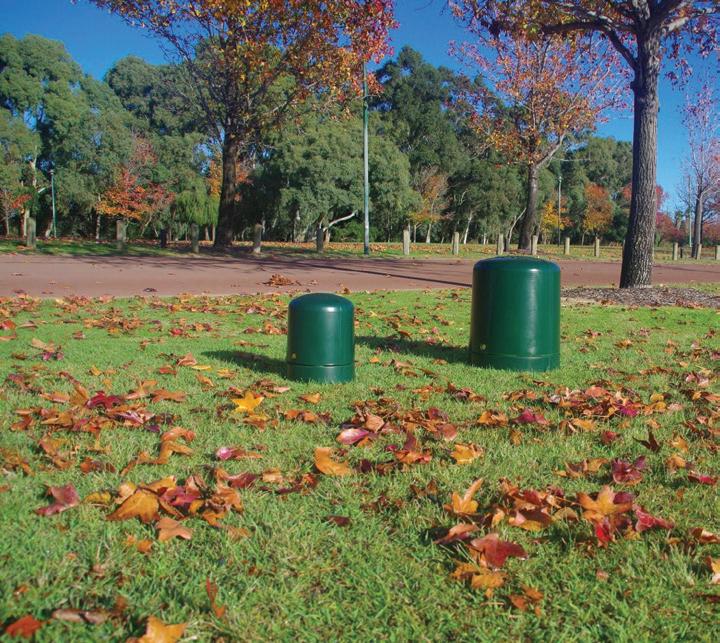
UTILITY • NOVEMBER 2022 WWW.UTILITYMAGAZINE.COM.AU 52 RENEWABLES URD ELECTRICAL PILLARS +61 8 9378 1077 sales@rimco.net.au www.rimco.net.au
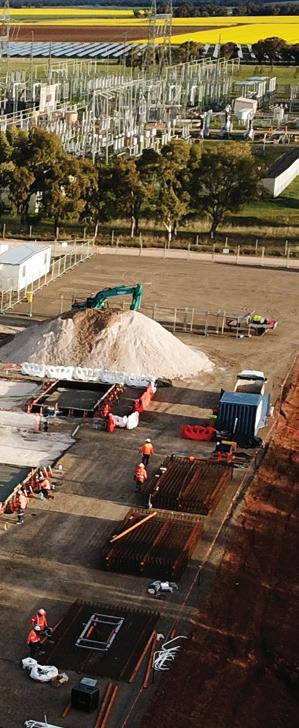
SPARKING WIDESPREAD DEPLOYMENT OF INNOVATIVE TECH
The new batteries will be equipped with innovative grid forming inverters, which enable batteries to provide the system stability services traditionally only provided by synchronous generation, such as coal or gas.
Progressing grid forming inverters through the network connection process, and then demonstrating their application in the network, should trigger more widespread adoption of this particular technology by other inverter suppliers and
This will in turn ensure a stronger network and greater confidence that existing thermal power stations can be retired without presenting technical stability issues.
The storage systems use Tesla Megapacks for energy storage and were designed and developed by Edify. Equipped with grid forming inverters that operate in ‘virtual synchronous generator’ mode, they will be the most advanced battery systems in the National Electricity Market (NEM), once completed.
The battery is the first system to navigate the network connection process as a grid forming inverter. This is a significant development and means that this innovative technology can and will be used throughout the NEM to
provide network support services – which will become increasingly important as the existing thermal power stations, like coal, retire and the proportion of renewables like solar and wind increases.
WORKING CLOSELY WITH STAKEHOLDERS
The construction of the battery is taking place on the traditional land of the proud Wiradjuri people – the largest Indigenous Australian Nation in New South Wales.
Edify acknowledges the Wiradjuri people – known as the “people of three rivers” – as the traditional custodians of this land and recognises their deep understanding of how to live in harmony with the environment.
Throughout the battery’s construction, Edify has continued to work closely with the Murrumbidgee Council and other local groups to fund ground roots projects that help foster healthy, diverse communities.
Edify’s voluntary funding contribution has been directed to the local sports field facilities which was recently opened by the Mayor of Murrimbidgee, Ruth McRae, with further improvements to the sports field and local parks expected.
The ability to rapidly increase the supply of renewable energy available to government, businesses and consumers is critical to achieving Australia’s carbon emission reduction targets, which is why this project is expected to have significant impacts for the NEM and Australia’s renewable energy future overall.
INSTRUMENTATION & CALIBRATION PTY LTD SPECIALISTS
AMS have been suppliers of instrumentation and calibration equipment to all industries since 1973 representing some of the world’s leading manufacturers of the equipment in their field.





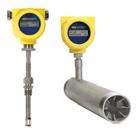

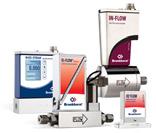
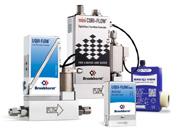

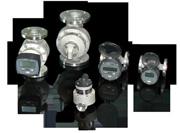



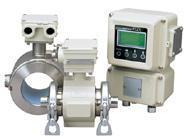

UTILITY • NOVEMBER 2022 WWW.UTILITYMAGAZINE.COM.AU 53 RENEWABLES
Measurement Specialists
www.ams-ic.com.au Flow
www.ams-ic.com.au sales@ams-ic.com.au
SHOWCASES Tweed's response to flood
by Anthony Burnham, Manager Water & Wastewater – Business & Assets, Tweed Shire Council
The Tweed’s flood recovery continues to gather momentum as the full extent of the record flood of February-March 2022 becomes clearer.
While the Tweed Shire typically records high rainfall totals each year, the amount that fell in in the Tweed earlier this year blitzed records. According to the Australian Bureau of Meteorology, the Tweed had four of the top 12 rainfall locations in Australia, from 26 February to 4 March 2022.
The village of Uki, near Clarrie Hall Dam, had the unfortunate honour of topping the list with 1,107mm recorded in the period. Kunghur on the Rous River was the fourth highest, with 943mm. Boat Harbour on the Rous was the ninth highest, with 860mm, and North Murwillumbah on the Tweed River was 12th, with 801mm.
Flood levels reached 6.5m at Murwillumbah, 200mm higher than the town’s previous flood record in 2017, and 4.8m at the riverside village of Tumbulgum, to the Shire’s north. The flood at Tumbulgum was 800mm higher than in 2017.
Tweed Shire Council estimates 4.5 times the volume of the Clarrie Dall Dam went over the spillway in just two days. That’s 67.5GL of water.
Following the flooding, the bank of the Tweed River retreated more than 30m in some places.

UTILITY • NOVEMBER 2022 WWW.UTILITYMAGAZINE.COM.AU 54
DISASTER MANAGEMENT
AFTER THE 2017 FLOOD, COUNCIL RAISED THE UKI PUMP STATION ELECTRICAL SWITCHBOARD TO ABOVE THE PREDICTED FLOOD LEVEL. YET, COUNCIL IS CONCERNED THAT FLOODWATERS IN 2022 CAME WITHIN MILLIMETRES OF THE RAISED CABINET
DISASTER MANAGEMENT
RESILIENCE
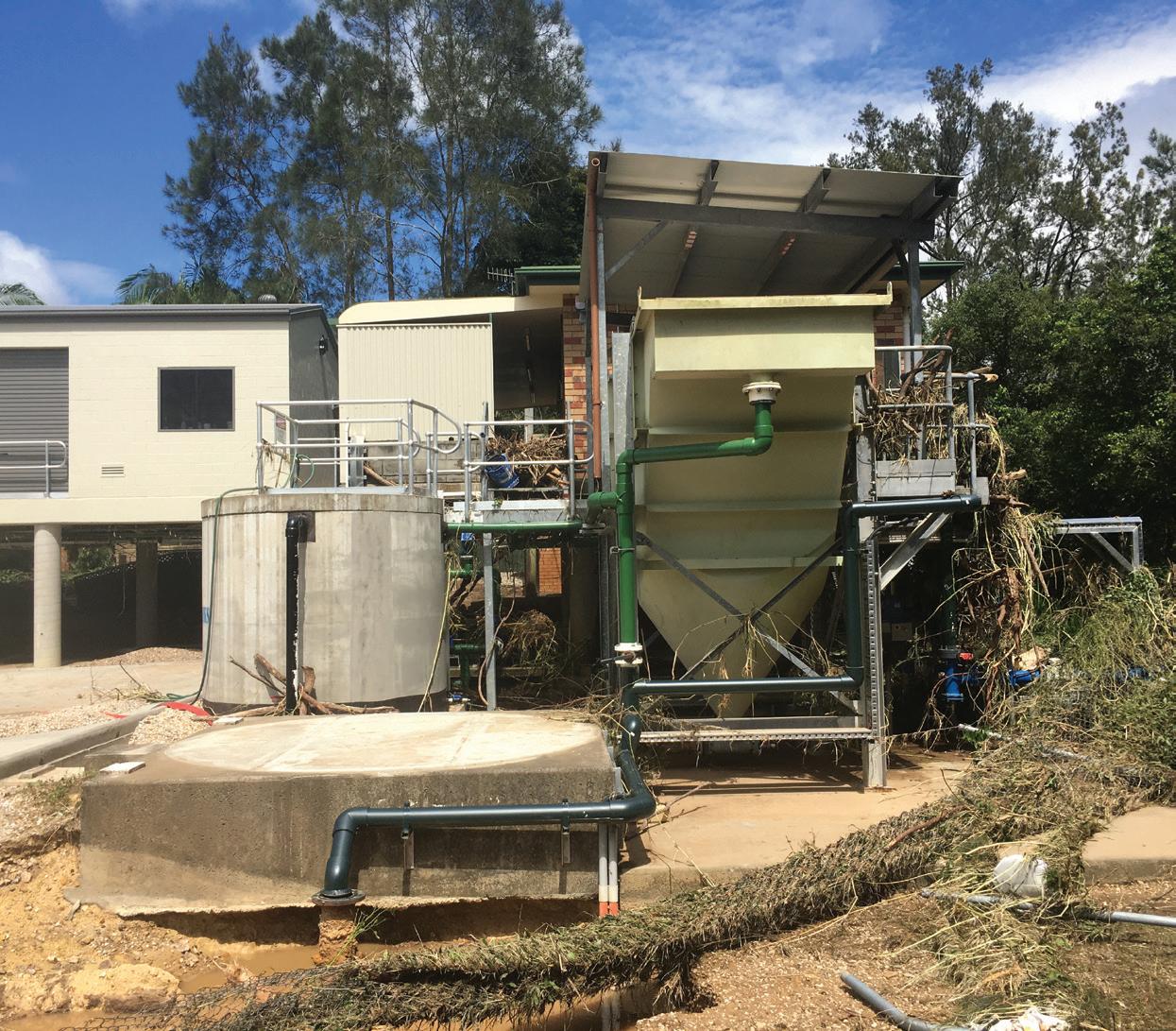
UTILITY • NOVEMBER 2022 WWW.UTILITYMAGAZINE.COM.AU 55
DEBRIS LEFT BEHIND SHOWS FLOODWATERS SUBMERGED THE UKI WATER TREATMENT PLANT. COUNCIL CREWS QUICKLY FIXED THE DAMAGE
SHOWCASES
DISASTER MANAGEMENT
HIGH COST OF FLOOD RECOVERY
As the local community marks six months since the devastating deluge, the cost of the recovery is becoming more apparent.
More than 2,100 homes were damaged, with 500 no longer habitable. An estimated 1,600 people required temporary accommodation. Almost 200 businesses reported damages worth $57 million. A total of 90 Tweed Shire Council buildings were inundated.
Council estimates the damage bill to be $100 million for Council infrastructure alone. This includes damage to Council roads, which is now estimated at $80 million – almost four times that of the 2017 flood – with ten significant landslips requiring extensive geotechnical analysis and repair.
WATER AND WASTEWATER RECOVERY
Damage to the Tweed’s water and wastewater network was minimised, thanks in part to some smart resilience works that had already been undertaken.
The initial repair works to 30 June, to make the Tweed’s water and wastewater systems operational following the 2022 flood, cost $642,000. Rectification works will continue for the next 18 months and are estimated to cost an additional $2 million.
The extreme weather of February–March 2022 washed soil and debris into creeks and rivers that flow into water treatment plants and caused power outages at the plants and a number of water pump stations.
In the immediate flood response, Council remained focused on continuing to provide safe drinking water, re-establishing the wastewater network, supporting the community with waste and clean-up options and safely restoring access to local roads.
Crews worked under incredible conditions day and night to repair damages. Their tireless efforts and dedication to the community, combined with existing flood resilience
measures and the tankering of water to one key site, ensured drinking water did not run out for the overwhelming majority of residents.
Council also acted fast to introduce temporary Level Four water restrictions, lengthening the water supply left in reservoirs and pipes until all treatment plants and pump stations were operating again.
This was a big ask of the community. As floodwaters receded, most residents wanted to use town water to hose down mud and other flood debris, yet Council asked them to limit their water use to drinking, food preparation and personal hygiene.
While it was difficult to gauge water use, it became clear that restrictions were not uniformly followed, with some areas running out of water in local water reservoirs. Supported with operational network changes, the supply of reticulated water was maintained for a vast majority of areas while the Level Four water restrictions were in place.
The water supply for the village of Uki was of particular concern. Floodwaters had quickly inundated the Uki Water Treatment Plant, causing a loss of pressure in the water supply network. This could have allowed contaminants into the supply system.
Because Council could not guarantee the water quality at Uki, a boil water notice was quickly issued for the village on the first day of the flood. As soon as road access was restored to the village, Council began tankering water, filling the Uki water reservoir with town water from the nearby Bray Park Weir – the source of most of the Tweed’s water supply.
Another area of concern was the heavily inundated South Murwillumbah area, where floodwaters washed out the water main, sewer rising main, main road, a bridge, culvert and footpath.
Immediately, Council issued a boil water notice and worked with the SES to get water supplies to isolated
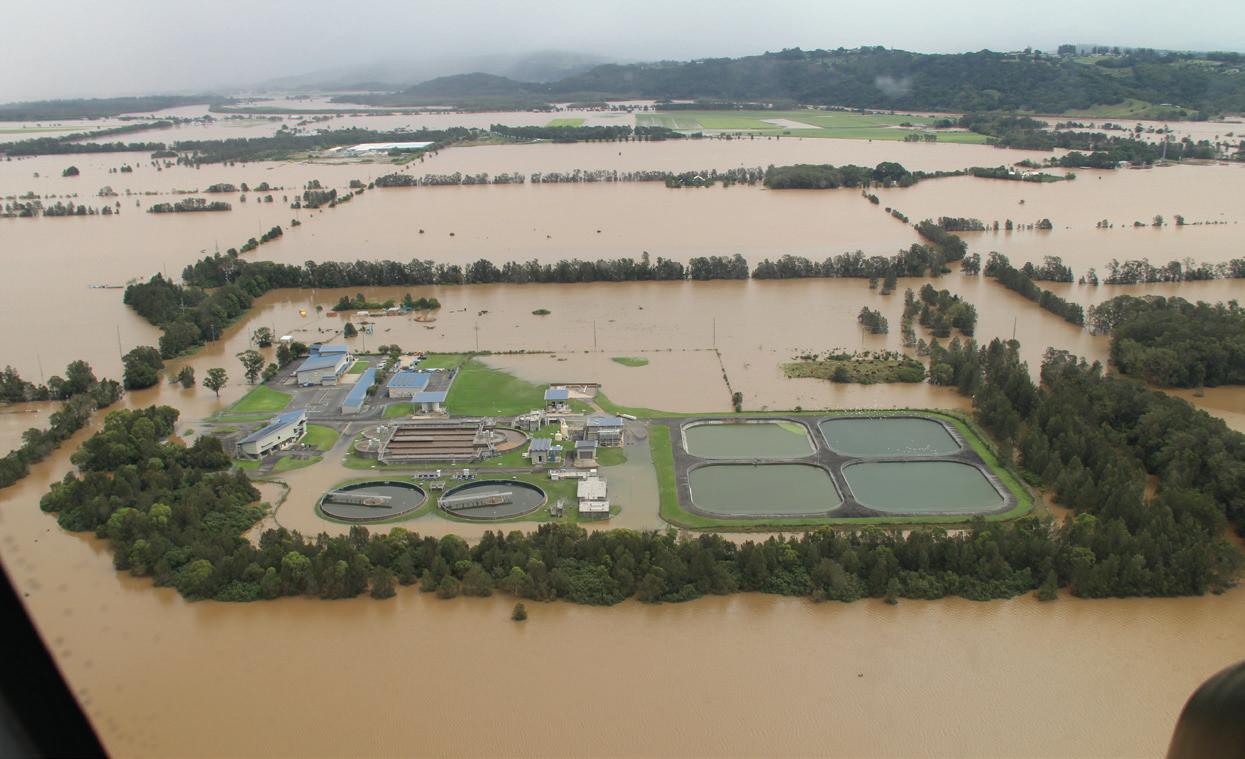
56
AN AERIAL PHOTO OF KINGSCLIFF WASTE WATER TREATMENT PLANT IN THE TWEED SHIRE, TAKEN IN THE DAYS AFTER THE 28 FEBRUARY DELUGE.
residents. As soon as floodwaters started receding, repair works began. Safe drinking water started flowing again to residents a few days later. Council is now working on a long-term water supply and sewerage solution to build the area’s flood resilience.
Council’s crews are proud of their response to the flood. By 3 March, they had restored the supply of safe drinking water to 99 per cent of Tweed residents who are connected to the water supply system. By 11 March, all boiled water advisory notices were lifted. The Tweed’s entire water supply network had been restored, with safe drinking water filling all local reservoirs, including Uki.
Getting the Uki Water Treatment Plant operating again was a small feat. The plant was inundated. As soon as floodwaters had receded, crews pulled out the plant’s four motors, dried them, washed out mud and other flood debris from inside the plant, undertook earthworks to stabilise the foundations and then repositioned the motors back into the plant. Their swift actions meant none of the motors were ruined.
By 11 March, crews had also restored wastewater services to all communities in the Tweed, including at Tumbulgum where a vacuum sewer system is in place. Temporary bypass arrangements were put in place in some areas, including at Terranora, where landslips on private and public land impacted the pipes of Tweed’s sewer and water supply network. Work on a more permanent solution continues.
RESILIENCE MEASURES
While councils cannot control the weather, they can plan better to make sure they are ready for any future events given the anticipated impact of climate change.
Tweed Shire Council plans to build back better. A key way it is doing that is by moving essential water and wastewater infrastructure to locations above predicted flood levels.
Council has been undertaking flood resilience works for a number of years, after assessing the consequences of another major flood in 2017.
Today, all but one sewer pump station electrical switchboard in the Tweed are located above select predicted flood levels. This has required Council to raise a number of switchboards, such as the one pictured at Uki.
The accompanying photo shows the Uki pump station switchboard just after this year’s flood. It is clear the electrics remained high and dry despite the flood level.
Moving the switchboards above the flood level means that once water levels recede and power is restored, Council crews can turn the stations on again without major issues and rebuild works.
By raising the switchboards, Council has realised an 84 per cent reduction in its total workload to rebuild switchboards following the 2022 floods, compared to the total workload following the 2017 floods. This is despite the 2022 flood levels being higher.
While the height of the structure at Uki might seem quite ridiculous on a dry sunny day, it saved the day in the recent flood.
Tweed Shire Council thanks the New South Wales and Australian Governments for their support to date and will continue to advocate strongly on behalf of the Tweed community to continue to rebuild in a smarter, more floodresilient way.
A number of projects have been submitted for New South Wales Government funding to determine their feasibility and cost benefits, including:
• Further protection of key water supply pump stations from inundation, and the provision of backup electrical generators on high level platforms to these sites
• Further protection of electrical items at three wastewater treatment plant sites

• Horizontal directional drilling of water and sewer mains under some significant stormwater drainage channels
• Rectification of two large land slips where water and sewer mains were lost and need to be reinstated
• Improving resilience of SCADA and associated communication networks.
For more information, please visit www.tweed.nsw.gov.au/property-rates/water-wastewater.
57 DISASTER MANAGEMENT
HOW SAFETY IS BECOMING ONE OF THE MOST CRITICAL SMART CITY APPLICATIONS
by Dan Evans, Head of Smart Cities and IoT, Itron
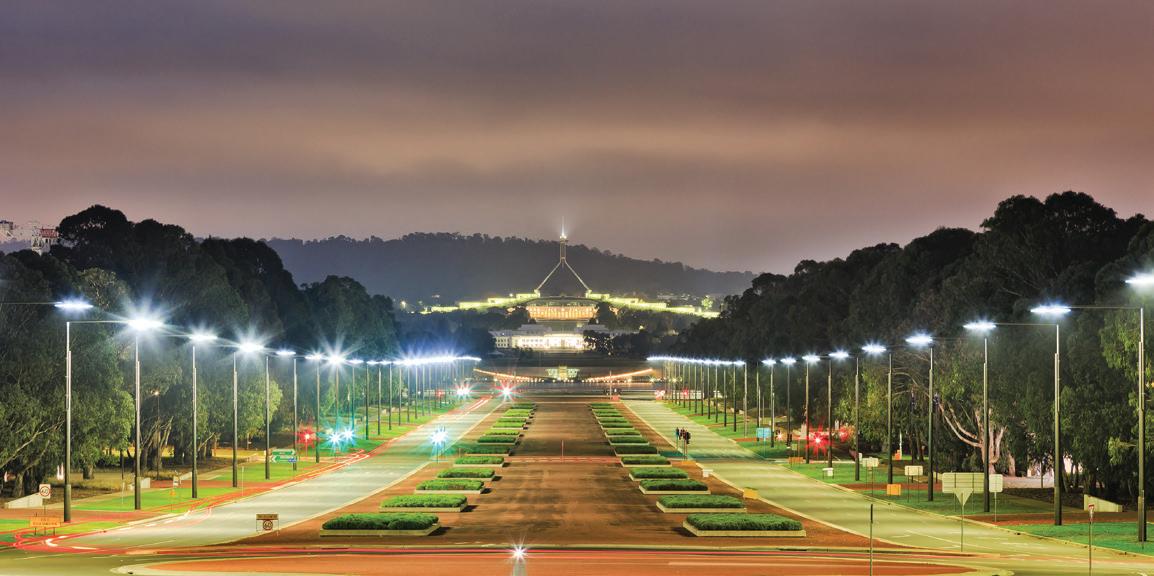
To help identify and act on current and potential future public safety threats, smart city technology is a critical resource for leaders of city councils.
Modern safety applications, powered by Industrial IoT (IIoT) infrastructure, utilise correlated sensor data from devices like flood monitoring sensors, pole tilt sensors, traffic monitoring sensors and air quality devices to identify trends and predict imminent danger, enabling cities to respond more effectively to ensure community safety.
As cities transition out of COVID-19 crisis mode, we will see renewed interest in smart city programs for public safety. The following is an outline of a few different applications that will help the leaders of city councils drive public safety initiatives.
OUTSMARTING NATURAL DISASTERS WITH IIOT
For cities, it can be challenging to ensure citizen and worker safety when natural disasters occur. Incidents such as cyclones, floods and bushfires are unpredictable and often hard to prevent.
To put it in perspective, most people in recent history have lived through some disaster, with 87 per cent of consumers saying they’ve been impacted by one in the last five years
(not counting the COVID pandemic). Safety will only become more critical over the next few decades as natural disasters are becoming more frequent, intense, and costly.
Since 1970, the number of disasters worldwide has more than quadrupled to around 400 a year. Since 1998, natural disasters worldwide have killed more than 1.3 million people and left another 4.4 billion injured, homeless, displaced, or in need of emergency assistance.
Smart sensors and advanced analytics can help communities better predict, prepare, and respond to these emergency situations. For example, IIoT sensors, such as pole tilt, ambient noise, flood monitoring and air quality sensors, can be leveraged to mitigate risk and minimise damage.
Using sensors in tandem with predictive analytics, city governments can detect issues and drive outcomes during and after natural disasters, such as detecting floods and diverting traffic; detecting if a pole is down to prevent safety risks and promote quicker recovery efforts; pushing out alerts to communicate quickly with citizens, providing the most up-to-date
information to ensure their safety; and utilising intelligent evacuation planning to best direct traffic and get people out of harm’s way quickly.
For example, when bushfires threaten regional air quality, communities can use smart sensors to predict which areas will be most impacted and take immediate action to alert nearby populations.
TECHNOLOGY TO HELP PREPARE FOR FUTURE HAZARDS
A smart city integrates technology to improve the social, environmental, and economic potential of its services to the community. Becoming a smart city is an evolutionary process that involves an ongoing commitment to innovation from the city and the community with a long-term view.
Besides the global impact of COVID-19 on day-to-day operations, cities in Australia had experienced the worst floods to date. As cities and utilities look to improve their services and their citizens’ safety during these unprecedented times, smart city technology will become more important to better prepare for and react to the next safety hazard.
UTILITY • NOVEMBER 2022 WWW.UTILITYMAGAZINE.COM.AU 58
DISASTER MANAGEMENT | Sponsored editorial
About the Author
better
for the
they serve.
Dan Evans is Head of Smart Cities and IoT at Itron. Itron enables utilities and cities to safely, securely and reliably deliver critical infrastructure services to communities in more than 100 countries. Its proven portfolio of smart networks, software, services, meters and sensors helps our customers
manage energy and water
people

The power of artificial intelligence. Now in a streetlight.
By leveraging smart streetlighting and a network canopy that connects to other applications, cities can become more sustainable, economically viable, increase safety and enhance the quality of life for residents. Now that’s a brilliant idea. And the first step in changing the future of our cities.
More intelligence. More possibilities.
© Copyright 2022 Itron. All rights reserved. Itron and the Itron logo are registered trademarks of Itron, Inc.
itron.com/possibilities
SA WATER TEAM INNOVATION wears safety
An innovative safety initiative is breaking new ground in the Australian water industry, with 15 of SA Water’s field-based staff donning a range of smart wearable devices to explore how new technology can lead to greater health and wellbeing outcomes.

UTILITY • NOVEMBER 2022 WWW.UTILITYMAGAZINE.COM.AU 60
SAFETY
FROM L - R: GLENN BRETTEN, CONNOR PETERSON, MATT OLIVER, MARK BROOKS, AND SHANE WHELAN
Researchers from the University of South Australia have teamed up with SA Water to pilot the new study, which will see them analyse physiological data captured in the field, as well as identify opportunities for early detection and intervention of potential safety issues.
Wristband sensors and smart shirts are among the devices being tested by staff from SA Water’s Kadina Depot on the Yorke Peninsula, along with Trade Waste and water sampling teams.
SA Water’s General Manager of People and Safety, Kylie Johnson, said the results of the trial will help determine whether the safety initiative could have broader applications across its state-wide workforce.
“With a vast water network, our people are often performing
challenging physical tasks in a range of weather conditions, and our trial will explore how technology can improve their health and wellbeing,” Ms Johnson said.
“Working together with the University of South Australia, our people will undertake specific work activities, such as driving prolonged distances and pipe maintenance, to explore how their bodies respond, measure their vital signs and monitor the effect of heat, fatigue and sleep.”
The wearable devices provide the opportunity to capture mental and physical wellbeing insights SA Water hasn't been previously able to.
“For example, the wristband sensors our Kadina team are wearing can quantify sleep deprivation and the
resulting effect on alertness, focus and mental health,” Ms Johnson said.
Biometric smart shirts with sensors embedded in the textiles monitor the cardiac and respiratory system to capture greater knowledge about physical strain.
These collective insights can lead to improved situational awareness and allow certain work activities to be altered, postponed or optimised, creating better safety outcomes for staff.
“The idea to trial these devices was conceived by our own people, who are adopting an innovative mindset to explore how we can go beyond our current safety measures and pioneer the use of emerging technology,” Ms Johnson said.
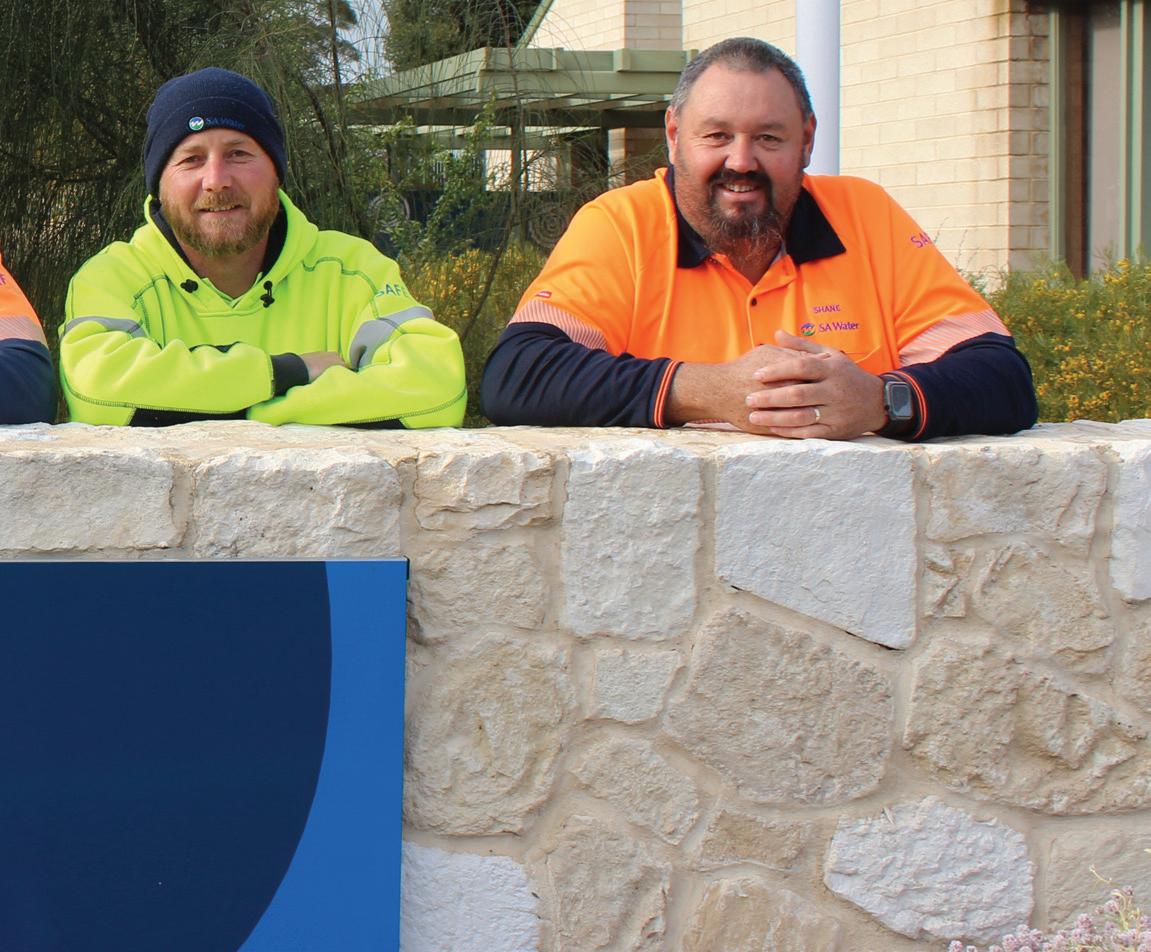
UTILITY • NOVEMBER 2022 WWW.UTILITYMAGAZINE.COM.AU 61
SAFETY
SAFETY
The data and learnings captured by the University of South Australia will be used by SA Water to assess the feasibility of adopting each device and help to understand which teams could gain value from their use on an ongoing basis.
SETTING A NEW SAFETY PRECEDENT
The project’s lead, UniSA Research Professor Jill Dorrian, an expert in occupational safety, fatigue and sleep, said findings from the study could set a new precedent for proactive safety practices.
“Our research continues to find that issues such as fatigue and sleep are prevalent across industries and can often increase the risk of workplace incidents. This new study could open the door for the use of innovative technologies that support an even more proactive approach to safety and wellbeing,” Ms Dorrian said.
“Literature from researchers overseas demonstrates that the use of wearable devices can increase employee satisfaction, while providing early detection and intervention for improved decision-making around how physical tasks are performed or managing individual workload to avoid burnout.
“We’re delighted to partner on this project with SA Water, who have shown a genuine emphasis on safety and improving their people’s wellbeing.”
Ms Johnson said while there have been early explorations overseas into how wearable devices could deliver useful health and safety data, there’s still work to do in translating data into practical outcomes for water professionals in Australia.
“We want to take this area of research to the next level and turn it into practical guidance around how work practices could be enhanced across our business, and the wider water industry,” Ms Johnson said.
“There is also a need to explore the data within our own local context. Our climate and geography is diverse, as is the range of tasks our people complete, so the trial will be collecting data from staff engaged in a broad range of in-field tasks within different environmental contexts.
“We now have a team of people across three different business units, including field operations and pipeline maintenance, water sampling and trade waste, who are helping us test this wearable technology.
“They will all be testing different scenarios and work activities in a range of climates and geographical areas across South Australia.
“Knowing how people's bodies react at certain times of the day, in certain temperatures and while performing specific activities, can help us schedule our work based on those insights to achieve peak outcomes, while keeping everyone safe.”

As part of maintaining and enhancing Australia’s second largest water network, SA Water's staff collectively travel, on average, around one million kilometres by vehicle each month.
Ms Johnson said that while the water industry emphasises designing out, reducing or controlling hazards as much as possible, it’s important to pursue more sophisticated and beneficial work safety outcomes for staff.
“We need to continually stay on top of the ways we can improve, learn more, reduce and help manage identified risks, and the promising outcome from capturing this data is the potential for early intervention on an individual level,” Ms Johnson said.
“Gaining insights into the physiological reactions our staff have within different circumstances may help our ability to detect people at risk of danger due to fatigue, and intervene to prevent any harm from occurring in the first place.”

UTILITY • NOVEMBER 2022 WWW.UTILITYMAGAZINE.COM.AU 62
FROM L - R: CONNOR PETERSON, SHANE WHELAN, MATT OLIVER, GLENN BRETTEN, AND MARK BROOKS
CONNOR PETERSON
SAVINGS THROUGH SAFETY


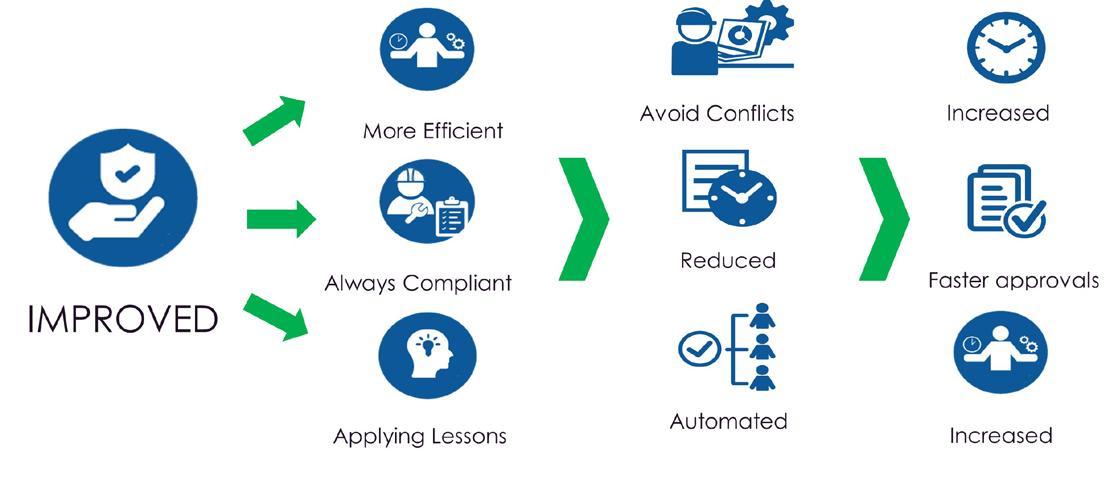
Yokogawa RAP A Fresh Intuitive Gateway to a Safer Workforce Culture
AU.enquiries@yokogawa.com Website: www.yokogawa.com/au Phone: +1300 558 965
Email:
DECREASED fatality rate by 50% since 2007 FATALITY 194 workers fatally injured at work 120,355 total serious claims in Australia $13,500 median paid per claim 41% (80 WORKERS) vehicle collision 13% (25 WORKERS) hit by moving objects 11% (22 WORKERS) falling from height 3 OUT OF 4 fatalities involved a vehicle
Source: Safe Work Australia, Worker Fatalities in 2020
MAXIMISE SAFETY WITH INTEGRATED MOTORISED RACKING DEVICES
Arc faults can cause significant damage to switchgear, conductors, switchboards and installations. However, the worst consequence can be the injury or death of operators in the area.
According to the hierarchy of control, isolation involves personnel being separated from the energised electrical equipment and conductors. It is most effective for personnel who do not have to operate or perform work on the electrical equipment.
The most likely time for an incident to occur in a switchroom is during electrical and mechanical operations, such as switching, isolation and racking of circuit breakers.
The time spent in a potentially dangerous area can be minimised by utilising common accessories for switchgear which facilitate remote operation, such as motor operators and open/close coils. There are also methods available to complete the racking of circuit breakers remotely. These allow the operator to be away from the switchroom when switching and racking operations are occurring.
NHP's TemRack iR is a fully integrated automated motorised racking device, which enables remote racking of the Terasaki TemPower 2 AR Air Circuit Breaker (ACB) body in and out of its associated carriage. The automated racking function permits safe isolation of the ACB with zero physical interaction between personnel and the ACB, thereby reducing the risk of exposure to explosive arc fault events and high incident energy.

The TemRack iR’s mechanical interlocks and safety functions integrate seamlessly with the ACB and the ACB’s functionality remains unaffected. Similarly, the customer’s electrical protection methodology/system onsite remains unaffected.
The TemRack iR features integrated digital I/O for control and feedback, allowing the operator to remotely rack the ACBs in or out while the operator is located outside the switch room. Remote control can be performed via a local control station or other remote methods utilising the integrated I/O on the customer’s automation system. Where ACBs are fitted with open/closed coils, the remote operation of the ACB can also be performed as a further risk mitigation strategy.
The TemRack iR device can be fitted as part of a new ACB build or retrofitted to an existing Terasaki AR2 ACB by NHP’s Service and Solutions Team.
TemRack iR integrated motorised racking devices will help you to significantly improve personnel safety at your plant by separating personnel from the energised electrical equipment and conductors. Minimise your risks and maximise your safety on site with NHP.
UTILITY • NOVEMBER 2022 WWW.UTILITYMAGAZINE.COM.AU 64
SAFETY | Sponsored editorial
For further information, please call 1300 NHP NHP or email nhpservice@nhp.com.au.
Charge smarter with NHP’s range of Delta Electric Vehicle charging solutions!
NHP’s range of Delta EV chargers provides solutions to suit most applications

■ Easy installation
■ Fast and efficient performance
■ Smart connectivity for billing
■ Accessories available including charger posts, charging cables and upstreaming hardware
■ Two-year warranty with extension possible for up to ten years
■ NHP service and maintenance packages available

– Fast charging, ideal for government, commercial and public infrastructure
Delta DC City Charger 100kW and 200kW –Ultra-fast charging for the quickest turn-around, ideal for petrol stations and other transport industries.
| nhpnz.co.nz
647 647 | 0800 647 647
sales@nhp-nz.com
nhp.com.au
1300
nhpsales@nhp.com.au |
Delta AC Max 22kW – Casual charging, ideal for extended stops of a few hours such as apartments, carparks, retail and home
Delta DC Wallbox 50kW
Delta DC Wallbox 25kW –Medium charging, ideal for council, retail and business
more
Speak to NHP’s experienced EV team to find the ideal solution for your business or project. Find out
at nhp.com.au/EV
BUILDING ESSENTIAL SKILLS for modern grid transformation
by Endeavour Energy
In a world where we are ‘electrifying everything’ and enabling new technology, services, markets and products, new skills will be required to develop, operate, and maintain electrically significant infrastructure, both within traditional roles in the electricity supply industry as well as in electrical contractors working alongside the industry and on other major infrastructure projects.

The changes currently reshaping the national electricity supply industry are unprecedented, reflecting a fundamental shift in how electricity is produced, distributed, and consumed in Australia. As the race to create zero carbon economies heats up, other countries throughout the world are also experiencing similar changes to secure, not only a safe climate, but prosperity in the 21st century’s global economy.
The Australian Energy Market Operator’s 2022 Electricity Statement of Opportunities signals the urgent need to progress 3.4GW of new generation, storage, and transmission developments to maintain a secure, reliable, and affordable supply in the National Electricity Market when large thermal generators exit later this decade.
Add to this the New South Wales Government’s significant pipeline of new energy infrastructure in the New South Wales Renewable Energy Zones (REZs) as well as transmission lines, rail networks and the growing pipeline of infrastructure required for the Western Sydney Aerotropolis.
Meeting a shifting workforce profile and its training and skills requirements will play a key role in the transformation of the existing power system, while continuing to deliver a reliable and secure system that ensures the safety of its employees as well as the public.
But who is up to the challenge of educating and upskilling the workers needed in the energy and infrastructure sectors to build the new energy system and keep up with rapidly evolving technologies?
PROVEN TRAINING FOR SAFETY, SKILLS AND COMPLIANCE IN THE TWENTY FIRST CENTURY
As an operating distribution network with more than 130 years of powering communities and businesses in New South Wales, Endeavour Energy has a strong reputation for training professionals in working safely around utility assets; with training focused on four guiding principles: skilling of workforce, safety of all personnel, safety of equipment; and continuity of supply.
More than 2,200 workers complete training each year at the company’s state-of-the-art training facility at Hoxton Park, which is purpose built to enable development of practical powerline, substation, and cable jointing skills in controlled environments.
UTILITY • NOVEMBER 2022 WWW.UTILITYMAGAZINE.COM.AU 66 SAFETY
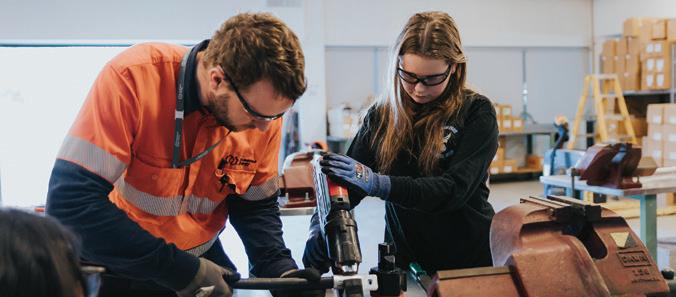
Now, in a new initiative, Endeavour Energy is partnering with leading RTO Thomson Bridge to enable ready access to essential training for safety, skills, and compliance to workforces across the energy and infrastructure sectors in New South Wales.
This collaboration now means workers and contractors involved in developing, operating, and maintaining electrically significant infrastructure can access short courses and training at Hoxton Park to gain the qualifications essential for their work.
Seeing the opportunity to contribute to the development of a skilled workforce ready for the future by providing access to this purpose-built facility, Endeavour Energy wanted to enable quality training experiences for new entrants as well as experienced workers transitioning career paths. This training is provided by the people who have constructed, maintained, and operated an electricity network for more than 130 years.
Underlying all this is a commitment to the safety of both workers and customers, which remains a nonnegotiable expectation in all aspects of its training and operations.
Under this initiative, contractors who are developing, operating, and maintaining electrically significant infrastructure will have access to short courses and qualifications essential for their work.
ADDRESSING INDUSTRY SKILLS SHORTAGES
Andrew Pitman, General Manager Business Services at Endeavour
Energy, said the partnership seeks to address anticipated workforce skills shortages and aims to deliver a highly skilled and adaptable workforce ready for the future to maintain a safe, resilient, and affordable electricity supply essential for modern lifestyles and business success.
“Endeavour Energy is thrilled to partner with Thomson Bridge to lead the way in training the workforce of the future,” Mr Pitman said.
“As the electricity network that builds, maintains, and supplies power to over 2.6 million people living and working in some of the fastest growing regions of New South Wales, we are committed to supporting the future workforce required to deliver a renewable and more sustainable energy future.
“Critical to the success of these transformational projects is teaching workers and contractors to safely build, operate and maintain electrically significant infrastructure.
“We see this as an opportunity to contribute to the development of a skilled workforce for New South Wales by providing access to this purpose-built training facility for the development of practical powerline, substation and cable jointing skills for the workforce of the future.”
Thomson Bridge’s Managing Director, Lisa Parkinson, said the training will cater for new contractors entering the industry as well as experienced workers transitioning their career paths.
“Our collaboration with Endeavour Energy will create best in breed skills and thinking and will be agile and
responsive to industry needs with programs introduced based on the demand for new and essential skills,” Ms Parkinson said.
“The first courses available will include high voltage operations, cable jointing and basic safety training for wind farm access. We also see a need to offer full qualification pathways for new and experienced workers in overhead powerline qualifications for electricity and rail networks.”
“There is also a growing demand from project managers and engineers for practical supervisory level technical training such as best practice in cable jointing and installation, and for engineering services that support safe high voltage operations such as arc flash calculations and drafting or reviewing electrical safety rules.”
UPSKILLING CRITICAL TO DELIVER TWENTY FIRST CENTURY CUSTOMER SERVICES AND INFRASTRUCTURE
Key sectors to benefit from this initiative include distribution and transmission networks, renewable energy assets, light and heavy rail networks, together with heavy industry and utilities that operate high voltage plants to perform their business, such as airports, data centres, and water utilities.
In a world where we are ‘electrifying everything’, customers are depending on us to support their daily life – for commuting, working remotely, for education and entertainment – with a modern grid that can support the sustainability aspirations of every customer from large scale commercial solar farms to resident battery storage and an electric vehicle charging network.
Given the long lead times and highly skilled nature of the electricity workforce, combined with the importance of a reliable power supply to the national economy, understanding these skill needs is of even higher significance for the electricity industry, its customers, and stakeholders. To
UTILITY • NOVEMBER 2022 WWW.UTILITYMAGAZINE.COM.AU 67 SAFETY
find out more about Endeavour Energy and Thomson Bridge’s training programs,
visit www.thomsonbridge.com/training-courses/courses-at-hoxton-park.
please
HELPING WATER COMPANIES PREVENT WASTEWATER SPILLS
A growing population, industrial demands on the water network, and a changing regulatory landscape mean utilities are under increasing pressure to control spillages and unplanned escapes to prevent pollution.
Climate change is one of the greatest challenges we face today and we all have a responsibility to help protect our world and our water supply for the future.
An industry-wide goal, supported by technological innovation, is therefore to reduce spillages to zero. For utilities, this environmental driver has created the goal of achieving net-zero carbon emissions by 2030.
Metasphere developed ART Sewer to help utilities achieve these net zero ambitions. ART Sewer's objective is to help wastewater utilities prevent wastewater spills, thereby reducing pollution and keeping the natural environment clean and protected.

ART Sewer achieves this by enabling utilities to proactively manage flow in sewers, pumping stations, manholes and Combined Sewer Overflows (CSOs), detect dry weather and partial sewer blockages, as well as monitor and prevent flooding events.
Since the launch of ART Sewer in January 2021, this revolutionary Wastewater Level Monitoring solution has already been selected by a number of utilities as part of their strategic wastewater network management initiatives. It helps deliver an all-in-one, cost-effective approach for improved network visibility, performance and forecasting, with the aim to deliver zero wastewater spills/escapes across a network.
ACKNOWLEDGED BY THE WATER SECTOR
Metasphere's ART Sewer Wastewater Level Monitoring solution was recently announced as the winner of the Pollution Mitigation Initiative of the Year at the 2022 Water Industry Awards ceremony held in Birmingham, UK.
The Water Industry Awards recognises best practice from the frontline of the water sector and entries were open to all companies, including water utilities. The award categories placed a special focus on those companies driving innovative products and solutions and its applicability to the wider industry, as well as those products and solutions that showed creativity, efficiency, and outstanding customer service.
Metasphere is justifiably proud to have won this prestigious award that celebrates the incredible work and achievements by those in the water industry.
Tim O'Brien, CEO of Metasphere, said, “ART Sewer is already having a positive impact on the industry as it is realising a new proactive approach to monitoring wastewater levels in a network. The ability to predict and detect blockages means that spills are prevented altogether.
“This will ultimately have a hugely positive impact on reducing wastewater pollution from spills that find their way into freshwater and sea water and thus contaminate the natural environment.
“And by reducing pollution from wastewater spills, ART Sewer will help wastewater utilities meet their net zero targets, hopefully well in advance of 2030. We are incredibly proud to be part of the solution to reduce pollution caused by wastewater spills and to help create a cleaner, greener world for everyone.”
For more information, please email info@metasphere.net.au or call 02 9956 7407
UTILITY • NOVEMBER 2022 WWW.UTILITYMAGAZINE.COM.AU 68 SAFETY | Sponsored editorial
ART SEWER



WASTEWATER LEVEL MONITORING
Compact, low cost, battery-powered radar sensor and Telemetry all-in-one ATEX/IECEx (Zone 0), NB-IoT, Cat-M1
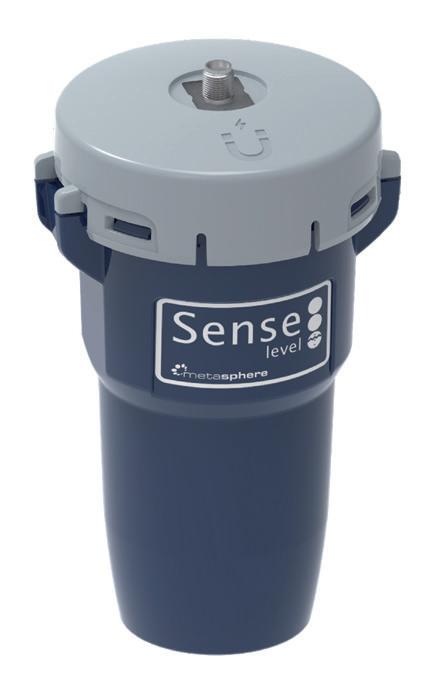
Part of an all-in-one solution that delivers
Full network visibility, performance and forecasting
Also perfect for


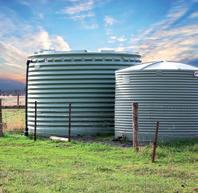

For more information contact info@metasphere.net.au +61 2 9956 7407
RIVER LEVEL STORMWATER LEVEL TANK LEVEL SILO LEVEL
GOULBURN-MURRAY’S PIPELINE FOR WATER EFFICIENCY
by Kate Kernaghan, Water Efficiency Project Communications and Media Manager, Goulburn-Murray Water Resto r ing
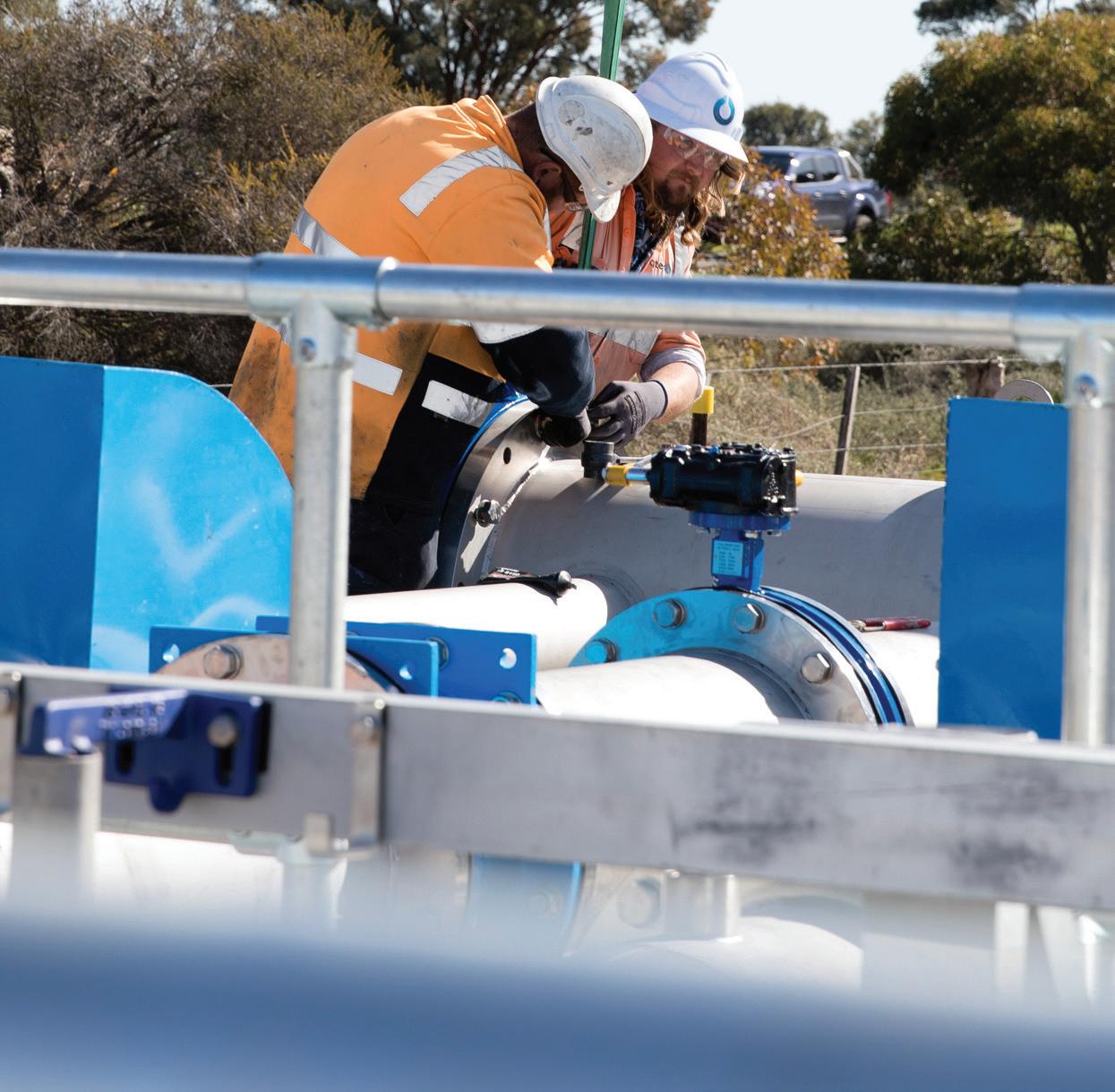
In March 2021, Goulburn-Murray Water (GMW) began delivering the Water Efficiency Project across the Goulburn-Murray Irrigation District. All construction works required as part of the $177.5 million project will be completed by the end of 2023 and are funded by the Federal Government to support the recovery of environmental water in the Murray-Darling Basin.
UTILITY • NOVEMBER 2022 WWW.UTILITYMAGAZINE.COM.AU 70
PIPELINE INTEGRITY & LEAK DETECTION
WATER EFFICIENCY PROJECT IN KERANG
GMW’s Water Efficiency Project will generate 15.9GL of annual water savings by reducing water lost through evaporation, seepage and leakage in GMW’s channel system, as well as through meter error and leaks at metered outlets. The project will modernise and rationalise channels, install pipelines, automate regulators, and upgrade metered outlets.
The project follows GMW’s successful completion of the $2 billion Connections Project - Australia’s largest water savings project - recovering 433GL of water for the project’s funders and irrigators.
This Water Efficiency Project builds on the Connections Project by delivering further modernisations to the GMW network, investment in the local economy and water savings for the environment. The Water Efficiency Project has been able to leverage foundations set by the Connections Project, including experienced project team resources, experienced and local suppliers and contractors, as well as implementing proven governance and procurement arrangements.
The water savings generated by the project help Victoria to meet its
obligations under the Murray-Darling Basin Plan without negatively impacting communities. However, the project is also benefiting irrigators and the entire region. By modernising ageing infrastructure and water supply outlets, around 1,000 irrigators will receive an improved service. The modernised system will also reduce maintenance costs for GMW, which in turn keeps costs down for its customers.
The Goulburn-Murray Irrigation District is the largest irrigation network in Australia and accounts for well over half of all irrigation water used in Victoria. A more reliable and efficient water supply has flow-on effects for the region’s economy and productivity; it is estimated that the project will boost the area’s GDP by $167.5 million. The project will also create around 1,000 local jobs.
WHAT DOES THE WATER EFFICIENCY PROJECT INVOLVE?
The project involves treating over 250km of channels and 1,000 outlets across the Goulburn-Murray Irrigation District. As part of this, around 50km of GMW-owned pipeline, combined gravity and pumped, will be installed to reconnect existing customers.
Replacing channels with pipeline provides a more efficient level of service and a more reliable water supply, as well as effectively eliminating water leakage and seepage.
In addition to these works, Dethridge wheels and manually operated regulators are being replaced with modernised infrastructure.
Installing electronic flow metres provides greater accuracy and ensures compliance with national standards while controlling the flow of water onto properties. Modernising manually operated regulators allows for better measurement and management of water flows, whilst ensuring the channels run at the correct levels.
All of these modernised regulators, and all of the irrigation metres, are linked to the Total Channel Control System, which is operated and monitored from GMW’s Tatura office. This system coordinates water flows and levels so that only the amount ordered by irrigators is supplied.
Before any construction works begin, project staff develop reconfiguration plans that show the existing assets on a channel or group of channels, and how GMW proposes to change them. These plans form the basis of
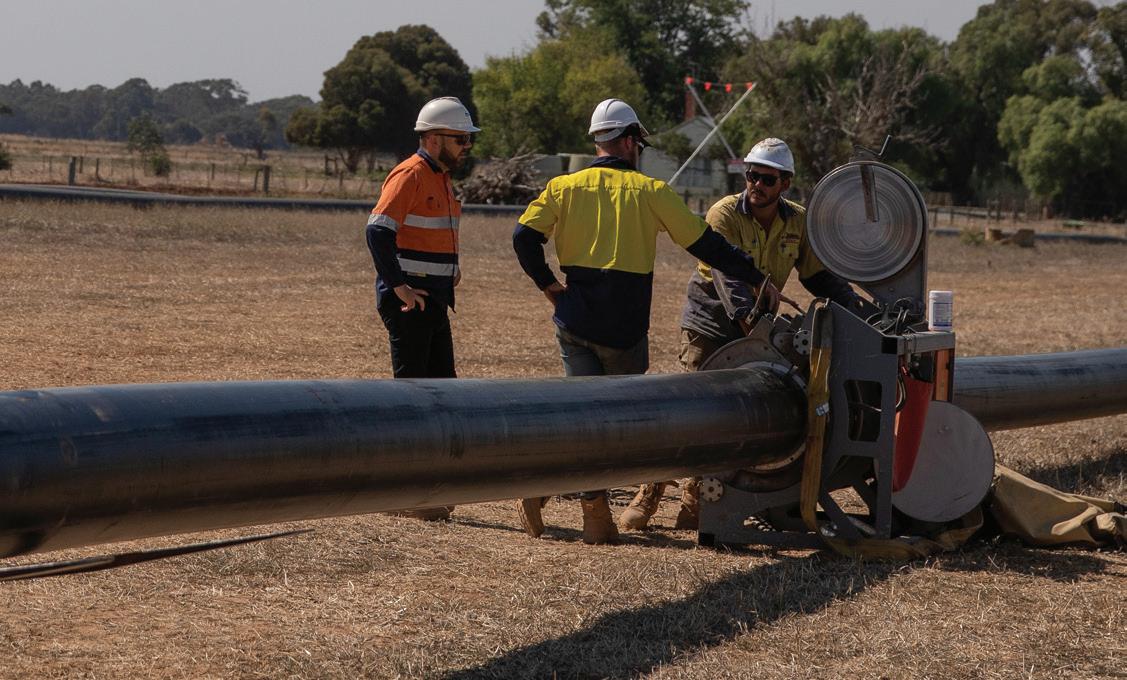
UTILITY • NOVEMBER 2022 WWW.UTILITYMAGAZINE.COM.AU 71
LEAK DETECTION
EFFICIENCY PROJECT NEAR MERRIGUM
PIPELINE INTEGRITY &
WATER
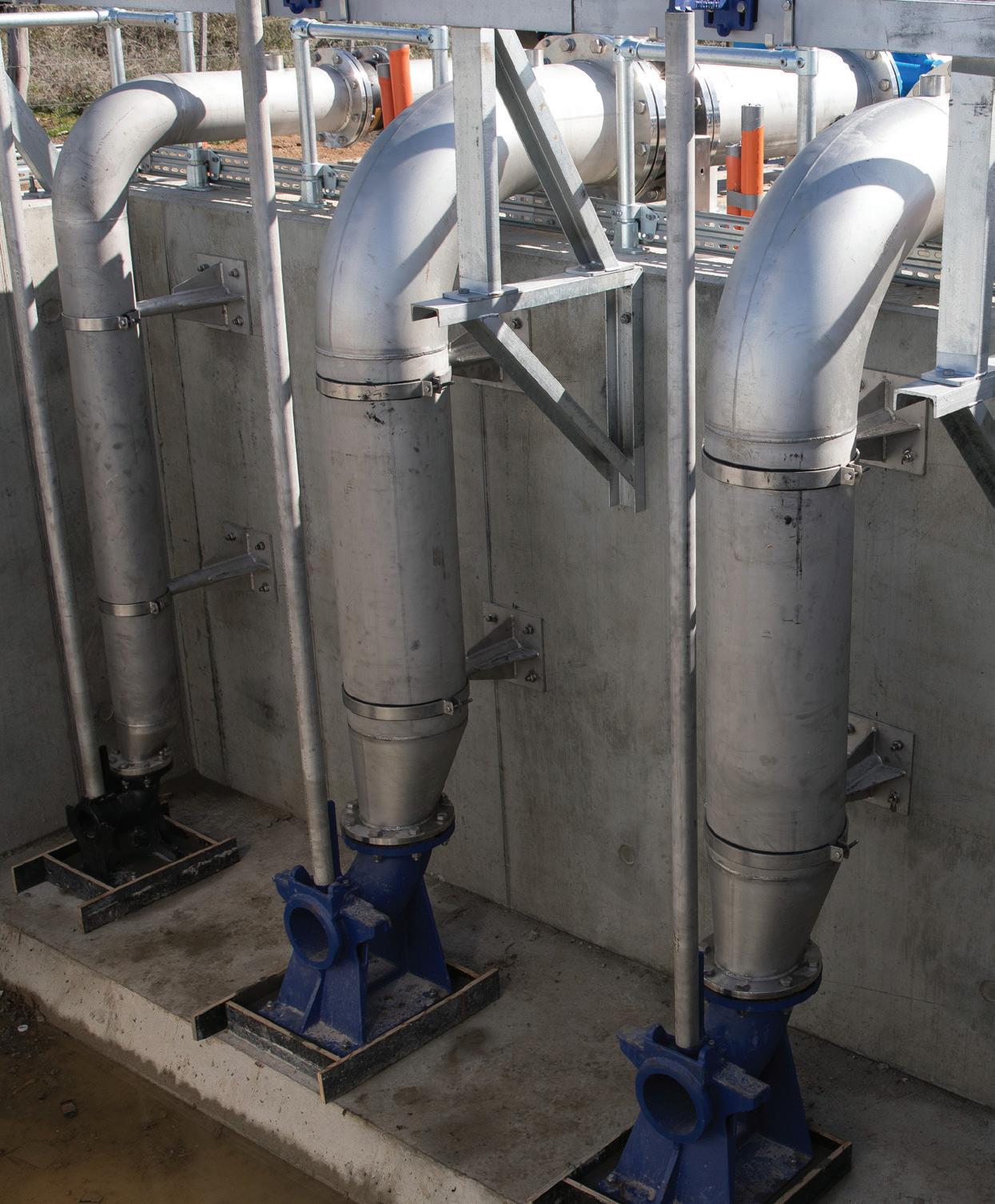
72 UTILITY • NOVEMBER 2022 WWW.UTILITYMAGAZINE.COM.AU PIPELINE INTEGRITY & LEAK DETECTION WATER EFFICIENCY PROJECT IN KERANG
consultation with landowners, whose input is used to refine the plans.
Landowner engagement is critical to the success of the Water Efficiency Project, as there is often a component of private on-farm works. The reconfiguration plans apply to the GMW water delivery system, but customers may need to be reconnected to this system via on-farm infrastructure or remodelling of farm channels, for example.
The project team engages with these customers early in the process, as they need to give formal agreement for works on their land.
Lessons learned during the delivery of the Connections Program have helped the Water Efficiency Project to develop a successful landowner engagement process that is focused on transparency, adaptability and supportiveness.
The project team also follows designated operational rules when making decisions during the project. These rules are a set of principles developed for and by
the Water Efficiency Project that addresses how the size of service points are determined, the level of service provided, operational and maintenance payments, voluntary dry-off, co-contributions and property consolidation. They are designed to ensure the project develops solutions that are cost effective, consistent and meet the needs of irrigators.
To minimise the project’s impact on customers, most of the construction works are scheduled during the regular winter irrigation shutdown period. However, the team has developed strategies for successfully completing works in-season without interrupting supply for affected customers.
WHAT WORKS HAVE BEEN COMPLETED SO FAR?
In August 2022, GMW announced that the Water Efficiency Project had reached its halfway milestone early, delivering an estimated 8GL of the targeted 15.9GL annual water savings.
The project has treated over 70km of channel, installed 24km of pipeline
and treated 400m of pipeline. These works have so far improved water delivery, reliability, and efficiency for 500 customers.
To date, significant packages of work have been completed in Shepparton, Lockington, Waaia, Murrabit, Kerang and surrounds with smaller works stretching from near Swan Hill to Cobram.
WHAT’S NEXT?
The project team is currently progressing with procurement and construction for works that will contribute to the remaining two project milestones in March and July 2023. These works include further pumped pipelines and two significant peri-urban pipelines in the vicinity of Echuca.
The project team will also continue to construct private reconnection works as agreed with affected landowners.
The project is making good progress with works on track for completion in 2023 and the audit, verification and issuing of all water savings to be completed in 2024.



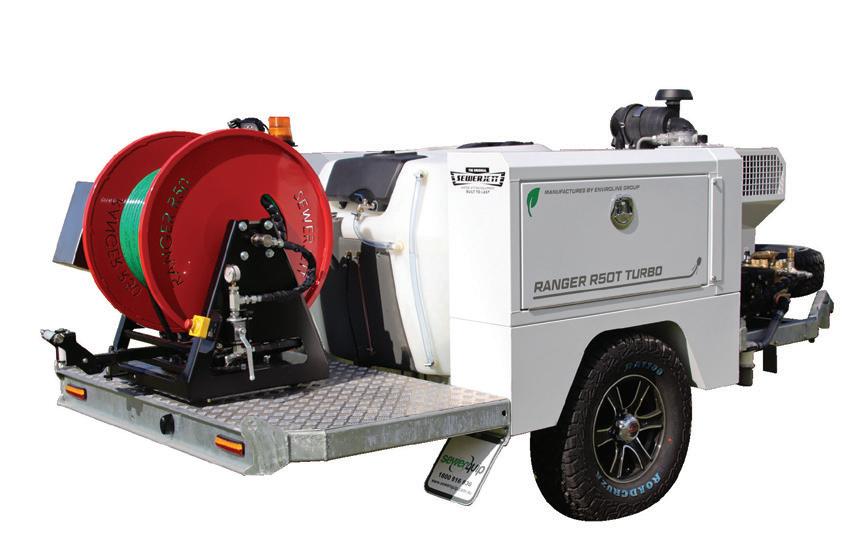

UTILITY • NOVEMBER 2022 WWW.UTILITYMAGAZINE.COM.AU 73
RANGER R50T-70 TURBO TRAILER JETTING SYSTEM COMPLETELY REMOTE CONTROLLED! FEATURES y Tier 4 Industrial Hatz water cooled diesel engine y Automatic throttle control y Burst protection y Low emissions y Noise reduction Call us on 1800 816 830 to find out more. enviroline.net.au PIPELINE INTEGRITY & LEAK DETECTION
HOLISTIC WATER MANAGEMENT: NAVIGATING THE INFRASTRUCTURE CLIFF
With so much of our water infrastructure due for renewal over the next decade, including asbestos cement pipes, success will come from deep insight into asset conditions and failure mechanisms.

Much has been made of the ‘infrastructure cliff’ identified in Infrastructure Australia’s Australian Infrastructure Audit 2019. The report highlighted that as we reach the end of our water assets’ expected service life, the cost of renewal – financial and otherwise –could overwhelm water authorities and their ability to meet customers’ expectations.
Since then, innovation and advancement has been occurring at pace in some parts of the sector. But it’s not always beneficial, and it often doesn’t solve the deeper problem.
Will Zillmann, National Product Manager at Interflow, said, “For example, a lot of newly marketed pipe-renewal technologies leave existing service connections in place, rather than replacing them. Those connections are typically the same age as the host pipe.”
But what about the root cause? How does a water authority get to a stage where it can feel confident about avoiding the infrastructure cliff by planning a proactive series of renewals?
Using asbestos cement pipes as a case study, Mr Zillmann said different failure mechanisms require different treatments.
“Asbestos cement (AC) pipes in general have an average service life of 40 to 70 years, and we’re coming into a period in which a lot of these assets are going to be starting to show significant signs of failure.”
There are many complications around the rehabilitation of AC pipes and pipe bursting AC water mains is no longer seen as an acceptable practice. As soon as you run a bursting

head through an AC pipe, it changes from being non-friable to friable, and becomes much more dangerous.
WHAT’S THE SOLUTION?
The solution is the same for any type of pipe – it’s about developing a clear picture of the conditions and types of all of your existing assets and appreciating that they all have some form of value.
“As an industry, we don’t always look at things holistically and we’re often driven by short term budgets rather than matching budgets to solve the greater issues,” Mr Zillmann said.
“If a pipeline has had failures, we replace it. We see it as an isolated pipeline and attack the problem on a reactive basis. We don’t see that we’ve got this asset class that was installed in the same period of time, in that area, so they’ll all be at risk of failure.”
A holistic approach to renewing a larger area reduces unit cost and improves the long-term customer experience. It also means water pressures can be dialled back up if they have been reduced in the past to protect the infrastructure or reduce leakage.
In the case of AC pipes, a variety of trenched and trenchless techniques can be used to renew an entire service area, depending on the specific site and asset conditions, and the needs of water authorities and their customers.
Thorough knowledge of the condition of the entire network allows good and effective decisions to be made around these processes. For
www.interflow.com.au.
74 UTILITY • NOVEMBER 2022 WWW.UTILITYMAGAZINE.COM.AU PIPELINE INTEGRITY & LEAK DETECTION | Sponsored editorial
more information on how
can help your business solve this challenge,
Interflow
please visit





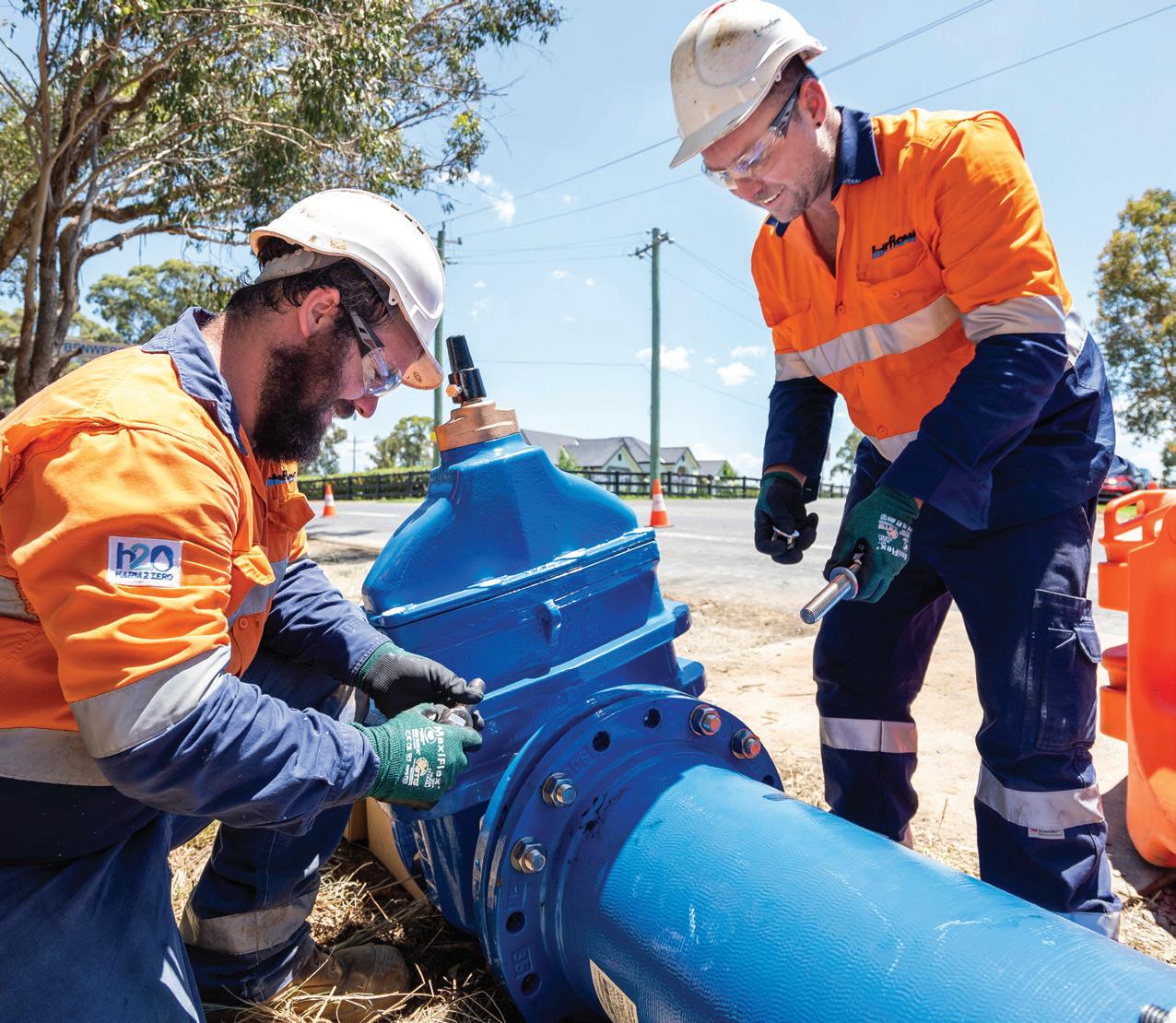







We’re helping Secure Life’s Essential
AN INNOVATION LEAP FOR NETWORK LEAK DETECTION
Water utilities worldwide have been struggling with the financial and conservation costs caused by NonRevenue Water (NRW) losses. The level of loss in some parts of the world can reach 50 per cent, and in Australia, it averages around 10 per cent. NRW loss is not only a drain on a water authority’s finances, it is also a waste of a precious resource.
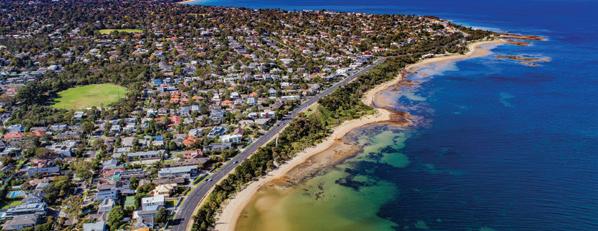
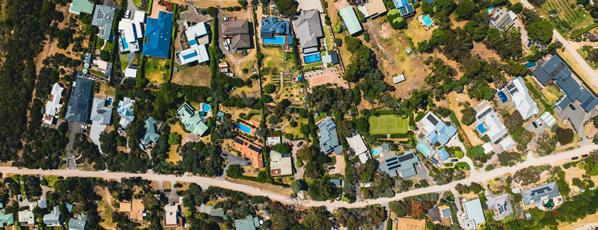
Immense volumes of drinking water are lost through leakage and a large amount of energy is expended to supply, treat and pump water throughout the network. A reduction in water leakage would not only save water, it would also help water authorities meet their carbon footprint commitments.
South East Water General Manager Digital Utilities, Andrew Forster-Knight, said, “Although Australian utilities experience a lower level of non-revenue water losses on a global scale, there are huge benefits if we can further reduce even a small percentage of non-revenue water.”
One of the biggest challenges is the ability to solve water loss at scale on aging infrastructure, while delivering permanent operational and cost-effective results. In response, the industry is transitioning to digital solutions, however the journey has not been easy.
Network leak detection to date has been managed by water authorities through various complementing
approaches, but most are manually operated, time-intensive, and do not deliver permanent network results. Other solutions can pinpoint leaks but are often not cost-effective to deploy across an entire network. To reduce costly processes and ensure always-on detection at scale there was a need for a new, more advanced solution.
SENSORS EMBEDDED INTO DIGITAL METERS
Melbourne-based water utility, South East Water, prioritised network leak detection and reduction in its digital utility program. Following research and prototyping, South East Water developed a leak detection sensor that is automated, economical at scale and simple to integrate with water organisations’ systems. In an industry-first move, Sotto® sensors are miniaturised and embedded into digital meters, making them seamless to deploy, and simple to utilise the meters’ battery and communication network.
South East Water, through its commercial subsidiary Iota, partnered with Landis+Gyr to integrate Sotto® sensors into the digital water meters they offer in Australia and other territories. The partnership led to a breakthrough for the industry – combining a sensor that monitors main and service lines continuously with the digital meter that targets customer side leaks.
Landis+Gyr’s David Maclean said utilities are starting to realise the benefits of digitisation, which Landis+Gyr has experienced worldwide.
“From our current deployments across Australia and New Zealand, we are also witnessing a transition from traditional stand-alone leak detection solutions to innovative, cost-effective technologies such as the Sotto® sensor, small enough to be integrated into meters and deployed across large parts of the network, resulting in a continuous monitoring of network leaks,” Mr Maclean said.
DETECTING PREVIOUSLY UNDETECTABLE LEAKS
A recent South East Water pilot confirmed that leaks could be detected days, weeks and even months before they emerge, while a single desktop view could help to identify and prioritise leaks daily.
An independent study confirmed that a one percent saving on NRW can be achieved by deploying Sotto® network leak detection sensors within the South East Water. The saving for South East Water, equating to 1,630ML per/annum, is realised through detecting previously undetectable leaks and early detection of existing leaks. The trial encompassed 5,100 sensors in South East Water’s Port Melbourne network.
“The year ahead is exciting for us as we continue to scale out the IoT digital reading devices across our customer and network assets, and we have only just scratched the surface regarding the insights,” Mr Forster-Knight said.
South East Water meanwhile scaled up to 14,000 Sotto® integrated digital meters, and further deployments are underway. The future vision sees South East Water with always-on network leak visibility and optimised operations that ensure repairs are performed with reduced customer disruption.
76 UTILITY • NOVEMBER 2022 WWW.UTILITYMAGAZINE.COM.AU
PIPELINE INTEGRITY & LEAK DETECTION | Sponsored editorial iotaservices.com.au

The enterprise IoT platform, developed by water, for water.

iotaservices.com.au
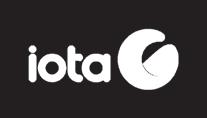
THE BUILDING BLOCKS OF THE MACINTYRE WIND FARM
by Mikayla Bridge, Assistant Editor, Utility Magazine
Construction has begun on the MacIntyre Wind Farm – the largest wind farm in the southern hemisphere – which is set to have three substations. The project has already required some unique and innovative solutions to various logistical challenges, and is set to bring significant benefits to Australia’s renewable targets and the local economy once complete.
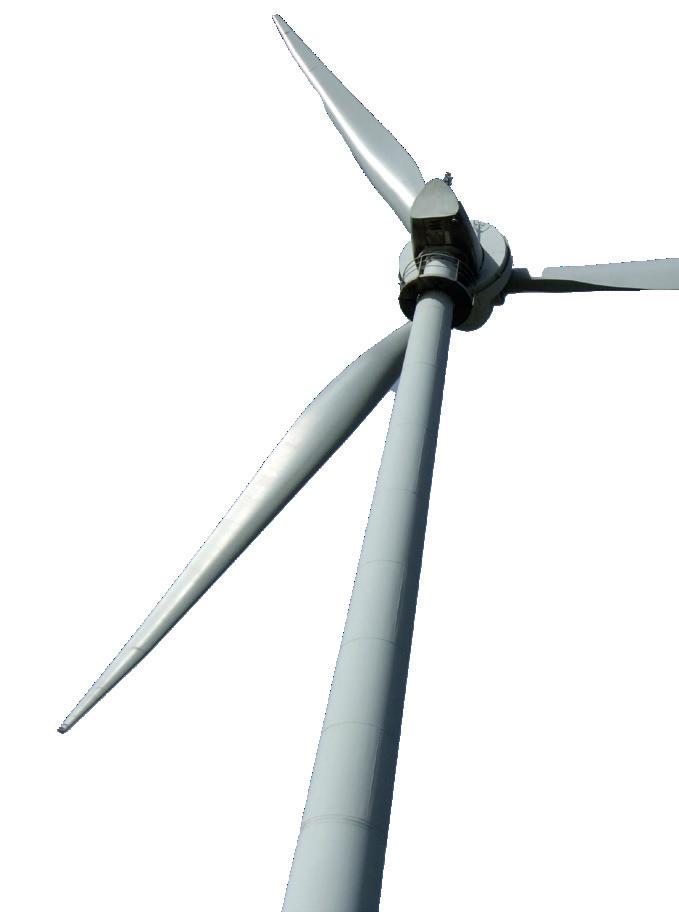

Earthworks and ground preparation began in June 2022 at the MacIntyre Wind Farm precinct, a $2 billion project that will include Queensland’s first publicly-owned and operated wind farm. In September 2022, concrete began to pour for the turbines’ foundations.
The 1,026MW project will occupy 36,000ha of leased land 200km south-west of Brisbane, will have a total of three substations, each with a power transformer, and is expected to be completed during 2024.
The precinct will consist of two wind farms: the 103MW Karara Wind Farm owned and operated by the Queensland Government’s low-emissions generator CleanCo Queensland, consisting of 18 turbines, and the 923MW MacIntyre Wind Farm owned and operated by ACCIONA Energia, consisting of 162 turbines.
LAYING THE PROJECT’S FOUNDATION
Initial works are already well underway, with current construction focusing on site access.
Director of Engineering and Construction at ACCIONA Energia, Dan Belton, said, “Initially, the work has focused on public road upgrades, developing access roads between turbines as well as earthworks to allow for the foundations to be poured. Another critical part of early work has been building the construction camp to house on-site construction crews residing at the site.
“The camp is now functioning and is a fully fitted out site for teams living on site with individual sleeping quarters, mess hall and recreational centre.”
There are also current works underway to connect the underground cables and turbines to the onsite substation.
“Various Medium Voltage (MV) reticulation circuits are installed across the site to transport energy from the turbines to the site substation. Each circuit is comprised of MV cables that are laid in trenches between each turbine, with the cables being run back to the site substations,” Mr Belton said.
“To connect cables into the wind turbines themselves, the MV cables are pulled through conduits embedded in the turbine foundations to enable termination of the cables inside the wind turbine.”
OVERCOMING LOGISTICS CHALLENGES
Expected to be ACCIONA Energia’s largest renewable energy facility, the MacIntyre Wind Farm is a new kind of step forward for renewable energy production in Australia.
However, despite the success of current works and the expectations for the wind farm’s energy production, ACCIONA Energia must overcome a number of logistical challenges.
“Logistics is one of our biggest challenges. Turbine parts are being sourced from various overseas locations and are being delivered to storage facilities in Brisbane before being transported out to the site.
“MacIntyre is the biggest wind farm in the southern hemisphere and the biggest wind farm ACCIONA Energia has ever built, but we have experienced project teams that will be able to navigate and resolve logistical hurdles,” Mr Belton said.
Mr Belton said the other major challenge will be managing the weather, as Australia’s east coast has experienced
UTILITY • NOVEMBER 2022 WWW.UTILITYMAGAZINE.COM.AU 78
TRANSFORMERS & SUBSTATIONS

unprecedented levels of rainfall in recent years due to La
“The Bureau of Meteorology has forecast another La Nina for the summer of 2022/23. Managing transportation and construction safely is our highest priority and the weather forecast will play a major role in how construction
RAISING THE BAR FOR ONSHORE WIND
Despite these logistical challenges, Mr Belton is confident that the MacIntyre Wind Farm will fortify Australia’s
“MacIntyre is raising the bar for onshore wind in Australia. The site itself will generate enough power for the equivalent of 700,000 homes. This is important for Australia’s transition to renewable energy as we seek to decarbonise our energy
Beyond the project’s immediate benefits, MacIntyre is also
“ACCIONA Energia’s focus on building strong community ties with local businesses and community groups means the project’s benefits are felt well beyond the construction of the
“Major projects like MacIntyre need to demonstrate community support in order for them to be supported by governments, and it’s critical that the community is an engaged and supportive participant in this process. If Australia is to become a renewable energy superpower, it’s vital that regional economies support these kinds of projects. Receiving this support requires a deep connection with the community which I think we’re leading the way on developing.”
SUPPORTING THE LOCAL ECONOMY
The project is expected to create hundreds of construction and operational jobs, as well as drive local businesses to supply the site’s construction. Mr Belton said as part of its development plans, at least $500 million in work is being procured from Queensland businesses.
“Recently, the site has begun pouring foundations using concrete, gravel and sand provided from local quarries and suppliers,” Mr Belton said.
“The project is also committed to supporting local communities beyond paying rates to Councils (which support local services such as parks, sports centres, libraries and roads) by implementing a comprehensive community program.”
ACCIONA Energia has committed to donating $2 million over the first ten years of the project to support local community programs, events and initiatives. To decrease the environmental impact of construction, ACCIONA Energia’s wind farms are being built on properties used for sheep and cattle livestock farming. The wind farm’s operations will not interfere with the existing use of the land, instead adding to the property’s yield.
Wind farms are also generally significant payers of rates to local councils. Wind farms generate noteworthy rate payments that are used for road maintenance, waste removal and upkeep of social spaces such as parks, sports fields, gardens, halls and libraries.
Ultimately, despite the unique logistical challenges and sourcing difficulties, the MacIntyre Wind Farm is on track to accelerate Australia’s renewable energy production and improve local economies, without disturbing local land.
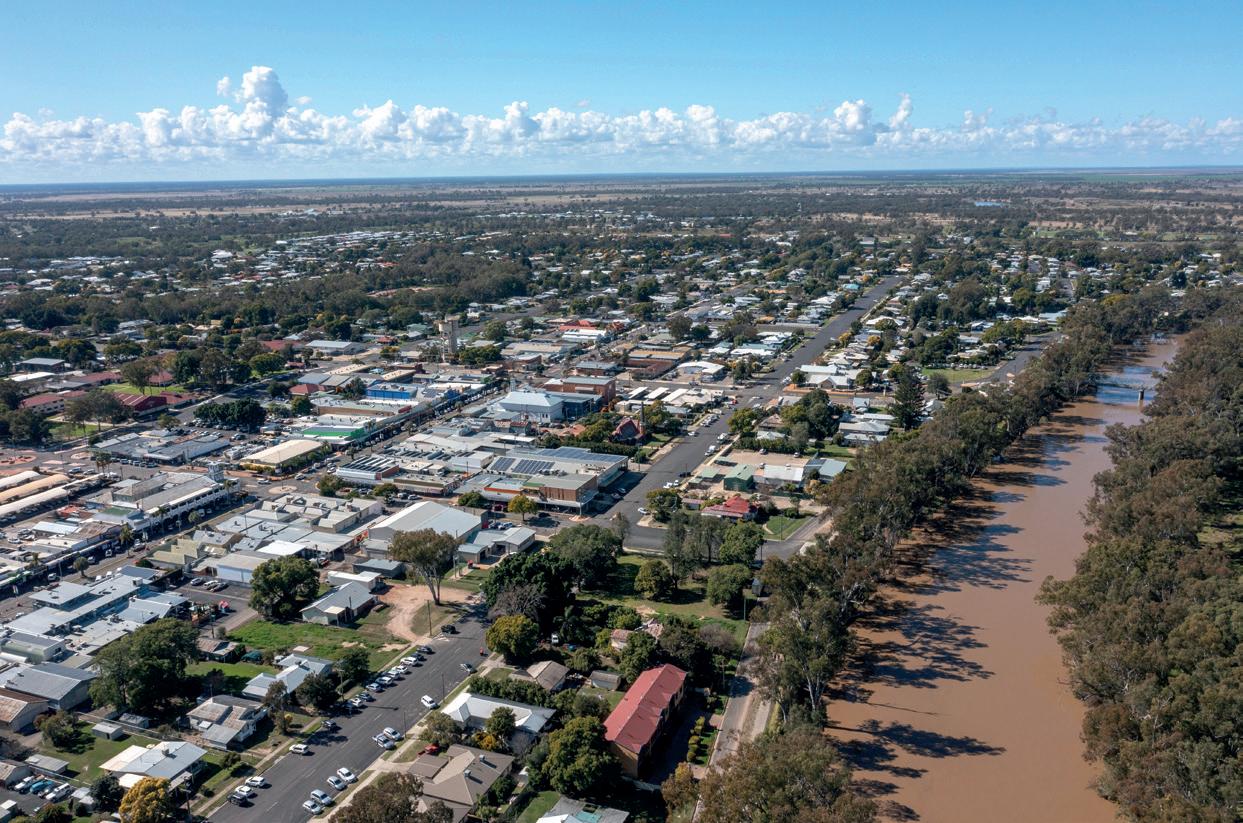
TRANSFORMERS & SUBSTATIONS
79
WORKING TOGETHER from concept to comp letio n
To deliver an affordable and reliable energy supply to Sydney, Transgrid has been undertaking major works to upgrade the city’s existing electrical supply network as part of the Powering Sydney’s Future project. Recently, Transgrid partnered with Zinfra to deliver the substation upgrades required as part of the essential project.
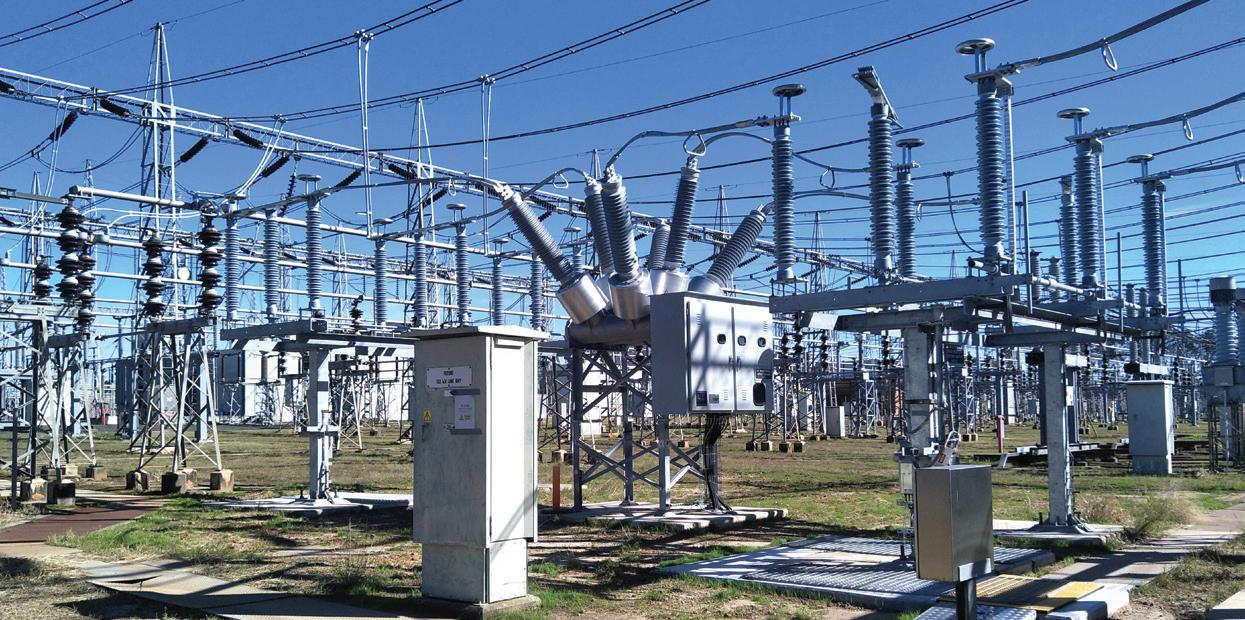
Powering Sydney’s Future involves the installation of a new 20km 330kV underground cable between Rookwood Road Substation to Beaconsfield Substation and extending the life of the existing cable from Sydney South Substation to Beaconsfield Substation by derating this cable from 330kV to 132kV.
Transgrid engaged Zinfra to modify the substations at Sydney South and Beaconsfield to accept the new 330kV cable and the derated existing cable, which included civil and electrical works, and the testing and pre-commissioning of all the control and protection systems.
Zinfra worked closely with Transgrid to solve the various problems and complete the works within the time and budgetary constraints of the project.
INNOVATIVE AND PRACTICAL SOLUTIONS
Zinfra Project Manager, Karl Littlemore, said Transgrid awarded Zinfra the contract for two reasons – their demonstration of a solid plan and their innovative design.
“During the tender negotiation process, Zinfra took the time to really try and understand the project,” Mr Littlemore said.
“We developed a detailed presentation, which showed that we had a comprehensive plan to deliver the project from start to the end, including all the network outages we'd need.
“This shown we had a good understanding of some of the challenges, one of these being ground conditions. By working with Transgrid to minimise the number and duration of outages as much as possible, this avoids unnecessary disruption to the network.”
One of the main project objectives was completing the works on time, without the need for extending outages and causing further disruptions to the electricity network.
Working within these scheduled outage windows, Zinfra and Transgrid developed an innovative approach to reduce the time needed for the network to be turned off.
UTILITY • NOVEMBER 2022 WWW.UTILITYMAGAZINE.COM.AU 80
TRANSFORMERS & SUBSTATIONS | Sponsored editorial
The design included a simple and short HV conductor connection which when disconnected disconnects one of the transformers from the 330kV network. This innovation reduces the time of an outage to isolate this transformer which again reduces risks to the network.
GROUND CONDITIONS POSING A PROBLEM
While Zinfra had previously worked with Transgrid on many other infrastructure projects and were used to the many challenges that come with working on a live electrical site, the Beaconsfield Substation posed unique problems in terms of ground conditions.
“If there was an issue on the project, we would work with Transgrid, we would raise the issue early, and then we would try and work through it with Transgrid as a partner, as opposed to a normal contractor-client confrontational relationship,” Mr Littlemore said.
PRIORITISING SAFETY
For the project, Mr Littlemore said Zinfra decided to use local crews because of their extensive experience working in substation construction.
“The majority of Zinfra employees have at least five years and most of them ten year’s experience working in substation environments,” Mr Littlemore said.
But working in the middle of the COVID-19 pandemic, Zinfra realised the importance of using local crews to ensure reliability.
With most of the crews being Sydney-based, and some from the central coast, it meant Zinfra employees could comply with lockdown orders.
“A lot of the work was done during the peak of the COVID restrictions, so the use of local personnel to minimise the potential of the spread was a key part of the project,” Mr Littlemore said.
“That just increased the need to make sure that the people who went to the project were Sydney-based.”
While some employees caught COVID during the works, there were no major outbreaks within the crews.
“Transgrid implemented a requirement that everyone be tested twice a week with RAT tests, to try and avoid a potential outbreak, and if there was an outbreak, to try and limit the spread of that outbreak,” Mr Littlemore said.
“Karl gave special thanks to his Site Managers Daniel McKenna and Ashish Banga who worked diligently to ensure that the regular (almost daily) rule changes that occurred during the peak of COVID were complied with and that the project was able to continue to progress.”
“All of the requirements resulted in no significant outbreaks on the project, which meant that we had our work crews available to deliver the project as planned.”
COMMISSIONING EQUIPMENT AND WORKING COLLABORATIVELY
Zinfra didn’t just work with Transgrid to ensure the design and construction works ran smoothly, they also performed a large part of the testing and commissioning of the installed equipment.
Commissioning is an important stage of any electrical installation project, as it ensures all the equipment will
operate correctly within its parameters and will integrate well with the rest of the network.
“The other element we brought to the project was our commissioning technicians, who have got numerous year’s experience of working in substation environments, ensuring that the equipment is operating appropriately, including the control and protection systems,” Mr Littlemore said.
The collaboration also continued into the commissioning phase of the project.
“There's a large portion of the commissioning that Zinfra perform, but there's also portions that Transgrid appropriately perform as part of the scope. The personnel worked as a single cohesive team and really did work collaboratively as one unit to get the project to be a success. The personnel

driving this team should be singled out for their enthusiasm and commitment, Sam Hubbard of Transgrid, and Agesh Sharma of Zinfra. This collaboration was found at all levels on the project from the Project Director, Colin Mayer, to the initial and final Project Managers Louise Poole and Matthew Lee.” Mr Littlemore said.
By collaborating with Transgrid from construction through to the testing and commissioning stage, Zinfra ensured that from concept to completion, the project objectives could be achieved with innovation and safety in mind.
This sponsored editorial was brought to you by Zinfra. For more information, go to: zinfra.com.au/
UTILITY • NOVEMBER 2022 WWW.UTILITYMAGAZINE.COM.AU 81
Sponsored editorial | TRANSFORMERS & SUBSTATIONS
ZINFRA’S SUBSTATION UPGRADES AS PART OF THE POWERING SYDNEY’S FUTURE PROJECT.
NEW HORIZONTAL DIRECTIONAL DRILL TICKING EVERY BOX IN HEALESVILLE
Cameron Pearson, owner of Healesville Directional Drilling, has great plans for the business after he took the reins from his father in 2021, and his new Vermeer D40x55DR Horizontal Directional Drill plays a big part in this.
Healesville Directional Drilling has been in operation for roughly 20 years, started by Cameron’s father and grandfather.
Cameron recently took the lead to continue the family legacy of working in drilling and underground excavation.
“We’ve always worked doing pole to pit work in the local Boronia area, but now we’ve got a big focus on larger projects across southeast and
northeast Victoria, which gives us a steady flow of work,” Cameron said.
“We have a contract with Downer installing underground power, and our larger projects vary between private companies and large Tier 1 contractors.”
To help support these larger HDD projects, Cameron recently purchased a Vermeer D40x55DR HDD, which he said he chose because of Vermeer
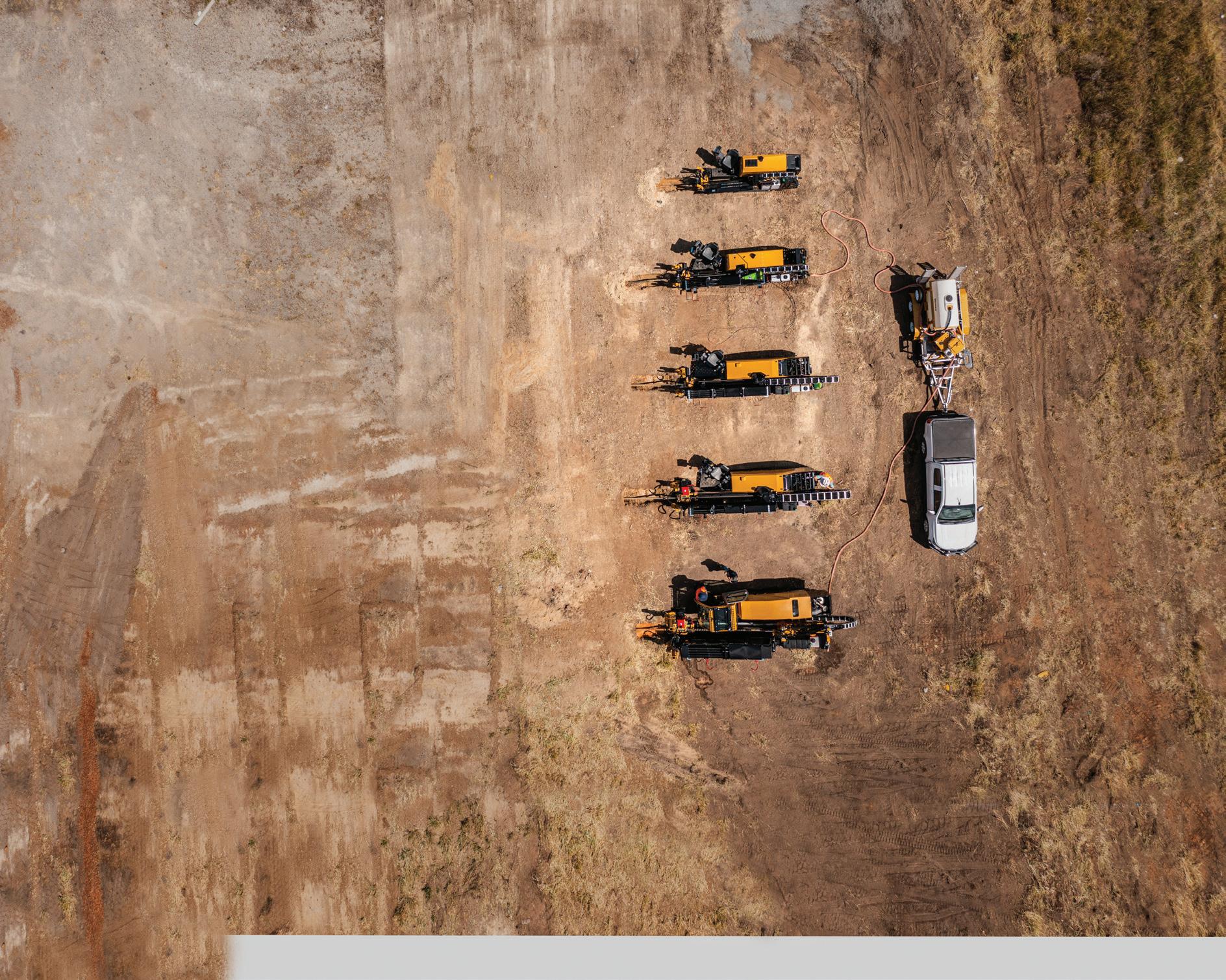
Australia’s great reputation in the industry.
“I’ve always run a competitor product, and never had any issues, but it was all I knew because it’s what I used every day. One of my mentors I was doing some work with at the time was using Vermeer and never had a bad thing to say about the machinery.
“So, when the time came to upgrade, I decided to check out what
HORIZONTAL DIRECTIONAL DRILLING (HDD) | Sponsored editorial
Vermeer had to offer. Their package suited all our current needs, and we haven’t looked back,” Cameron said.
REDUCING DOWNTIME AND INCREASING PRODUCTIVITY
Cameron said the main thing that stands out with the D40x55DR is the versatility.
“The needs for our projects can change every week, from doing 63mm diameter pipes one day to 350mm the next, all in different locations and differing conditions, but this machine ticks every box, and I can use it on the majority of our projects.
“The size of the drill and the power of it is also a standout. It has great steering capabilities in rock or hard ground conditions, and being able to simply swap from rock to clay heads in a matter of minutes drastically reduces our downtime and increases our productivity on the job,” Cameron said.
The D40x55DR features dual rod technology that uses an inner rod to provide torque to the drill bit, while the outer rod offers steering capability
and rotational torque for reaming. It has an operating weight of over 15 tonnes, power of 140hp (104.4kW), rotational torque of 7458Nm and thrust to pullback force of 20 tonnes.
Cameron said the support of the Vermeer Australia team has been as exceptional as the machine, too.
“The team has been fantastic. They’re always on the other line if I
Want
have a query, I’ve never had an issue with parts supply, and their customer support on site has been great.
“I’d love to add a bigger Vermeer to my fleet one day when the work is there, a D60x90 HDD would be great, as I love working on big projects and operating larger machines. It’s definitely a goal I’ll be working towards and looking to Vermeer to support us on.”

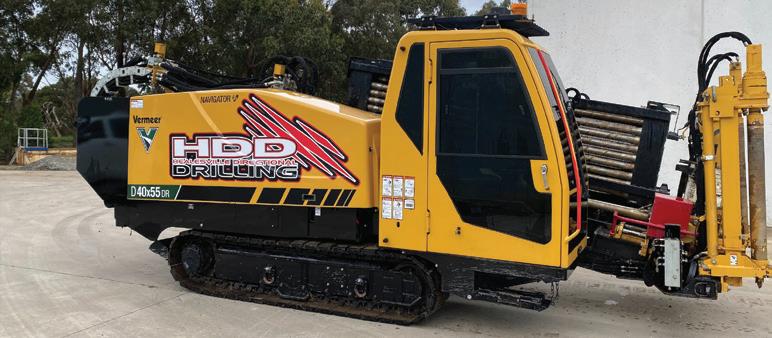
Sponsored editorial | HORIZONTAL DIRECTIONAL DRILLING (HDD)
to find out more about Vermeer’s range of HDDs?
Please visit www.vermeeraustralia.com.au.
BEATING THE ENERGY CRISIS WITH HOME ENERGY MANAGEMENT
by Julianne Tice, Buildings Policy Advisor, Energy Efficiency Council
For many of us – particularly those in Victoria – two years of stay-at-home orders has seen us spending too much time in cold, uncomfortable, and in some cases dangerously unhealthy homes, followed by bill shock at the end of winter. Concern over energy bills has only increased with Russia’s invasion of Ukraine and its impact on global gas and electricity prices. So what can be done to relieve price impacts for consumers?
When it comes to energy bills, total cost matters far more than the price per unit of energy consumed. While it’s true that total bills increase if prices rise and consumption stays the same, energy management practices can help reduce bills even as prices increase.
Most homes in Australia are rated at less than three stars out of a possible ten under the National House Energy Rating Scheme (NatHERS). To put this in perspective, a 2015 study found that upgrading pre-2005 Victorian homes with an average NatHERS rating of 1.8 stars up to five stars could potentially reduce total energy use by 45.2 per cent – a seemingly small increase with massive savings implications.
OPPORTUNITIES TO REDUCE CONSUMPTION: QUICK FIXES
Home energy management refers not just to how efficient the actual building structure (called the ‘building envelope’) and fixed appliances (i.e. heating, cooling and hot water) are, but also how energy is consumed. For example, excessive heating in winter will lead to higher energy bills regardless of how efficient the heater is – but an efficient home that reduces the need to run the heater at all will lead to lower bills.
Consumers can take a range of actions to reduce their bills. Some are quick and easy, and some require a larger time or financial commitment.
Actions to reduce energy consumption that consumers can take right now – without making any alterations to their home or buying any fancy equipment – include:
1. Using the highly efficient heater that already exists in many homes: a reverse cycle air conditioner. Though some householders use auxiliary plug-in heaters, hitting the button with the sun symbol provides much cheaper heating
2. Seal up holes and cracks in floors and walls with caulk or spray foam. Homes in Australia tend to be very leaky, causing outdoor air to infiltrate and making indoor living

spaces uncomfortable. Sealing cracks and gaps can markedly reduce the need for heating and cooling
3. Keep indoor temperatures within the recommended range: 18-20° in winter and 22-24° in summer. In winter, each degree households increase heating can increase consumption by up to ten per cent
4. Replace incandescent or halogen light bulbs with LEDs, which use 80 per cent less electricity and last much longer than older bulbs. Households in Victoria and New South Wales can access incentives for these upgrades right now
5. Maximise self-consumption of household solar PV. Households with PV can program appliances to take advantage of ‘free’ solar energy during the day, rather than export it for a comparatively tiny feed-in tariff
RETROFITS ARE NEEDED
While consumers find it easiest to manage their immediate energy usage, a greater number of solutions are available in the short and medium-term, but which involve additional effort and financial commitment.
The most important thing needed in homes to help consumers avoid rising energy costs is to improve the quality of the existing housing stock through retrofits. This includes:
• Improving insulation levels and draught proofing.
Australian homes are typically under-insulated, and uncomfortable as a result. Installing insulation in a roof space, in walls and under floors might be invasive, but the savings in terms of bills, and particularly comfort, are huge
• Replacing gas and electric resistive heating and hot water systems with efficient electric appliances.
Heat pump hot water systems and reverse cycle air conditioners are super-efficient and can provide cheap heating and hot water, even on very cold days
• Consider electrifying the home. Research shows all-electric houses can save householders thousands of dollars
84
RETAIL, BILLING & CRM
UTILITY • NOVEMBER 2022 WWW.UTILITYMAGAZINE.COM.AU
Countries already feeling the pain of the energy crisis are creating incentives to encourage these actions. In the United States, President Biden invoked an order to boost the production of heat pumps and insulation.
The European Union has introduced the REPowerEU Plan to reduce its reliance on Russian fossil fuels, recognising that ‘energy savings are the quickest and cheapest way to address the current energy crisis, and reduce bills’. And the United Kingdom introduced grants to encourage heat pump installation earlier this year.
Incentives, public and private investment, and information campaigns are all needed to encourage households to take up these improvements. But government policy can take things a step further by introducing measures to help each home reach its full potential in health, affordability and comfort. These include:
• Minimum energy efficiency standards in rental homes help ensure tenants – not just homeowners – benefit from energy efficiency
• Mandatory disclosure of home energy efficiency ratings, which help make energy efficiency visible and supports homeowner choice

• A long-term electrification plan, which would provide certainty for investors and ensure households who remain on the gas network don’t face disproportionate costs
• Continually improving building codes to make new homes zero emissions-ready will ensure they are built to the highest possible standards
Australian houses have an energy problem, and it’s time to stage an intervention. While we will need to help households manage coming bill shocks, simply offering direct financial relief will not solve the underlying issue of Australian homes requiring too much energy.
By becoming smarter with how households use energy – and helping buildings to not waste energy – there’s a chance for consumers to reduce their energy costs even as prices rise.
RETAIL, BILLING & CRM 85
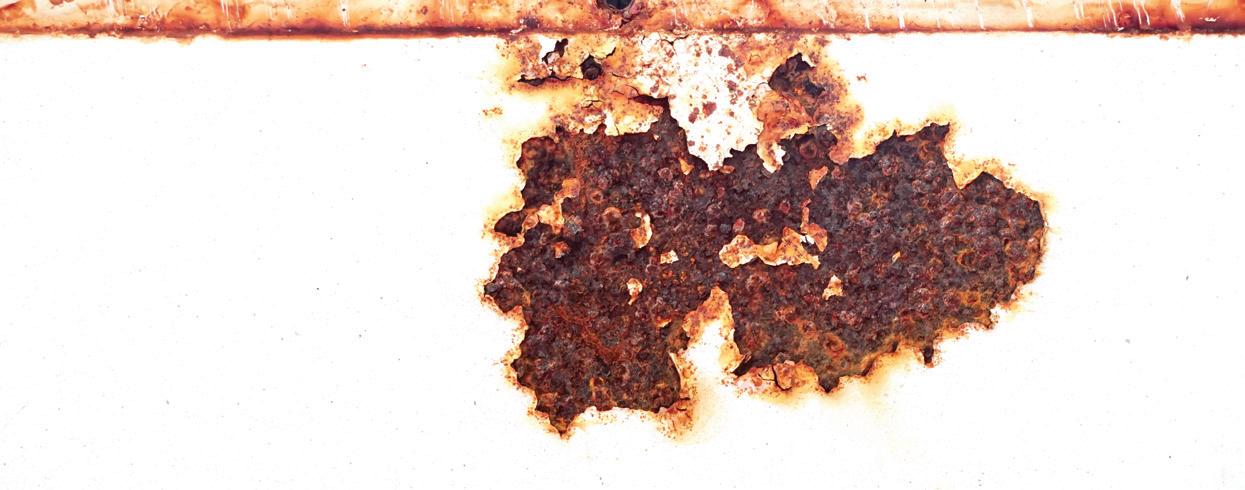
SEEING THROUGH HIDDEN CORROSION IN UTILITIES
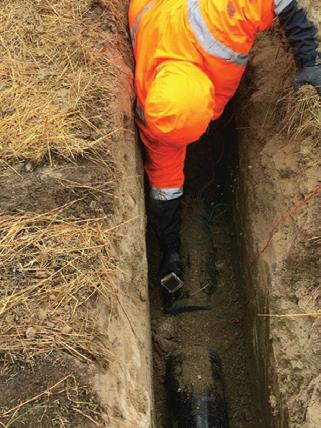
This is evident by many publicly reported catastrophic engineering structure failures, and an enormous number of unreported incidents that occurred on various utility infrastructures, especially those exposed to aggressive and varying environmental conditions.
Buried steel pipelines are typical examples of utility infrastructures that are exposed to complex and ‘invisible’ engineering environments.
by Mike Yongjun Tan, Professor of Applied Electrochemistry and Corrosion Technologies, Deakin University
Significant improvement in engineering materials, industrial standards and software has facilitated the avoidance of ‘short-term’ failure of engineering structures. However, ‘long-term’ structural failures, in particular those induced by localised forms of corrosion, still remain tenacious threats to the integrity and safety of the huge network of civil and industrial infrastructure assets.
There are millions of kilometres of pipelines around the world for transporting gases, water, sewage, slurry, beer, hot water or steam, biofuels and hydrogen over various distances. Each square kilometer of a major city could host more than 30km of buried pipes, creating tangled networks of gas lines, water mains and electrical and telecommunications cables.
Effective management and control of complex forms of localised corrosion on pipelines are critical challenges to the maintenance of utility infrastructures that are vital for the provision of the world’s essential
services and the maintenance of its economic activities.
In practical industrial environments, corrosion damage could be due to multiple and changing forms of localised corrosion, whose processes and mechanisms can vary significantly over time and location. Buried steel pipelines are affected not only by seasonal changes in soil moisture and oxygen levels, but also by fluctuating stray currents and oscillating mechanical stresses.
Offshore structures such as wind turbines and shore-crossing pipelines are affected by multi-zone and dynamically changing marine
UTILITY • NOVEMBER 2022 WWW.UTILITYMAGAZINE.COM.AU 86
CORROSION

FIELD
INSTALLATION OF CORROSION PROBES ON A GAS PIPELINE IN NORTH VICTORIA FOR MONITORING AND MITIGATING CORROSION UNDER DISBONDED COATINGS BY DEAKIN RESEARCHERS (PROFESSOR MIKE TAN, DR BOB VARELA AND DR YING HUO)
environmental conditions. Such complex environmental conditions can not only lead to changes in corrosion rates, but also in corrosion characteristics, mechanisms and patterns. In some cases, other factors such as microbiological activities in soil and ocean could add further complexity to corrosion processes and mechanisms.
HOW TO DETECT INVISIBLE CORROSION
A prerequisite to effectively managing these complex forms of corrosion on buried and submerged pipelines is sufficient corrosion data that provides information about where and how fast it is occurring. Such corrosion data is essential for engineers to alert risks, predict asset maintenance needs, select efficient corrosion control technologies, and monitor the effectiveness of corrosion control methods and materials such as protective coatings, cathodic protection and corrosion inhibitors.
Knowledge of the status of pipeline corrosion is also important for the owners of an engineering asset. Such knowledge would enable owners to prioritize site survey and inspection operations, and to develop maintenance strategies to manage pipeline assets, to predict long-term remnant pipeline life.
For instance, accurate determination of the location of critical localised corrosion would assist pipeline owners to plan the dig-up inspections of unpiggable pipelines, which is an expensive operation, and it is important from asset management perspective to increase the accuracy of identifying dig-up locations.
Unfortunately, such corrosion data is often unavailable. It has been recognized that there is a serious lack of corrosion and materials degradation information on these ‘invisible’ structures, impeding their timely maintenance and protection. In current industrial practice, routine inspection is the most widely used method for
identifying localised corrosion on engineering structures.
Risk-based and time-based inspection and fitness-for-service assessments are common methods for the integrity management of engineering structures. These approaches may not be sufficient for detecting, predicting and managing complex localised corrosion under dynamic changes in corrosion environments, mechanisms and kinetics. There is a need for more convenient, reliable and economic asset inspection and management technologies.
THE FUTURE OF CORROSION TECHNOLOGY
An ‘ideal’ corrosion sensing and control system should be one that not only provides in-situ and site-specific corrosion data required to visualise localised corrosion, but also to use such data to inform corrosion prediction and control. For instance, to guide local coating repair and to regulate local cathodic protection potential and corrosion inhibitors injection.
In this manner, the threat of localised corrosion to the integrity and safety of engineering structures would be minimized and the safe operational life of infrastructure would be maximised. Considering the variable nature of corrosion environments and mechanisms in practical engineering structures, corrosion management and prevention actions may need to be adjusted, based on the prevailing corrosion condition and mechanism.
A prerequisite for effectively doing so is timely knowledge about the initiation, propagation and seriousness of localised corrosion occurring over an engineering structure. In order to meet this need, a novel corrosion probe/sensor has been developed by the Deakin University corrosion research team, supported by the Energy Pipelines Cooperative Research Centre and Future Fuels Cooperative Research Centre.
The corrosion probe was developed for in-situ and site-specific corrosion data acquisition that has enabled the in-situ measurement and monitoring of difficult-to-measure forms of localised corrosion.
UTILITY • NOVEMBER 2022 WWW.UTILITYMAGAZINE.COM.AU 87
CORROSION
The function of the localised corrosion probe could be compared with that of sensors for monitoring human health through detecting, diagnosing and preventing cancer and other diseases. The human body itself has many ‘sensors’; the eyes, ears, nose, skin and tongue. These provide disease information through vision, hearing, smell, touch and taste.
Diseases can be further diagnosed and treated through medical testing, doctor’s analysis and the use of various medical treatments. For engineering structures, unfortunately such ‘sensors’ are not naturally available. Therefore, it is essential to have artificial devices installed for sensing structural health issues, such as complex forms of localised corrosion - which is the prime threat to the integrity of metallic structures.
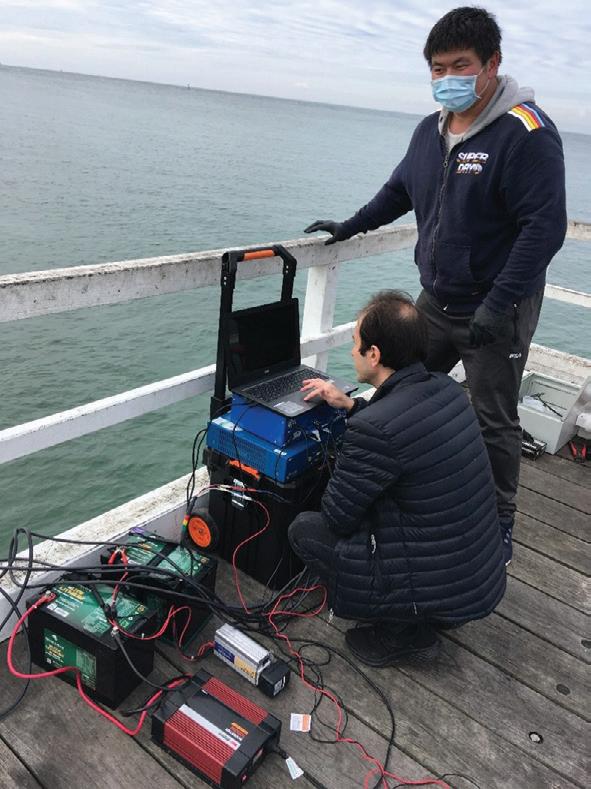
THE APPLICATION OF THE CORROSION PROBE FOR MONITORING STEEL PIPELINE CORROSION IN THE OCEAN BY THE DEAKIN RESEARCHERS (DR MAJID LALEH AND DR YING HUO)
Corrosion monitoring would make more effective application of corrosion control technologies, such as cathodic protection, coatings and inhibitors which have been widely used to mitigate corrosion. Cathodic protection is probably the most common and effective technology for protecting buried and submerged steel structures from corrosion.
A buried steel pipeline is considered to be fully protected from corrosion if it is cathodically polarised to a ‘standard’ potential of -850 mV vs copper/copper sulphate reference electrode. Unfortunately, in engineering practice, the protectiveness of cathodic protection can be impaired under complex and dynamically changing environmental conditions.
Examples include steel pipelines buried in inhomogeneous soil under the effects of seasonal changes in soil moisture and oxygen levels; cathodic protection disruption; nonuniform coating defects and cathodic shielding under disbonded coatings; fluctuating stray currents and oscillating mechanical stresses.
OVERCOMING COMPLEX CORROSION CHALLENGES
These complex environmental variables create major challenges. For this reason, cathodic protection design and application are often considered in industry to be an ‘art’ rather than ‘science’.
The application of the corrosion probe over the past decade has also enabled an unambiguous
understanding of the effects of complex environmental variables on cathodic protection efficiency in order to address major issues in existing cathodic protection criteria and industry standards.
Supported by the Energy Pipelines Cooperative Research Centre and Future Fuels Cooperative Research Centre, Deakin University research team has made major efforts to understand the effects of intermittent cathodic protection and stray currents on cathodic protection efficiency, a persisting issue for decades, by means of the development and use of innovative testing and monitoring methods.
This research has also facilitated major findings on the effects of coating disbondment and cathodic protection shielding on steel pipeline corrosion, a prime corrosion issue on aged gas pipelines.
The ultimate goal of corrosion science and engineering would be to prevent the premature failure of engineering materials and to extend the safe operational life of engineering structures. This includes various utility infrastructures through detecting, mitigating and minimizing corrosion damage.
Industrial application of effective corrosion monitoring sensors and probes will lead to wider availability of real time corrosion data which, in conjunction with data analytics and artificial intelligence technologies, will enable much more reliable corrosion prediction, control and management systems.

UTILITY • NOVEMBER 2022 WWW.UTILITYMAGAZINE.COM.AU 88 CORROSION
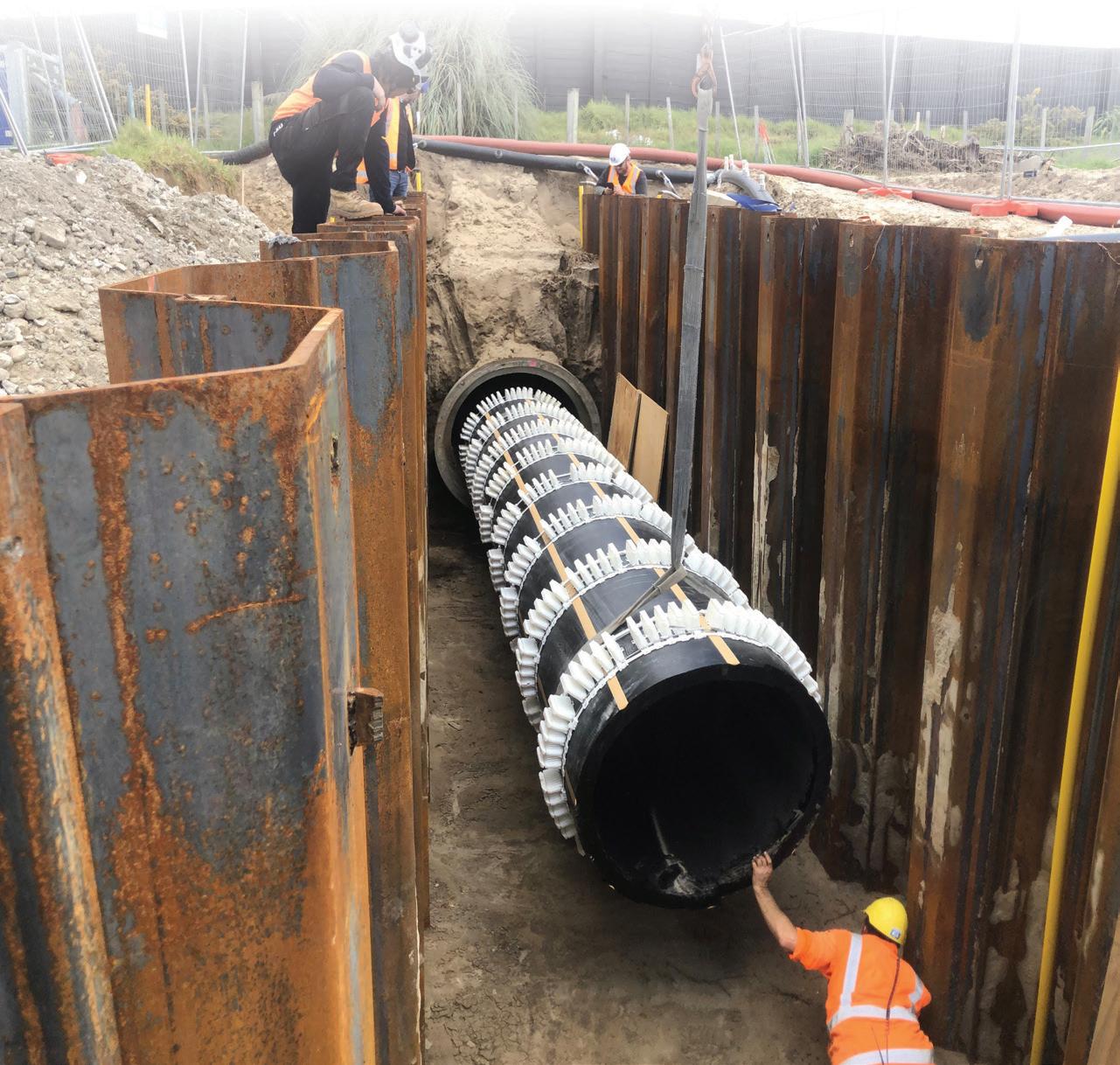
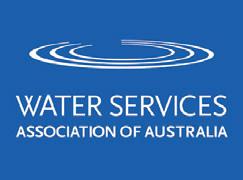
Is your pipe spacer compliant? Call us for details on ordering P (08) 9725 4678 sales@kwikzip.com www.kwikzip.com The only casing spacers successfully appraised by WSAA HDX and HDXT KWIK-ZIP’S HDX & HDXT CASING SPACERS COMPLY WITH WSAA PRODUCT SPEC #324 - CASING SPACERS; REFER WSAA PRODUCT APPRAISAL REPORT #1523
What are some of the new innovations increasing capabilities in the microtunnelling industry?
As new technologies and innovations emerge in the microtunnelling industry, contractors’ capabilities to meet some of the industry’s toughest challenges continue to grow. For example, very hard rock used to result in most contractors turning down projects or stopping a job part way through when they unexpectedly hit these conditions. This is because most microtunnelling tools struggle to drill through very hard rock and install a pipeline to specifications, but new cutting-edge trenchless equipment can now do so with high precision. This is only one example, there are a number of new technologies that are helping to pave the way for the future of microtunnelling.
AIR HAMMER DRILLING TOOL
The air hammer is a new technology, ideal for use in high strength rock as it allows contractors to take on jobs that they would previously have avoided. The new technology is based on a new pneumatic rock hammer – which uses air driven hammers (similar to vertical DTH heads), with a pilot line guiding the head to maintain accuracy.
The air hammer was developed to meet the increasing need for drilling rock on fine grades and a lack of options available to do so with high rates of success and/or time and cost efficiency. It also provides environmental and workplace health and safety benefits, by enabling small to medium size pipe diameters to be installed in hard rock faster, with a significant reduction in spoil removal
and truck movements compared to open cut methods.
This equipment can handle a variety of tricky conditions, and install pipelines of various diameters (100 to 3,000mm), whilst maintaining accuracy, productivity and efficiency while also providing environmental and health safety benefits.
It can be operated via the next generation AXIS drill rods with a power enhancing driver, and has been tested and proven with the extra heavy rods of the AdaptX – a new machine on the market with unparalleled capabilities, manufactured by Bournedrill.
RITELINE
A new spacer innovation that is purpose-built to improve the accuracy of trenchless pipeline installations, Riteline casing spacers assist the carrier pipe during installation by maintaining its position relative to the bored hole or encasement pipe. The spacer’s design means its height can be adjusted from 30mm up to 125mm, allowing multiple configurations from the one unit.
Riteline’s adjustable design means contractors who use them don’t need to have multiple products on hand – they can be installed to suit the project’s needs, even if requirements change at the last minute.
Unlike other spacers on the market, they are also spring-loaded, which means you can adjust the tension as required, and they flex when they hit rock – so they won’t break. This also removes the issue of them floating when grouting takes place.
ABOUT STUART HARRISON
ADAPTX
Most drilling machines are only capable of utilising one or two drilling techniques. However, there is a new drilling machine on the market that boasts capabilities that are unmatched across the globe. AdaptX is a modular drilling platform that allows the contractor to use most drilling techniques all in the one machine, including: vacuum, pressure air vacuum, slurry, HDD, displacement pilot, auger boring, bed boring, box culvert jacking and canopy tunnel drilling.
This gives contractors more options for different methods all in the one machine, allowing them to not only take on more jobs but be flexible on the job site if unexpected circumstances occur to ensure the best method for the job is used.
SCOPE FOR MORE INNOVATION
These exciting new tools are unlocking many new opportunities for contractors and there is still a lot of scope for evolution in the microtunnelling industry. As more companies find new ways to get the job done and equipment capabilities continue to expand with new technology, confidence in trenchless installation will build and more contractors will be able to take on more jobs.
Global microtunnelling pioneer Stuart Harrison is the Managing Director of Edge Underground, where he specialises in on-grade microtunnelling installations with millimetre accuracy.
Stuart is also the inventor of the AXIS Guided Boring system, and he is constantly working to improve the effectiveness of this and other trenchless systems used in the installation of gravity sewers.
To discuss your next microtunnelling installation, contact Stuart on 1300 JACKED or at stuart@edgeunderground.co
90 UTILITY • NOVEMBER 2022 WWW.UTILITYMAGAZINE.COM.AU

Want to reach utility industry decision makers?
In B2B, the sales cycle is long. You’ll always have people at different stages of the buying cycle, so your marketing needs to be always on.

Decision makers in the utility industry gain information from a wide range of sources. The team at Utility are able to provide a complete range of marketing solutions:
● Brand building
● Educating the market
● Generating leads
● Creating engaging content
● Managing your social media and SEO
● Setting up marketing funnels
We also have a team of editors, designers and marketing experts who specialise in the energy sector and can help make the most of your campaign.
Scan this code to learn how we can help you ensure your marketing is always on.
www.utilitymagazine.com.au

MAY 2023
AUGUST 2023
NOVEMBER 2023
MAJOR FEATURES RENEWABLES
MANAGEMENT
BILLING & CRM
UTILITY • NOVEMBER 2022 WWW.UTILITYMAGAZINE.COM.AU SECTION 92
Advertisers’ index Access Detection 15 Altavec 39 AMS Instrumentation & Calibration 53 Aptumo 7 Compliance Quarter 23 Daly's Constructions 48 Denso (Australia) 35 Edge Underground 11, 90 Enviroline Group 73 FMT-Field Machine Tools IFC Gentrack 28 Greentech 43 Harcor 8 InEight 47 Interflow 75 Iota Services 77 Itron 59 KPMG OBC Kwik-Zip 89 Lanco Group 17 Madison Technologies 13, 22 Metasphere Australia 69 Monkey Media 91 NBN Co 29 NHP Electrical Engineering Products 65 Pezzimenti Trenchless 46 Polymaster 9 Projex Group 12 Rimco 52 Toolkwip Pumps 16 VEGA Australia 19 Veolia Water Technologies (Australia) 10 Vermeer Australia 82 we-do-IT 21 WIOA IBC Yokogawa Australia 36, 63 Zinfra 80 EVENT DISTRIBUTION (TBC)
EDITORIAL SCHEDULE
MAJOR FEATURES WATER OPERATIONS AND TREATMENT STORMWATER ASSET MANAGEMENT SMART GRIDS SPECIAL FOCUS GAS PIPELINES TRENCHLESS TECHNOLOGY IoT AND SCADA WASTE MANAGEMENT IRRIGATION EQUIPMENT & MACHINERY PIPE & CONDUIT PUMPS, VALVES & FILTERS SALES DEADLINE 23 JUNE 2023 MAJOR FEATURES BIG DATA CYBER SECURITY SOLAR SYDNEY WATER SPECIAL FOCUS MAPPING, GIS & SURVEYING UTILITY LOCATION SEWER REHABILITATION EMBEDDED NETWORKS DISTRIBUTED GENERATION CUSTOMER EXPERIENCE EQUIPMENT & MACHINERY DRONES SWITCHGEAR FEBRUARY 2023 SALES DEADLINE 2 DECEMBER 2022
WATER MANAGEMENT DEMAND MANAGEMENT ENERGY NETWORKS SUSTAINABILITY SPECIAL FOCUS INSPECTION, CCTV & CONDITION ASSESSMENT MOBILITY VEGETATION MANAGEMENT ENERGY STORAGE FUTURE FUELS EQUIPMENT & MACHINERY SMART METERS MICROTUNNELLING SALES DEADLINE 31 MARCH 2023 EVENT DISTRIBUTION (TBC) WIOA QLD OZWATER LOCATE23 EVENT DISTRIBUTION
MAJOR FEATURES
WIOA NSW
DISASTER
SPECIAL
LAND
TRANSFORMERS
PIPELINE
SAFETY DAMS EQUIPMENT & MACHINERY HORIZONTAL DIRECTIONAL DRILLING (HDD) SALES DEADLINE 15 SEPT 2023 EVENT DISTRIBUTION WIOA SA WIOA VIC
CORROSION RETAIL,
FOCUS
ACCESS
& SUBSTATIONS
INTEGRITY & LEAK DETECTION


Anyone involved in the operation and maintenance of water industry or related infrastructure would benefit from attending these conferences. A great forum for all involved in water operations to:
• Listen and learn from the experience of others through the technical presentations
• View and discuss technical equipment, products, and services with suppliers
• Update your knowledge and skills through interaction with other water industry personnel

QLD 19 & 20 JULY SUNSHINE
SA 1 & 2 MARCH MURRAY BRIDGE NSW 1 & 2 NOVEMBER CANBERRA VIC 29
30
2023 Water Industry Operations Conference & Exhibitions
COAST
&
MARCH BENDIGO
SAVE
www.wioaconferences.org.au info@wioa.org.au 03 5821 6744 BE COVIDSAFE
THE DATES





















 HOUSTON KEMP.
HOUSTON KEMP.














































































































































 by Rebecca Todesco, Journalist, Utility Magazine
by Rebecca Todesco, Journalist, Utility Magazine




























































































